


























This week, Jay Schottenstein celebrated 30 years of his company, American Eagle, being publicly traded by opening the markets at the New York Stock Exchange. But instead of the tradition of ringing the opening bell, Mr. Schottenstein ascended to the podium with a shofar in hand and marked the milestone with the blowing of the shofar. He told the audience that the shofar is about “awakening” and that it is fitting to blow it during this month when we anticipate the Jewish new year.
It’s sometimes hard to truly feel that the shofar is there to awaken us. After all, those who go to shul during Elul hear it every day. Are they fully concentrating on those sounds each morning? Are those vibrations shaking their souls? Or is it something that they hear with half an ear, as they zip up their tallis bags and head for their cars on another busy morning?
We know that the power of the shofar is so deep, so powerful that we can’t truly comprehend the enormity of the sounds we hear. But we are told to listen and try, to the best of our ability, to dig deep and access the ability within us to awaken our souls during this time.
Sometimes it’s not the sound of the shofar that can shake our souls. When we heard the news this week of thousands
of explosives that denotated across Lebanon in the form of pagers worn on the belts of Hezbollah terrorists, many of us marveled at the chutzpah and ingenuity of the Jewish state. To pull off such a monumental operation was clear genius. But how many of us heard those blasts and saw the Hand of G-d? How many of us were aware and awed that this all came from Hashem? Yes, Israel may have carried out this attack, but if Hashem didn’t will it to be successful, it wouldn’t have worked.
Perhaps the blasts in Lebanon can be a wakeup call, a reminder, to acknowledge and remember that Hashem is control. It’s not the army; it’s not the generals; it’s not the prime minister or the president. It’s Him and Him alone upon whom we can rely.
There’s no greater message than this during the month of Elul. As we look around, there are so many messages that can shake our souls. There are so many sounds of the shofar in our everyday lives that we can feel and hear if we take the time to pause, listen and reflect on how they came to be.
The sound of the shofar can be everywhere if we just stop a moment to truly listen.
Wishing you a wonderful week, Shoshana

Yitzy Halpern, PUBLISHER publisher@fivetownsjewishhome.com
Yosef Feinerman, MANAGING EDITOR ads@fivetownsjewishhome.com
Shoshana Soroka, EDITOR editor@fivetownsjewishhome.com
Nate Davis
Editorial Assistant
Nechama Wein
Copy Editor
Rachel Bergida Shana Brecher
Lani White
Design & Production
Gabe Solomon Distribution & Logistics
P.O. BOX 266
Lawrence, NY 11559
Phone | 516-734-0858
Fax | 516-734-0857
Classified Deadline: Monday 5:00PM classifieds@fivetownsjewishhome.com text 443-929-4003
PAYMENT VIA CREDIT CARD MUST BE SUBMITTED ALONG WITH CLASSIFIED ADS
The Jewish Home is an independent weekly magazine. Opinions expressed by writers are not necessarily the opinions of the publisher or editor. The Jewish Home is not responsible for typographical errors, or for the kashrus of any product or business advertised within. The Jewish Home contains words of Torah. Please treat accordingly.












Dear Editor,
There’s a famous tale about a farmer who finds his living conditions unbearable, as there’s little room to house his family. He sought advice from a rabbi. The rabbi told the farmer to move one of his animals into the house. The farmer was perplexed but did as the rabbi said. He came back to the rabbi and said things were worse. The rabbi said to add another animal. In the end, after the farmer brought many more animals into his house and was suffering unbearably, the rabbi told him to remove all of the animals at once. Suddenly, the farmer felt wonderful and informed the rabbi that things are great and he has so much room in the house now.
Who doesn’t, at least once in their life, desire the other life? We think, if only the circumstances were different, we would reach a state of full happiness. But life is about what we have and knowing it’s the best possible scenario.
Someone once came up to me and asked if I realize that I’m a son of a king. With Rosh Hashana approaching, we should realize we are children of G-d Who endowed us with what we need to succeed.
Steven Genack
Dear Editor,
I cannot understand why Avi Herz’s

review of Donald Trump’s only debate against Kamala Harris parroted Republican talking points that the moderators were skewing the conversation in a negative light towards Trump. When the former president repeated the blatantly racist canard about Haitian immigrants eating pets in Ohio, should the moderator have stayed silent? Was the Springfield police chief wrong in calling out this lie? Polls have shown that more Americans regard Harris as the winner of that debate and Trump’s refusal to debate her again speaks for itself.
You can support Donald Trump for his pro-Israel policies, social and economic conservatism without excusing his racist views.
On a related note, how did your editorial board manage to publish a letter last week alleging that Adolf Hitler’s father was a Jew? There is no evidence to this, but as his party’s chief propagandist said, a lie repeated often enough is taken as the truth.
Sergey Kadinsky West Hempstead, NY
Dear Editor,
I am very disappointed that your paper printed George Richard’s non-factual letter comparing the current day America to Germany of the 1930s.
To begin, Hitler, ym”sh, was not born
Continued on page 14
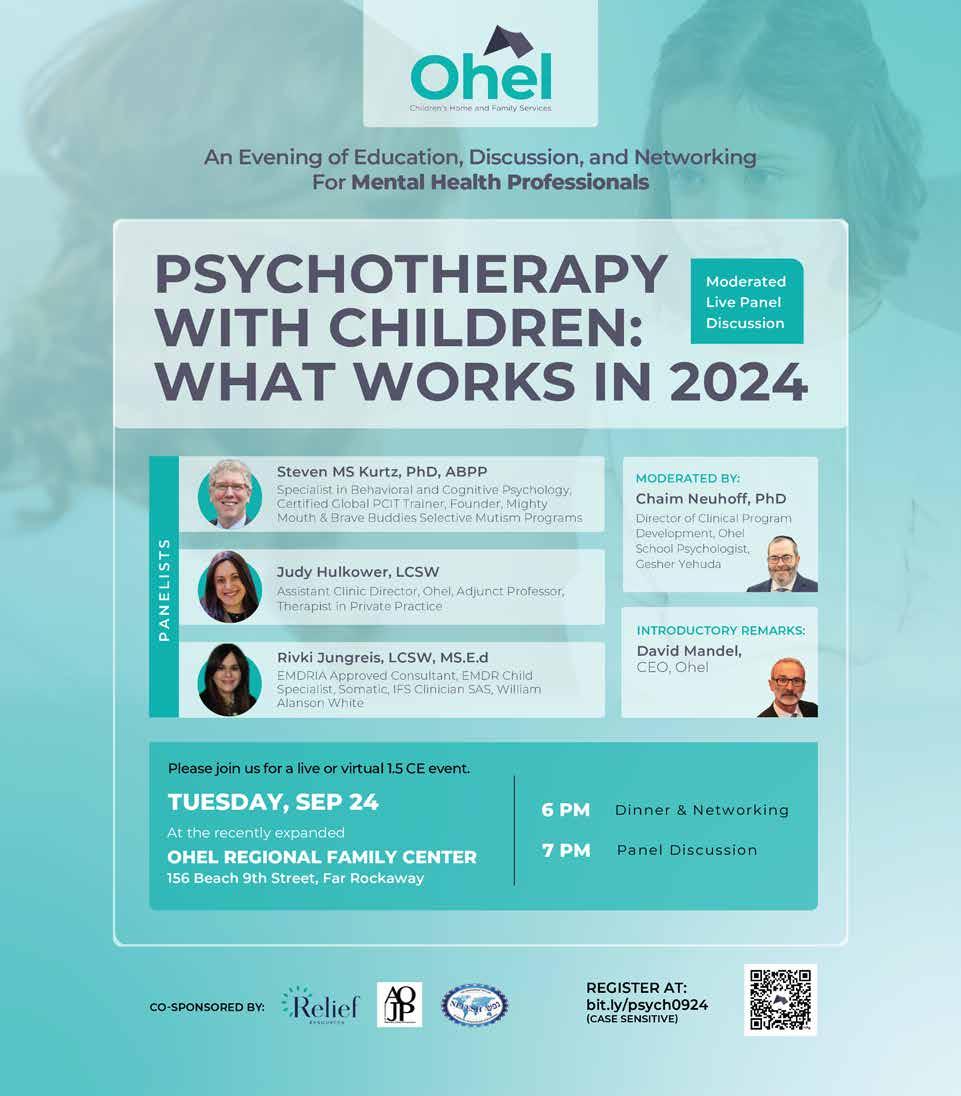
illegitimately; his mother and father were second cousins. Neither is Trump illegitimate as alleged by George Richard. Trump’s parents were married; his father Fred Trump built a synagogue in Brooklyn where for many years he attended their annual fundraising dinner. Donald Trump was the honorary Grand Marshall of the annual Salute to Israel Parade and consistently bought Israel Bonds. Whereas there may have been a very small number of Jews who voted for the Nazis, 99.99% voted for other parties in the elections which proceeded the German Nazi dictatorship. Unlike majority of the American Jews who vote consistently for Democrats without understanding that the leadership of the party – note that the Governor of Pennsylvania would have been selected by Kamala Harris as her Vice-Presidential candidate if he was not Jewish – German Jews fully understood what the Nazis stood for.
The rise in antisemitism has nothing to do with Trump or the Republican Party or those who are on the right of the political spectrum. The rise in antisemitism in the 21st century is almost exclusively originating on the left and from now mainstream elements of the
Democratic Party – witness that Kamala Harris, Nancy Pelosi and 30 Democratic congressmen/senators refused to attend the speech of the Israeli prime minister in July.
I do not know who George Richard is or if he really exists. In the future, I, along with many of your readers, would appreciate that any letters printed have facts verified.
Peter Katz
Dear Editor,
This letter is in response to George Richard’s letter in last week’s edition of The Jewish Home. Regardless of where you stand on the political spectrum, comparing Trump and his ilk to Hitler and the Nazis, ym”sh, is one of the most distasteful and repulsive things I have ever had the displeasure of reading. It’s an absolute disgrace to the Holocaust and the six million kedoshim who were murdered al kiddush Hashem. Everyone knows that it’s a cardinal rule in the realm of politics that you never compare anything to Hitler or the Holocaust, because it’s almost always the case that such comparisons seldom bear any resemblance to each other, and that’s certainly the case with

President Trump and his supporters. Accordingly, I implore everyone, regardless of your political affiliation and views, to tone down your rhetoric, and to refrain from making these absurd and preposterous comparisons that have no basis in reality whatsoever.
Rafi Metz
Dear Editor,
Shabbos Kestenbaum was an avowed “progressive” who voted in all elections through 2023 for Democrats. A Harvard graduate student who wears a yarmulke, he explained that he believed in progressive ideas until the Democrats refused to the address the antisemitism issue. The Republicans invited him to speak at the Republican Convention, but he did not endorse President Trump for a second term at that time, hoping to keep antisemitism a bipartisan issue. Subsequently, he tried to engage Democrat leaders from Hakeem Jeffries, Minority Leader in the House of Representatives, to Chuck Schumer, U.S. Senator, to no avail. Schumer has even blocked a bill that would have taken some initiatives regarding antisemitism on campuses. Mr. Kestenbaum was contacted by Republicans from Mike Johnson, Speaker of the House, through Jason Smith, House Ways and Means Chairman, for his ideas on fighting antisemitism. He was not invited to give a speech at the Democrat Convention.
Republicans also sent a letter to 10 college campuses that requested information on how they were going to keep Jewish students safe. Since being embraced by Republicans who made it clear that antisemitism would not be tolerated, Mr. Kestenbaum has decided that Democrats are not interested in fighting antisemitism. He has decided to leave the Democrat Party and vote for Trump. You can see the speech that he gave at the Convention for Jewish Republicans on Instagram at “shabboskest and let_ my_people_know.” He, along with other prominent Democrats, such as Tulsi Gabbard, Robert F. Kennedy, Jr., Elon Musk, have decided that President Trump is far better for America than Vice President Kamala Harris and Tim Walz making their Democratic ticket the most far left in U.S. history.
Jan Henock Woodmere, NY
Dear Editor,
This past Sunday, which was a beautiful day for an outing on Central Ave, was disrupted by the pro-Hamas protesters
on Spruce Street. They had the nerve to come to our local shopping avenue and terrorize Jewish people by shouting hateful speech and holding up antisemitic signs. This is the second time YILC has hosted an Israel event which was disrupted by these pro-Hamas protesters who don’t belong in our Jewish neighborhood. Most of Spruce Street was closed off, which caused even more traffic than usual and was an inconvenience to drivers and pedestrians. I passed by the scene multiple times while shopping and saw young children who looked scared and confused. How does Nassau County permit this?! If this hate was done to any other group of people there would be more outrage and the County would put a stop to it immediately.
A Reader
Dear Editor,
This is to address the young man who is dating a woman whose two brothers are no longer frum. He is concerned about this fact. But I see this as a bonus. This girl has clearly lived through a challenging situation. There were certainly stressful times in her home, when the parents and the family realized that their children were going off the derech. And yet, she has remained frum and strong. That speaks loudly about her values. This is definitely something that should be discussed while dating. Talk to the young woman. Ask her about how it affected her – was she scared, angry, confused, hurt? How did her parents handle the situation? Is she still close to her brothers? Were they hurt by someone? Talking about this will bring you two closer and will give you insight into the person who are dating. She is obviously a very special girl; you should get to know her better.
Sincerely,
Ruti Kramer
Dear Editor,
People cross dangerous streets while holding a cell phone and talking on it. Some do so even when pushing a baby carriage with the other hand. It is dangerous.
On the upside, a crossing guard told me that so many people make eye contact with him before crossing. This is also very important for safety as it is an important form of communication with the one in charge of safety.
Sincerely,
Rabbi Eli Wright Lakewood, New Jersey






Russian state media broadcaster RT and other Kremlin-controlled networks have been banned by Meta. The parent company of Facebook and Instagram announced the ban on Monday, claiming that the outlets have engaged in deceptive influence operations and attempted to evade detection.
“After careful consideration, we expanded our ongoing enforcement against Russian state media outlets. Rossiya Segodnya, RT, and other related entities
are now banned from our apps globally for foreign interference activity,” a Meta spokesperson said.
Prior to Monday’s ban, RT had 7.2 million followers on Facebook and 1 million followers on Instagram.
The move comes days after the U.S. Justice Department announced charges against two RT employees for funneling nearly $10 million into a U.S. company to create and amplify content that aligned with Russian interests.
After the Justice Department announcement, RT responded with mocking statements that did not address the specifics of the U.S. allegations.
The Justice Department indictment was just one piece of the recent U.S. government crackdown on RT and other Russian state puppets. Secretary of State Antony Blinken on Friday accused RT’s leaders of running an online crowdfunding effort to supply military equipment to Russian soldiers in Ukraine.
This week, David Lin, a U.S. citizen who had been held by China since 2006,
was released by the Chinese government. The 68-year-old had been behind bars serving a life sentence for what the U.S. government said were bogus charges of contract fraud.
Lin’s daughter, Alice, said that she was notified of her father’s release on Saturday and that he was expected to land in San Antonio, Texas, on Sunday.
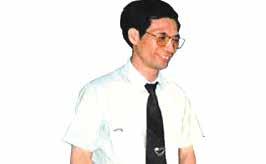
“No words can express the joy we have — we have a lot of time to make up for,” Alice said.
Lin entered China in 2006 and attempted to establish a Christian training center in Beijing. China‘s Communist Party disapproves of such activities and routinely roots out underground Christian churches, seeing them as a threat to its power. Only officially-sanctioned, closely monitored churches are permitted under the Communist Party’s rule.
Lin was detained the same year he ar-
rived. He was handed a life sentence after being convicted of fraud in 2009. The charge is often applied to home church leaders who try to raise money for expansion, according to the Dui Hua Foundation human rights group.
The release of Lin — who is one of three U.S. citizens that the State Department considered to be unjustly jailed in China — marks a breakthrough in a longstanding bilateral irritant that has defied resolution for years. “The Chinese first agreed to release him in a meeting between Secretary of State [Antony] Blinken and [Chinese Foreign Minister] Wang Yi in Laos” in July in a meeting on the sidelines of an ASEAN-related ministerial meeting, said a U.S. official.
The timing of Lin’s release — just weeks after national security adviser Jake Sullivan’s meetings with Wang in Beijing — suggests that Sullivan also played a role in bringing Lin home.
“I know that Jake Sullivan did raise my dad’s case,” Lin’s daughter said.
California Gov. Gavin Newsom unsuccessfully pressed for Lin’s release when he visited China in October. Newsom came home with the message from Chinese authorities that Lin would remain behind bars ”through April 2029.”
Two other Americans, Mark Swidan


22 and Kai Li, are also jailed in China unjustly, according to the U.S. State Department. Swidan was detained in China in 2012 and was later convicted by a Chinese court of manufacturing and trafficking drugs and sentenced to death. Li was detained in Shanghai in 2016, charged with espionage and stealing state secrets, and was sentenced to 10 years in prison.
“Our hope is that David’s release creates the space for additional diplomacy” to free Swidan and Li, a U.S. official said.

Want to visit New Zealand? Make sure you’re packing more money in your wallet. The country is increasing its International Visitor Conservation and Tourism
Levy (IVL) from NZ$35 ($22) to NZ$100 ($62). The increase is coming into effect on October 1.
“International tourism also comes with costs to local communities, including additional pressure on regional infrastructure and higher upkeep and maintenance costs across our conservation estate,” Matt Doocey, New Zealand’s Minister for Hospitality and Tourism, said.
The IVL, which was originally introduced in 2019, is intended to help cover the costs of environmental protection around the country. According to Doocey, international tourists spent more than $11 billion in New Zealand between March 2023 and March 2024.
But not everyone is happy with the price hike.
Tourism Industry Aotearoa (TIA), a consortium of travel industry professionals from across the country, lamented, “New Zealand’s tourism recovery is falling behind the rest of the world, and this will further dent our global competitiveness.” The group believes that New Zealand will lose tourists to Canada and the UK, where flights are more plentiful and entry fees less prohibitive.
The IVL is not the only added cost that will hit tourists visiting New Zealand. Higher prices for tourist visas also kick in

on October 1, going from $131 to $211.
Citizens of 60 countries and territories, including the United States, Canada, Singapore, Japan and Mexico, who can enter New Zealand are eligible for a visa waiver that will allow them to stay up to three months in the country for tourism purposes. Travelers holding these passports are still required to get an e-visa and pay the IVL.
Due to the new rules, the government expects that it will take longer for visas to be processed this year. Tourists coming for the holiday period should apply for tourist visas by mid-October.

Thierry Breton, France’s commissioner to the European Union, resigned on Monday, criticizing Ursula von der Leyen, the European Commission president, for what he called “questionable governance.”
Breton’s surprise move came a day before von der Leyen, a conservative German politician who secured a second term in July, was expected to announce her new team to lead the EU’s executive arm over the next five years.
The resignation adds to the difficulties she has encountered forming a top team. The bumpy start is a measure of the challenges von der Leyen faces, especially in areas such as defense and the economy, as the European Union deals with the fallout of Russia’s invasion of Ukraine and its still weak post-pandemic economy.
It also reflects the more complicated political landscape in Europe, where elections in June gave harder-right forces more power in the European Parliament and have sown domestic divisions in significant countries like France and Germany.
Von der Leyen has already pushed back her announcement of the 27 commissioners to make up the European Commission, with each EU member state getting one leadership slot. The commissioners act almost like a national Cabinet, with each leader overseeing a policy area,
including climate, trade and migration. She had asked member countries to nominate both men and women for commission roles. After most countries nominated only men, several countries, under pressure from von der Leyen, in recent weeks switched their nominations to female candidates. Slovenia, embroiled in a domestic political dispute, has not yet named a commissioner.
President Emmanuel Macron of France had nominated Breton to serve as the country’s commissioner. But in a resignation letter posted on social media, Breton, who served as the EU’s internal markets commissioner, said that von der Leyen had pressured France to nominate another candidate in exchange for a stronger portfolio.
Arianna Podestà, a European Commission spokesperson, declined to comment on what Breton had written in his resignation letter.
Relations were known to be frosty between von der Leyen and Breton, who has a reputation in Brussels for being outspoken and not always toeing the party line. On Monday, Macron nominated Stéphane Séjourné, his close ally and France’s departing foreign minister, to replace Breton. (© The New York Times)

Around 4.5 million Afghans live in Iran; many fled Afghanistan after the takeover of the Taliban in 2021. Now, Tehran is set to deport two million of those migrants over the next six months, in one of the largest expulsion programs in recent history.
Police are already detaining these Afghans and bringing them back across the border. Shops in one province have been ordered not to sell food to Afghans. In order to prevent more migrants from entering the country, Tehran is also building a 13-foot-tall wall along a stretch of the 900-km-long border with Afghanistan
Pakistan also deported at least 600,000 Afghan refugees last year.
Ahmad-Reza Radan, head of Iran’s



national police, said, “We are working to deport a significant number of unauthorized foreign nationals whose presence in the country is illegal.”
Eskandar Momeni, Iran’s interior minister, noted, “Afghans are cultivated people, but our country cannot receive so many migrants.
“We plan to handle these matters in an orderly fashion and without much fuss,” he said, referring to the deportations. “Our priority lies with irregular migrants.”
Last month, a video surfaced of a group of police officers arresting a teenager, with one officer pressing on the Afghan’s neck. The migrant was later released, but he is being called the “Afghan George Floyd.”
In another video, police officers take turns hitting an Afghan who leans against the trunk of the patrol vehicle.
In some areas, Afghans face severe restrictions: they are banned from buying groceries, renting homes and visiting certain areas. Thousands have had their phone sim cards blocked, while goods are also sold to Afghans at higher prices than to Iranians. Local prosecutors in southern Kerman province have even prohibited bakeries from selling bread to Afghan nationals.
A sign in a bakery in Iran proclaimed, “By order of the honorable judge: Selling bread to non-nationals is forbidden” before adding that any bakeries committing such an offence will be dealt with according to the law. It also gives the address and telephone number of the bakeries union.
Taliban officials believe that the deportations are linked to a dispute over the water rights of the Helmand River between the two countries.
Iran relies on this water for farmland irrigation in its southeastern regions and has accused the Taliban of restricting the supply by constructing dams.
“We all know the real issue is the water, everything else is just an excuse,” an official from the Taliban’s interior ministry said. “They want more water, and we’re not giving it to them, that’s it,” he said.
“The previous government was giving them more water than Iran was entitled to. There have been discussions with the Iranians to halt the return of Afghans, as the Mujahideen are already struggling to feed millions of impoverished people,” he explained. “Adding this challenge would make the situation even more difficult,” he said.
Even amid the deportation program,
Afghans continue to hire smugglers to transport them into Iran so they can escape the hardships of life under the Taliban. While many Afghans remain in Iran and send money back to their families in Afghanistan, some attempt to reach Europe via Turkey.

More than 270 prisoners escaped from a prison in Nigeria as the area flooded due to heavy rains.
Initially, 281 inmates escaped while they were being transferred to “a safe and secure facility,” but several were recaptured later, Nigerian Correctional Service spokesman Abubakar Umar said in a statement on Sunday.
“The flood brought down the walls of
the correctional facilities, including the medium security custodial center Maiduguri (MSCC) as well as the staff quarters in the city,” he said.
The prison service is aware of who exactly is on the run; the public has been notified of their identities.
Weeks of flooding across Nigeria have led to 269 deaths and displaced more than 640,000 people, according to the latest data from the country’s disaster management agency NEMA.
Northern Nigeria has been the most affected by the floods, the data showed. Borno state, where the prison was located, is in the northeast of the country.
Last month, the Nigeria Hydrological Services Agency (NIHSA) also warned of the rising water levels of the Niger River, one of the country’s largest rivers, urging states to be on alert.
Around 4 million people have been affected by floods across Nigeria and its west and central African neighbors with surging waters leaving a trail of devastating effects, including multiple human casualties.
In Chad, at least 487 people have lost their lives from flooding, according to Chadian media, with 265 others killed in similar flood incidents in Niger. Another 55 people have died in Mali



In Cameroon, up to 20 people have been reported dead from recent floods which have also impacted other parts of Africa such as the northeastern Sudan where at least 97 people have been killed, according to data by the UN Office for the Coordination of Humanitarian Affairs (OCHA).
On Wednesday, floodwaters that gushed from an overflowing dam in northern Nigeria engulfed a zoo and swept animals including crocodiles and snakes into nearby communities.
to appeal the court’s decision. As part of the case, which started in June, the court found fourteen others not guilty.

One of the Americans sentenced in the ruling was Marcel Malanga, the 21-yearold son of the coup’s leader, Christian Malanga. The younger Malanga’s mother has claimed that her son did nothing wrong and was only listening to his father’s orders. The other two sentenced Americans were Tyler Thompson Jr., who traveled to Congo from Utah along with the opposition leader’s son, and thirty-six-year-old Benjamin Reuben Zalman-Polun, who allegedly had ties with the older Malanga from a gold mining company established in 2022 in Mozambique.
Zalman-Polun, a Jew, had been living in Washington, D.C., before moving to South Africa with his family. While in D.C., the family was members of the Washington Hebrew Congregation, a Reform synagogue. He has three children.
Zalman-Polun is now also the target of conspiracy theories that claim he is a CIA and Mossad agent sent to destabilize the Congolese government. Users on X have been sharing a photo of Zalman-Polun and Christian Malanga taken outside of Golan Spy Shop, a technology and security supply store in Tel Aviv, saying that it is proof that they were trained by Israeli forces.
In a statement released by Thompson’s family, they declared that he was just going on vacation, didn’t know of the planned coup, had no plans or desire to participate in a rebellion, and didn’t anticipate even going to Congo. Instead, according to Thompson’s stepmother, he only planned on going to South Africa and Eswatini.
Thirty-seven alleged rebels, three of whom are American citizens, were sentenced to death by a military court in Congo last Friday. The suspects, who were also from Britain, Canada, Belgium, and Congo, were accused of participating in a failed uprising against Congo-
lese President Felix Tshisekedi and one of the leader’s political partners in May. The coup was spearheaded by Christian Malanga, a relatively unknown opposition leader, who was killed while resisting arrest in the wake of the attack he led. According to his wife, Malanga believed he was the president of an exiled shadow government.
Although the defendants were convicted on charges of terrorism, murder, and criminal association, they will be able
In early 2024, Congo re-established the death penalty after over twenty years of the Central African country banning capital punishment. In August, Lt. Col. Innocent Radjabu, the military prosecutor, urged the judges to give each of the suspects the death penalty, aside from those with “psychological problems.”
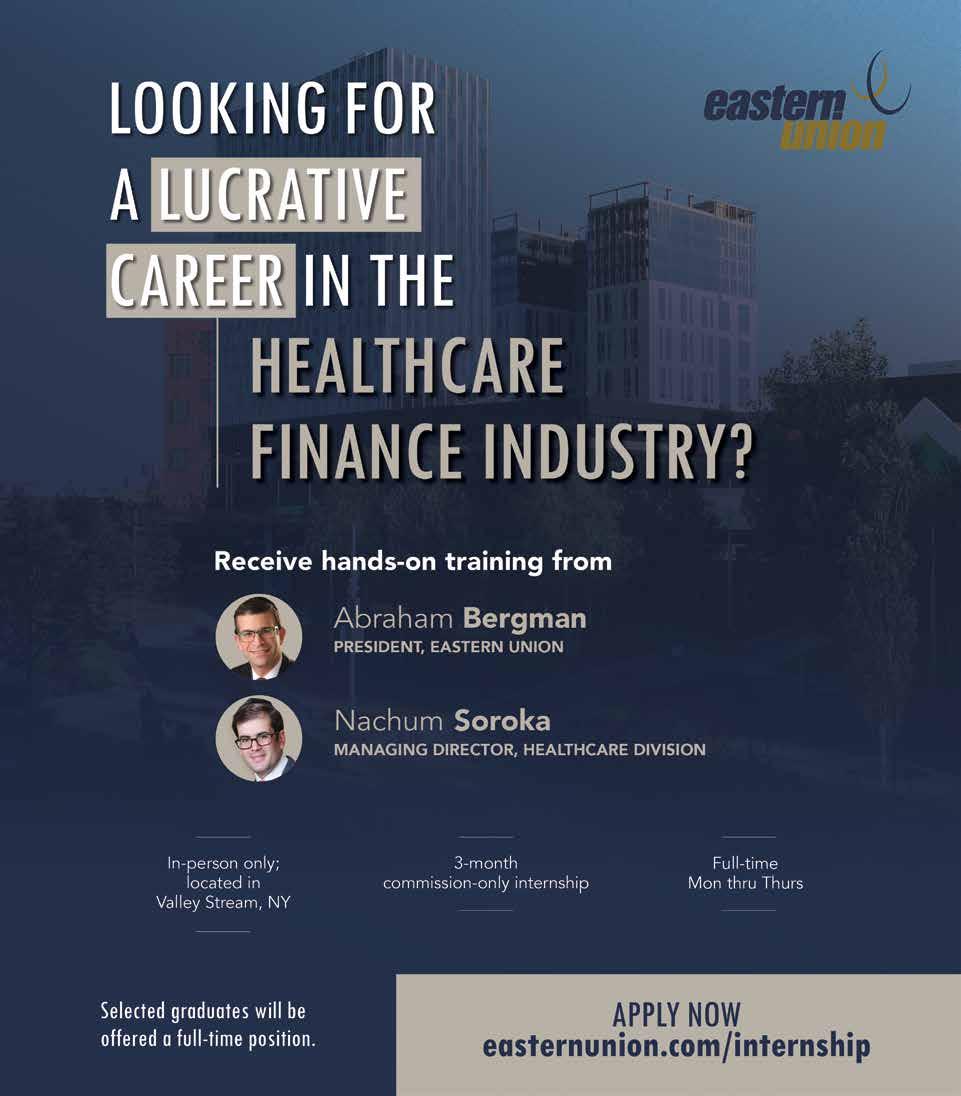

President Vladimir Putin has issued a decree expanding Russia’s army by another 180,000 soldiers, which would bring the total number of troops to 1.5 million and total military staff to almost 2.4 million people. His order, which will be executed in December, marks the third time Putin has expanded his military since February 2022, when Russia launched a full-scale invasion of Ukraine. In August 2022, he ordered an expansion of 137,000 soldiers. In December 2023, he increased the number of troops in his country’s military by another 170,000.
Putin’s move comes one month after Ukraine rapidly invaded Kursk, a region in southern Russia, marking the first time since World War II that a foreign power has taken over Russian land. A week ago, Russia intensified its attempts to kick Ukrainian forces out of the invaded region while the Russian military continued approaching Pokrovsk, a key town in Ukraine.
In September 2022, after Ukraine liberated much of the previously captured Kharkiv region, Putin ordered the immediate “partial mobilization” of Russian citizens, thereby implementing a draft for those with military service and calling up military reservists. In response to the mobilization, hundreds of thousands of citizens left Russia and went to Georgia and other neighboring countries, while many protested the decision.
In November 2023, the Kremlin suspended the mobilization since they achieved their goal of increasing the army by 300,000 troops, but a month later, Putin ordered another military expansion.
It is not clear how many Russian soldiers have died since the invasion of Ukraine, although the Ukrainian military’s General Staff and the United Kingdom’s Ministry of Defense believe that approximately 610,000 Russian soldiers have been killed since February 2022.
“Russia’s casualty rate will likely continue to average above 1,000 a day throughout September 2024 as Russia continues operations on a wide front from Kursk in the north to Robotyne in

According to a statement released by the government of Venezuela on Saturday, three U.S. citizens, two citizens of Spain, and one individual from the Czech Republic were arrested for allegedly planning violent “terrorist acts” meant to “destabilize” the country. A government official also alleged that authorities confiscated over four hundred rifles.
Currently, the Biden administration has only confirmed that one of the detainees was a U.S. Navy sailor, adding that it was “aware of unconfirmed reports” of the arrests of two other Americans.
Venezuelan authorities claim that the five suspects were plotting to attack President Nicolas Maduro and members of his government, according to Interior Minister Diosdado Cabello.
Venezuela’s already-sour relationship with the U.S. and Spain deteriorated further after the South American country’s July 28 presidential election, in the wake of which around 2,400 people were arrested, 27 people were killed, and 192 were wounded amid protests against the results of the election. Opponents of Maduro – who claims to have won his third term – have brought forth evidence that the election was rigged, an allegation that Maduro has dismissed but refuses to disprove. The U.S. and other countries have voiced concern over the election’s democratic legitimacy, and the United States has recognized Edmundo Gonzalez Urrutia as the victor.
Recently, one of Maduro’s jets was confiscated by the United States, with Washington claiming that the plane’s exportation violated U.S. sanctions. Last Thursday, the U.S. unveiled new sanctions against sixteen Venezuelan government officials for obstructing “a transparent electoral process” and failing to release real results.
Cabello alleged that the U.S. government “has links” to what he called the suspects’ planned terrorist operation.
“Any claims of U.S. involvement in a plot to overthrow Maduro are categorically false,” the State Department spokesperson said. “The United States continues to support a democratic solution to the political crisis in Venezuela.”
Two weeks ago, Urrutia fled to Spain amid arrest threats. Last week, after one of Spain’s ministers referred to Maduro as a dictator, Venezuela recalled its Spanish ambassador, summoned Spain’s envoy to Venezuela, and cautioned Madrid against any further “interference.”
Under the decade-long reign of Maduro, the successor to Hugo Chavez, GDP dropped 80 percent in Venezuela, leading seven million people to leave the country.
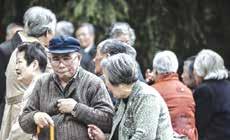
The Chinese government on Friday approved a plan to raise the country’s statutory retirement age, currently among the lowest in the world, in a long-awaited but broadly unpopular effort to address the challenge of its rapidly aging population.
This is the first time China has raised its retirement age since the 1950s. It will be phased in gradually, starting Jan. 1, 2025. The retirement age for men, previously 60, will increase in increments of several months before finally reaching 63 by 2040. The retirement age for women in white-collar jobs, previously 55, will rise to 58. Women in blue-collar jobs, who previously could retire at 50, will have to work until 55.
The decision would “maintain the momentum and vitality of economic and social development,” Wang Xiaoping, China’s Minister of Human Resources and Social Security, said at a news conference.
Policymakers and experts have for decades been calling for a change to the retirement age, noting that the previous rules dated from a time when life expectancy in China was much shorter and fertility rates were higher. They warned that maintaining the status quo would severely strain the country’s workforce and pension funds, with large numbers of older Chinese retiring but fewer young people replacing them.
China’s working-age population has
been falling since 2012, according to official statistics, with an average annual decrease of more than 3 million people. Last year, China had 297 million people over 60 years old, or about 21% of its population.
But the proposal faced broad opposition, from older workers as well as from younger ones, who worried that an expanded workforce would mean even tougher competition for jobs. China also lacks a strong social safety net, and age discrimination by employers is common, leaving many blue-collar workers to worry that they would be left without work but unable to draw on pensions.
In a sign of how sensitive the issue was, the government has promised before to raise the retirement age, only to backpedal in the face of public outcry.
The decision announced Friday will also lengthen the time people must pay into pension funds before becoming eligible to receive a monthly pension, to 20 years from 15. (© The New York Times)

Scores of soldiers who had been taken prisoner in the Russia-Ukraine war were able to go home over the weekend, as the two nations conducted a major exchange of prisoners on Friday and Saturday. Over the two days, 206 prisoners were allowed to go back to their countries.
The United Arab Emirates mediated the exchange. It was the country’s eighth such mediation since the start of 2024.
President Volodymyr Zelenskyy said that all 103 Ukrainians returned were from the military — 82 soldiers and privates and 21 officers.
Russian Defense Ministry said that the 103 Russian soldiers exchanged had been taken prisoner in the border Kursk region where Ukrainian forces launched a surprise incursion in August.
“Our people are home,” Zelenskyy said on the Telegram messaging app. “We have successfully brought back another 103 warriors from Russian captivity to Ukraine.”
Zelenskyy posted pictures of servicemen wrapped in the national blue and


yellow flag, hugging each other, talking on mobile phones and posing for group photographs at an undisclosed location.
Kyiv and Moscow have frequently exchanged prisoners since Russia’s invasion in February 2022, and Saturday’s swap was the third since Ukraine began a cross-border incursion into Russia’s Kursk region in early August. Ukrainian officials have previously said its troops had captured at least 600 Russian soldiers during the incursion and that
this would help it secure the return of captured Ukrainians.
Dmytro Lubinets, Ukraine’s ombudsman, said the majority of the freed Ukrainians had been in Russian captivity since the early days of the invasion.
He posted a short video on the Telegram messaging app showing the servicemen standing in front of a bus and shouting “Glory to Ukraine.” Lubinets said that Kyiv had so far secured the return of 3,672 Ukrainians in 57 exchanges.
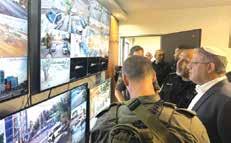
On Friday, police detained a seventeen-year-old whom authorities suspect killed four people and injured nine others in a car bombing in an Arab community in Ramle on Thursday. Officials are not treating the incident as a terror attack but believe the bombing was connected to an on going battle between the Jarushi and Abu Zaid crime families in the area.
National Security Minister Itamar Ben Gvir, who has been criticized for not dealing with the organized crimes racking Arab-Israeli communities, promised that the police would be “going to war” to handle the issue. Early Friday morning, 500 police officers conducted raids on the cities of Ramle and Lod and on Dahmash, an Arab village situated between the two cities.
According to early findings, the car bombing caused a fire that spread to two local shops; the incident was seemingly caused by a grenade that was stolen. The car and affected stores have ties to the Jarushi family.
The bombing killed 50-year-old Daa Abu Halawa, her fourteen-year-old and ten-year-old children, and 24-year-old Leen Mugrabi, whose two-month-old son sustained life-threatening wounds. Mugrabi, the daughter-in-law of the crime family head Kamal Jarushi, was reportedly the main target of the attack.
On Friday, 49 Ukrainian prisoners returned home. Among them were 23 women, including civilians detained before the full-scale invasion.
One of the women released was Lenia Umerova, who had been taken hostage while visiting her ailing father. Fifteen Azov soldiers, mostly women, who had spent over two years in captivity, were also brought home.
During the raid, police confiscated a Glock handgun and other weapons. Dozens of Palestinians from the West Bank were arrested during the raid for being in Israel without a permit. Additionally, many were detained for allegedly having illegal weapons, although most detainees were freed because of insufficient evidence.
In writing to Ben Gvir, a number of residents of Ramle said they felt “deep frustration and harsh disappointment in your management of matters related to our personal security,” noting that “in



36 the last few weeks, our city has become a playground for criminal gangs that threaten residents’ safety, Jews and Arabs alike, with unfathomable cruelty.”
“If we could go tonight and arrest all the crime families, all the criminals, it would change the situation,” said Ben Gvir, attributing his failure to deal with the crisis to Attorney General Gali Baharav-Miara’s refusal to permit administrative detention against suspected criminals. “We know exactly who they are, we have lists of them, which we presented to the attorney general a year ago and six months ago — it’s the same people.”
Administrative detention, which is often used against terrorists, allows the police to detain terror suspects for a long time without trial.

On Friday, a number of European and Arabic officials met in Madrid to talk over ideas about promoting a two-state solution, which they believe would bring peace to the Middle East.
“Together, we want to identify the concrete actions that will enable us to make progress toward this objective,” Pedro Sanchez, the prime minister of Spain, posted on X, formerly Twitter. “The international community must take a decisive step toward a just and lasting peace in the Middle East.”
Before the meeting started, Sanchez hosted the meeting’s attendees at his home. The summit, which was led by top Spanish diplomat Jose Manuel Albares, saw Palestinian Authority Prime Minister Mohammad Mustafa, the foreign ministers of Turkey, Qatar, Saudi Arabia, Egypt, Jordan, Ireland, Norway, and Slovenia, the heads of the Arab League and the Organization of Islamic Cooperation, as well as the European Union’s foreign affairs chief Joseph Borrel, in attendance.
“The implementation of the two-state solution is the only way to ensure a just and lasting peace in the region through the peaceful and secure coexistence of the state of Palestine and the state of Israel,” Albares asserted.
Albares added that he would be “delighted” if Israel participated in two-state
solution talks, although he noted that Israel was not invited to the meeting in Madrid because the Jewish state isn’t part of “the group of Europeans nor … the Arab-Islamic contact group.”
The ongoing war in Gaza was triggered on October 7, 2023, when Hamas murdered 1,200 Israelis and kidnapped over 250 others. Of the 97 hostages still in Gaza, 33 are believed to have died while in the terror group’s captivity. Currently, Israeli officials tend to view peace talks and the prospect of a Palestinian state as rewards for terror.
On May 28, Spain, Ireland, and Norway officially recognized a Palestinian state, which Israel has condemned. Before the end of 2024, the first “bilateral summit between Spain and Palestine” will be held, during which “several collaboration agreements between the two states” will likely be signed, said Sanchez.

According to IDF officials, Hamas’ Rafah Brigade has, at long last, been defeated, as over 2,300 of its terrorists have been eliminated and more than 8 miles of tunnels in Rafah have been demolished. Currently, the Israeli military has power over the whole city, as well as the Philadelphi Corridor, which is where the borders of Gaza and Egypt meet. And in a few weeks, if not sooner, a few dozen more Hamas tunnels are expected to be destroyed.
As of now, it isn’t clear what Israel plans to do once the final tunnel is demolished in Rafah.
The general in charge of the ground offensive into Rafah, Brig. Gen. Itzik Cohen, who is also the commander of the IDF’s 162nd Division, said, “The Rafah Brigade has been defeated… Their four battalions have been destroyed, and we have completed operational control over the entire urban area.”
Cohen noted that his combat engineering forces found 203 distinct, but interconnected, tunnels beneath the Philadelphi Corridor, going around 300 meters from the border of Egypt to Rafah’s outskirts.
“There are a total of nine underground sites [tunnels] that cross into Egyptian territory, but they have collapsed, they are not usable, they are not active,” Cohen said, noting that the tunnels were either demolished by Egypt or by Hamas. For years, Egypt has tried to destroy the terrorist tunnels that go into Egyptian territory.
Relative to other parts of Gaza, Rafah has a special tunnel system wherein every single tunnel is connected. According to some, Rafah’s tunnel network is like an underground city, although it’s larger than Rafah itself.
Recently, as part of the IDF’s campaign into Rafah, the army found the bodies of six Israeli hostages, Hersh Goldberg-Polin, Eden Yerushalmi, Ori Danino, Alex Lobanov, Carmel Gat, and Almog Sarusi, who were murdered by Hamas, in a tunnel in the Tel Sultan neighborhood. The tunnel’s entrance was in a children’s playroom in a Tel Sultan home.

At least twelve terrorists were killed and thousands of terrorists were wounded on Tuesday when the pagers Hezbollah terrorists use to communicate exploded in Lebanon on Tuesday.
Lebanon’s Health Minister Firass Abiad said that over 2,750 people have been wounded, 200 critically.
Iranian ambassador Mojtaba Amani was reportedly injured in the explosion, according to state-owned Mehr News.
In an initial statement, Hezbollah said, “This afternoon, a number of messaging devices known as ‘pagers’ exploded, which are owned by a number of workers in various Hezbollah units and institutions.”
Hezbollah said that it was carrying out an investigation to determine the causes of the blasts. A senior Lebanese security source told Al-Hadath that Israel infiltrated the communication system of individual devices and detonated them.
According to reports, the phones were called before the explosion for a period of seconds to increase the chance that who-
ever received the call would pick it up and be maximally wounded.
The pagers detonated were the latest model brought in by Hezbollah in recent months, three security sources said Reuters.
A Hezbollah official, speaking on condition of anonymity, said the detonation of the pagers was the “biggest security breach” the group had been subjected to in nearly a year of war with Israel. Israel has not taken responsibility for the explosions.
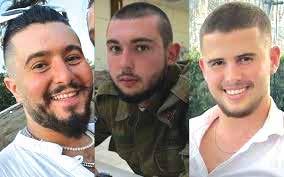
It’s been more than nine months since their bodies were retrieved from Gaza and buried. On Sunday, the IDF announced that an investigation confirmed that hostages Sgt. Ron Sherman, Cpl. Nik Beizer, and Elia Toledano had been killed as a result of a “byproduct” of an Israeli airstrike in the Gaza Strip, although the exact cause of death is still unknown.
On November 10, 2024, the IDF carried out an airstrike near the location where the bodies were later found, targeting the commander of Hamas’s Northern Gaza Brigade, Ahmed Ghandour, who was hiding in a tunnel in Jabaliya.
“The findings of the investigation suggest that the three, with high probability, were killed by a byproduct of an IDF airstrike, during the assassination” of Ghandour, the IDF said.
“This is a highly probable estimate given all the data, but it is not possible to determine with certainty the circumstances of their death,” the military noted. The IDF did not elaborate on what such an airstrike “byproduct” could be, although family members have said it’s likely the three suffocated or were killed by carbon dioxide poisoning inside a tunnel following a strike.
According to the IDF’s investigation, the three had been held in a tunnel complex where Ghandour operated. However, when the strike was carried out, the military had no information on hostages being held in the area.
Nik’s mother, Katy Beizer, said Sunday that they were told by the IDF that troops


“didn’t know there were hostages there… It’s incredible that they didn’t have that intelligence, that they didn’t think that next to Ghandour there would be captives [being used as human shields]. It’s hard for me to understand and believe this.”
Amid the war, the IDF has said it does not strike in areas where it has information of the presence of hostages, but in some cases, hostages have been harmed in Israeli strikes due to a lack of intelligence.
On December 14, the bodies of Sherman, Beizer, and Toledano were found by troops in the tunnel network in Jabaliya and brought back to Israel for burial.
A Hamas propaganda video released a week after the three were found showed their bodies and claimed they had been killed in an airstrike. But in January, IDF representatives presented the families with a pathology report showing that the bodies had no signs of trauma or gunfire, indicating that they were not killed directly by an airstrike.
Sherman’s mother told Army Radio last week that, according to the unofficial information the family had heard, the three likely died of carbon dioxide poisoning due to lack of oxygen in the tunnel following the strike.
Beizer and Sherman, both 19, served in the COGAT’s Gaza District Coordination and Liaison, a Defense Ministry unit that coordinates permits and the passage of goods through the Erez Crossing into Gaza.
Hamas terrorists seized control of the Erez Crossing on October 7 as they invaded Israeli communities near the Gaza border, massacring some 1,200 people, mostly civilians, and kidnapped 251 others.
Toledano, 28, was kidnapped from the Supernova festival with his close friend, Mia Schem, 21, who was released in late November as part of a temporary truce deal with Hamas.
It is believed that 97 of the 251 hostages abducted by Hamas on October 7 remain in Gaza, including the bodies of at least 33 confirmed dead by the IDF.
On Tuesday, the Shin Bet announced that it had foiled an attempt by the Hezbollah terror group that targeted a former senior Israeli security official. The assassination attempt used a remotely detonated explosive device that was supposed to be carried out in the coming days.
The device was a Claymore-style anti-personnel mine, which included a
camera and a cellular connection, which would have allowed the terror group to kill the official while activating the device from Lebanon.
The Hezbollah network behind the attempted attack was also responsible for a bombing in Tel Aviv last year. The bomb was nearly identical to one that exploded in Hayarkon Park on September 15, 2023, in an attempted attack that caused no injuries.

Two suspects were detained over that bombing on a nearby highway. They were identified as Israeli citizens from the West Bank Palestinian town of al-Eizariya near Jerusalem, living intermittently in the Tel Aviv suburb of Jaffa.
That bomb, also activated by Hezbollah, was intended to harm another senior Israeli official, according to the Shin Bet.
Since October 8, Hezbollah-led forces have attacked Israeli communities and military posts along the border on a near-daily basis, with the group saying it is doing so to support Gaza during the war there. So far, the skirmishes have resulted in 26 civilian deaths on the Israeli side, as well as the deaths of 20 IDF soldiers and reservists. There have also been several attacks from Syria, without any injuries.
Hezbollah has named 441 members who have been killed by Israel during the ongoing skirmishes, mostly in Lebanon, but some also in Syria. Another 78 operatives from other terror groups, a Lebanese soldier, and dozens of civilians have also been killed.

Brig. Gen. Yossi Sariel, the commander of the IDF’s main signals intelligence unit, Unit 8200, announced that he plans

on stepping down from his position eleven months after the October 7th massacre, which Israeli intelligence agencies, such as Unit 8200, did not prevent because they reportedly didn’t take warning signs of the attack seriously.
Sariel’s successor will be appointed “in the coming period,” the IDF said. Sariel has been the unit’s commander since February 2021, before which he held other intelligence positions.
“On October 7, at 6:29 a.m., I did not fulfill my mission as I expected of myself, as my commanders and subordinates expected of me, and as the citizens of the nation I love so much expected of me,” Sariel wrote.
“In accordance with the state of the war,” he hopes to “carry out my personal responsibility as the commander of 8200 and pass the baton to the next shift” when the IDF believes it’s the appropriate time, Sariel said.
Sariel noted that “in the years, months, days and hours that preceded the surprise attack,” his unit crafted detailed reports on “Hamas’s operational attack plan.”
However, “the detailed information that was produced and distributed about Hamas’s plans and its preparations did not succeed in shattering the intelligence and military foundations either within
the unit or among our partners,” he said, adding that, although such reports existed, the documents were, for some reason, not given to the chief of staff. Additionally, on September 19, 2023, the unit crafted a report showing that Hamas was preparing to launch a serious invasion into Israel, although such information was rejected by top intelligence officers.
Several top security officials have stepped down since October 7, including the heads of the Shin Bet, the Military Intelligence Directorate, the Gaza Division, and the Directorate’s Research Division.
lowed some employees to work from home. Since May 1, 2023, workers were required to be in the office at least three days a week. Now, starting in January 2025, employees will need to be at their office desks five days a week.

If you work at Amazon, they want you back – in the office, that is. In a message posted on Monday on its website, CEO
Andy Jassy said the company believes there are significant advantages to having employees in the office five days a week. When the pandemic hit, Amazon al-

Amazon is not alone in calling its workers back to the office. UPS, JPMorgan Chase and Boeing have all called their workers back in. Still, the average office occupancy in 10 major U.S. cities has hovered around 50% for months, according to data from security provider Kastle Systems.
Jassy has said he values in-office culture, and the five-days-a-week decision comes after Amazon has invested in its office spaces in recent years and pushed its employees to be close to their teams.
When employees are in the office, he said, “We’ve observed that it’s easier for our teammates to learn, model, practice, and strengthen our culture; collaborating, brainstorming, and inventing are simpler and more effective; teaching and learning from one another are more seamless; and teams tend to be better connected to one another.”
Jassy also said Amazon is moving to have fewer managers overseeing teams, pledging to tackle bureaucratic impediments such as what he called “pre-meetings for the pre-meetings for the decision meetings.”
The company will now have a dedicated method for employees to flag any “bureaucracy or unnecessary process that’s crept in and we can root out,” he said. Some employees have said Amazon hasn’t done as good of a job at keeping the startup culture that fueled its success as it has grown into a giant corporation.
In the third quarter of 2024, 33% of U.S. companies required employees to come to the office full time, according to Flex Index’s data. Among technology companies with more than 1,000 employees, only 7% had such a requirement.
After conducting the first-ever commercial spacewalk and traveling farther
from Earth than anyone in more than half a century, the astronauts of the Polaris Dawn mission returned to Earth safely early Sunday.
The SpaceX Crew Dragon capsule splashed down in the Gulf of Mexico, off the coast of Dry Tortugas, Florida, shortly after 3:30 a.m., carrying Jared Isaacman, a billionaire entrepreneur, and his crew of three private astronauts, according to a SpaceX livestream.
The ambitious space mission, a collaboration between Isaacman and Elon Musk’s SpaceX, spent five days in orbit, achieved several milestones in private spaceflight and was further evidence that space travel and spacewalks are no longer the exclusive domain of professional astronauts working at government agencies like NASA.
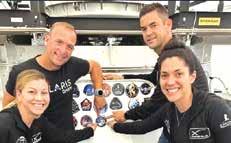
The Crew Dragon capsule launched Tuesday, after delays because of a helium leak and bad weather. On board were Isaacman, the mission commander and the founder of the payment services company Shift4; Sarah Gillis and Anna Menon, SpaceX employees; and Scott Poteet, a retired U.S. Air Force lieutenant colonel.
Late on Tuesday, its orbit reached a high point of about 870 miles above the Earth’s surface. That beat the record distance for astronauts on a mission not headed to the moon, which the Gemini XI mission set in 1966 at 853 miles high, and made Gillis and Menon the first women ever to fly so far from Earth.
On Thursday, Isaacman and Gillis became the first private astronauts to successfully complete a spacewalk.
This was the first of three Polaris missions aimed at accelerating technological advances needed to fulfill Musk’s dream of sending people to Mars someday. A key goal of the mission was to further the development of more advanced spacesuits that would be needed for SpaceX to try any future off-world colonization.
During the spaceflight, the four astronauts conducted about 40 experiments, mostly about how weightlessness and radiation affect the human body. They also tested laser communications between the Crew Dragon and SpaceX’s constellation of Starlink internet satellites. (© The New York Times)


ment of Labor official, she wasn’t allowed to do that. After she was reported, she was referred to the New York State Inspector General’s Office, where she, at first, lied about her actions. However, she eventually admitted that she made the proclamation requests, which were honorary, on behalf of an official from New York City’s Chinese Consulate General and presented the proclamations at the consulate’s Lunar New Year celebration. Three months later, she was fired from the Department of Labor.
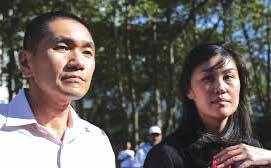
In 2018, Sun went to Beijing on a trip that was arranged by a U.S.-based Chinese businessman, who reserved a presidential suite for her. One year later, she visited Beijing again. During that trip, she corresponded with the same businessman regarding the possibility of attending a Chinese military parade. In the end, she chose to attend a celebratory reception for the People’s Republic of China’s 70th anniversary.
Sun was interviewed by the FBI in the summer of 2020. During the interview, she said she attended the Chinese celebration due to her position as Hochul’s administration’s Asian American affairs director, which was untrue. She also left out details about how the trip was funded. Additionally, over the span of many years, she didn’t inform the state government about her dealings with Chinese government officials, as she was supposed to do.
Sun and her husband were arrested as part of an FBI raid on their $3.6 million Long Island home. According to prosecutors, the two became wealthy, accepted expensive presents, helped their family members’ businesses in China and the U.S., and got their relatives’ government jobs in China by working on behalf of Chinese officials.
Linda Sun, a 41-year-old United States citizen, was born in China. Before her termination in 2023 amid accusations of working on behalf of the Chinese government, Sun worked as New York Gov. Kathy Hochul’s deputy chief of staff; she
was employed as an aide to Gov. Andrew Cuomo from 2012 until his resignation.
This month, Sun was indicted on several charges, including violating the Foreign Agents Registration Act (FARA), money laundering, visa fraud, and alien smuggling. Meanwhile, her husband and co-defendant, Chris Hu, was charged with money laundering, conspiracy to commit bank fraud, and misusing means of identification, according to federal prosecutors. Sun and Hu have pleaded not guilty
to the charges.
According to the indictment, Sun consistently used her power to undermine Taiwan on behalf of China by, for example, preventing Taiwanese officials from being able to speak with New York government officials and removing mentions of Taiwan from government messaging. In early 2023, she was reported for requesting unauthorized official proclamations from the governor’s correspondence office despite the fact that, as a Depart-
“Sun is alleged to have obtained most of the corrupt benefits from the scheme – salted ducks aside – through unreported income that her husband’s seafood importation business obtained from China and then laundered into the United States, making it more difficult for law enforcement to connect the proverbial dots connecting Sun’s activities benefiting China to the financial benefits she enjoyed,” said Howard Master, a partner with Nardello & Co., and former Southern

District of New York prosecutor.
In order to convict Sun, prosecutors will have to prove that she willfully violated FARA.

On Thursday, Edward Caban, the New York Police Department Commissioner, announced his resignation following federal officials’ confiscation of his phone and the seizure of devices from other officials from Mayor Eric Adams’ office.
“The news around recent developments has created a distraction for our department, and I am unwilling to let my attention be on anything other than our important work or the safety of the men and women of the NYPD,” Caban stated.
“I hold immense respect and gratitude for the brave officers who serve this department, and the NYPD deserves someone who can solely focus on protecting and serving New York City, which is why – for the good of this city and this department – I have made the difficult decision to resign as Police Commissioner.”
According to Caban’s attorneys, the government has told them that Caban “is not a target of any investigation being conducted by the Southern District of New York.” According to reports, the investigation pertains to Caban’s brother and New York City nightclub enforcement.
“A short time ago, I accepted the resignation of the NYPD Commissioner Edward Caban… I respect his decision, and I wish him well,” said Adams, declaring Caban’s resignation to be “the best decision at this time.”
Caban, the first Latino NYPD commissioner, was in the position for thirteen months. In his place, Adams appointed Tom Donlon, who directed New York’s Office of Homeland Security and was in charge of the FBI’s National Threat Center, as well as the FBI and NYPD joint terrorist task force, as interim commissioner.
“I am honored and humbled to be

named interim-Commissioner of the New York City Police Department, the greatest law enforcement agency in the world,” Donlon stated. “My goals are clear: continue the historic progress decreasing crime and removing illegal guns from our communities, uphold the highest standards of integrity and transparency, and support our dedicated officers who put their lives on the line every day to keep us safe.”
Although several important Adams administration officials recently had their phones confiscated, neither Adams nor his staffers have been accused of any crimes, and the mayor says he is complying with the federal investigation.

After what appears to be the second assassination attempt on current GOP presidential nominee President Donald Trump’s life in just two months, the president is safe and was not harmed by the attempted shooter.
Trump was playing golf with a donor on Sunday at the Trump International Golf Club in Florida when a Secret Service agent spotted a man with a rifle hiding in nearby bushes some 300 to 500 yards away from Trump. The agent “immediately engaged” with the individual, according to Ric Bradshaw, the sheriff of Palm Beach County.
After the Secret Service fired at the man, the gunman got into a car and drove away. With help from a witness, officials were able to catch the suspect, who was driving north on I-95 in Martin County in a vehicle with stolen license plates.
“We [were] able to catch a witness that came to us and said, ‘Hey, I saw the guy running out of the bushes, he jumped into a black Nissan, and I took a picture of the vehicle and the tag,’ which was great,” said Bradshaw.
The suspect, who has been identified as Ryan Wesley Routh, remained silent after he was arrested, according to Palm Beach County state attorney David Aronberg.
“He knew enough to stay silent,” Aronberg said. “He did not apparently speak to officers, he was calm. So, it looked like a person who has done this before, not necessarily this crime, but someone who has had repeated interactions with law enforcement.”
Routh was a self-employed affordable housing builder from Hawaii who frequently and passionately expressed his political views on social media, often berating Trump and posting pro-Ukraine content. Routh reportedly visited the Independence Square in Kyiv, Ukraine, following Russia’s invasion of the country. On May 1, 2022, he went to a rally at the square, and around six weeks later, he visited the square again. During the latter visit, he was photographed standing by a Ukrainian flag with a message, urging international volunteers to support Ukraine.
As Routh has used social media platforms based outside the United States, the FBI will, in conducting this investigation, have to cooperate with international partners.
At the scene, the suspect allegedly left behind an AK-47-style rifle with a scope, a GoPro camera, and two backpacks hung on the fence with ceramic tile in them.
“Former President Donald Trump is safe and unharmed following a possible attempted assassination shortly before 2 p.m. Sunday at Trump International Golf Club at West Palm Beach. US Secret Service personnel opened fire on a gunman located near the property line,” said Rafael Barros, the special agent of the Secret Service’s Miami field office.
The Secret Service’s acting director, Ronald Rowe, will be visiting Florida in light of the attempted assassination. On Sunday, Gov. Ron DeSantis announced
Did you know?
The

that Florida will be launching its own investigation into the incident. Additionally, the congressional task force currently investigating the attempt on Trump’s life two months ago in Butler, Pennsylvania, has requested a briefing with the Secret Service.
“As I have said many times, there is no place for political violence or any violence ever in our country, and I have directed my team to continue to ensure that Secret Service has every resource, capability and protective measure necessary to ensure the former President’s continued safety,” President Joe Biden stated on Sunday evening.
Democratic presidential nominee Vice President Kamala Harris echoed Biden’s statement, condemning political violence and declaring that the Secret Service should have “every resource, capability, and protective measure necessary to carry out its critical mission.”
“I’m glad President Trump is safe. I spoke to him before the news was public, and he was, amazingly, in good spirits,” said J.D. Vance, Trump’s vice presidential pick and the senator of Ohio.

As of Tuesday, the Instagram accounts of teens in the United States, the UK, Canada, and Australia were made private by default. The social media company is attempting to make the platform safer for children amid a growing backlash against how social media affects young people’s lives.
Anyone under 18 who signs up for Instagram will be placed into restrictive teen accounts and those with existing accounts will be migrated over the next 60 days. Teens in the European Union will see their accounts adjusted later this year.
Meta acknowledges that teenagers may lie about their age and says it will require them to verify their ages in more instances, like if they try to create a new account with an adult birthday. It is try-

ing to build technology that proactively finds teen accounts that pretend to be grownups and automatically places them into the restricted teen accounts.
Private messages are restricted so teens can only receive them from people they follow or are already connected to. “Sensitive content,” such as videos of people fighting or those promoting cosmetic procedures, will be limited, Meta said. Teens will also get notifications if they are on Instagram for more than 60 minutes, and a “sleep mode” will be enabled that turns off notifications and sends auto-replies to direct messages from 10 p.m. until 7 a.m.
While these settings will be turned on for all teens, 16 and 17-year-olds will be able to turn them off. Kids under 16 will need their parents’ permission to do so.
“The three concerns we’re hearing from parents are that their teens are seeing content that they don’t want to see or that they’re getting contacted by people they don’t want to be contacted by or that they’re spending too much on the app,” explained Naomi Gleit, head of product at Meta. “So teen accounts is really focused on addressing those three concerns.”
New York Attorney General Letitia James said Meta’s announcement was “an important first step, but much more needs to be done to ensure our kids are protected from the harms of social media.” James’ office is working with other New York officials on how to implement a new state law intended to curb children’s access to what critics call addictive social media feeds.
In the past, Meta’s efforts at addressing teen safety and mental health on its platforms have been met with criticism that the changes don’t go far enough. For instance, while kids will get a notification when they’ve spent 60 minutes on the app, they will be able to bypass it and continue scrolling. That’s unless the child’s parents turn on “parental supervision” mode, where parents can limit teens’ time on Instagram to a specific amount of time, such as 15 minutes.
Every day, it seems, Banazek unearths new historic treasures from a collection of sports cards and memorabilia he purchased in 2021 from a quiet hobbyist who lived in a neighboring town.
But this is not just any assemblage. It is quite possibly the largest private collection of sports cards in the world — and probably by a wide margin. Banazek estimates that it includes 20 million cards, although other visitors have pegged the number even higher.
What makes the collection even more notable is its lack of public profile. For years, it sat in a concrete outbuilding behind a low-slung ranch house on a wooded country road.

Two members of the seller’s family said that the collection had been painstakingly accumulated over more than 50 years and that the seller had “purchased whole collections from other buyers at times.” Speaking on the condition of anonymity in order to protect the seller’s identity, they declined to answer questions provided by email, other than to say, “We are happy that the collection went to someone who appreciates and enjoys the collection.” Banazek declined to disclose how much he had paid for the collection and said he did not even know everything it contained.
The collection includes at least every Topps baseball set produced from 1954 to 2016, as well as roughly three decades’ worth of completed sets of basketball and football cards. There are also hundreds of signed balls and bats, rolled-up sheets of uncut cards, and game-used catching gear worn by Hall of Famer Bill Dickey.
The collection extends beyond sports and includes original and authenticated postcards of an iconic actress from the 1950s; sealed boxes of cards from “Star Trek,” “Star Wars” and Pokemon; and turn-of-the-century cigarette cards featuring images of stage actors popular at the time.
In a former antique shop off a fourlane highway in rural Virginia, Tim Banazek knelt before a white banker’s box labeled “Autographed Baseballs” stashed at the bottom of a bookcase. He pulled a ball out and examined the signature. It was Willie Mays’.
Joe Marrs, an independent appraiser of card collections based in Chicago, said placing a value on the collection was difficult because of the possibility that some rare, extremely valuable cards could be lurking somewhere, but added that $5 million was a conservative estimate, based on what he had seen. (© The New York Times)




For non-kosher consumers, finding the best burger is a world-wide search. According to the “Michelin Guide for burgers,” the United States is not the best spot to find the best fast-food staple – Spain is home to the most delectable (non-kosher) burger around.
Hundred Burgers, in Valencia, clinched the top spot in the World’s Best Burgers 2024 rankings thanks to the quality of its 120-day aged beef that “melts in your mouth” and “super crispy” bacon.
“For us, receiving this recognition is the fulfillment of a lifelong dream,” Álex González, the restaurant’s co-founder, told Infobae Spain.
“We created the company with the aim of making a burger that would be a world reference and not even in our wildest dreams did we contemplate being chosen as the best burger in the world. So it is a huge honor.”
The restaurant’s rise to the top of the burger rankings is not by chance.
In 2017, Hundred Burgers’ founders González-Urbón and Ezequiel Maldjian went on a four-day trip to New York to try the best 15 burgers in the city and improve the burgers at González’s mother’s restaurant. That trip turned out to be lucrative, as the pair opened up the first Hundred Burgers branch in 2020 and won the “best burger in Spain award” shortly after. It now has four stores in Valencia and three in Madrid.
What makes the best burger in the world? The chefs start off every morning by baking demi-brioche bread buns inhouse. The dough is fermented, kneaded and baked in their workshop. Dry-aged Galician blond beef is then chopped up and formed into burgers by hand.
The most popular item on the Hundred Burgers menu is the Singular, which is topped with cheddar cheese, “Mum’s” barbecue sauce, bacon, caramelized onion, and Camembert sauce.
Other restaurants that made the top

five were Au Cheval in Chicago and New York, Holy Burger in São Paulo, and Funky Chicken Food Truck in Stockholm.
Hasn’t anyone heard of Kosher Delight?

Need extra towels while sleeping in a hotel? Just call room service. But that’s probably the most mundane request that hotel workers hear. According to Hotels. com, one person staying in a hotel asked for an Evian-filled tub for a child’s bath. Another requested burnt toast, and another patron asked for a caviar hot dog. Fresh goat milk was also a demand, along with four pounds of bananas and a high five from a team member “to ensure their room service request was read.”
Guests at hotels are not just weird when they’re there; they leave behind odd items as well.
Taken from 400 hotels across the world, the website reported that guests generally leave behind phone chargers, dirty laundry, power adapters, makeup and toiletries. And 10% of patrons leave their dentures behind, too.
What about other miscellaneous items that are not as generic?
Some of the most unusual items left behind in rooms include a Rolex watch, another watch worth $6 million, a Hermes Birkin bag, keys and documents for a luxury car, a car tire, an engagement ring, a tooth, two full-leg casts, stacks of cash, a pet lizard and a chick.
The lizard and chick were soon reunited with their owners.
Late checkout, anyone?

New Zealand’s bird of the year is noisy, smelly and shy – but people love it.
The hoiho, also called the yellow-eyed penguin, won the country’s fiercely fought avian election on Monday.
More than 50,000 people voted in the poll, 300,000 fewer than last year, when British late night host John Oliver drove a humorous campaign for the pūteketeke – a “deeply weird bird” which eats and vomits its own feathers – securing a landslide win.
“Birds are our heart and soul,” said Emma Rawson, who campaigned for the fourth-placed ruru, a small brown owl with a melancholic call. New Zealand’s only native mammals are bats and marine species, putting the spotlight on its birds, which are beloved — and often rare.
This year’s victor, the hoiho — its name means “noise shouter” in the Māori language — is a shy bird thought to be the world’s rarest penguin. Only found on New Zealand’s South and Chatham islands, its numbers have dropped perilously by 78% in the past 15 years.
“This spotlight couldn’t have come at a better time. This iconic penguin is disappearing from mainland Aotearoa before our eyes,” Nicola Toki, chief executive of Forest & Bird, the organization that runs the poll, said in a press release, using the Māori name for New Zealand. Despite intensive conservation efforts on land, she said, the birds drown in nets and sea and can’t find enough food.
The karure, a small, black robin only found on New Zealand’s Chatham Island, took second place in the contest.
Let’s not ruffle any feathers here.
Did you know?
In North Korea, birthdays are not celebrated on July 8 and December 17 as these are the death dates of former leaders Kim Il-sung and Kim Jong-il.


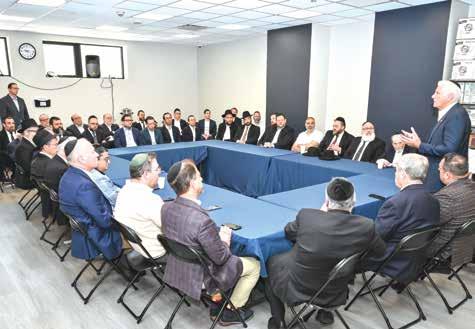
On Sunday morning, September 15, a group of approximately 40 rabbanim, menahelim, and leaders from local schools and synagogues gathered at Yeshiva of South Shore to discuss their pivotal role in the upcoming elections. The event featured notable political figures, including Congressman Anthony D’Esposito, Nassau County Ex-
ecutive Bruce Blakeman, Assemblyman
Ari Brown, and State Senator Patricia Canzoneri-Fitzpatrick, all of whom emphasized the critical importance of voter registration and turnout.
In addition to the local discussions, the event also introduced the latest “Long Island Unites” project, an initiative spearheaded by the Teach Coalition,

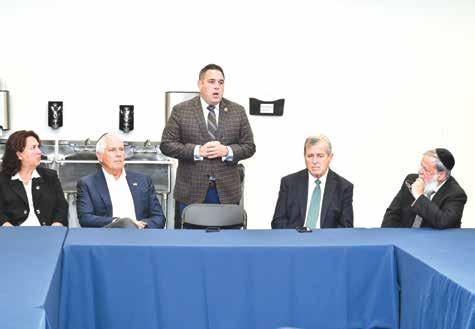
which is focused on unifying and mobilizing community members to engage in the electoral process. The Agudath Israel of America’s ongoing efforts to promote civic responsibility within the Orthodox Jewish community were also highlighted, reinforcing the collective responsibility to ensure a strong voter presence. The meeting fostered a productive
dialogue between political leaders and community representatives, underscoring the significance of the elections for the future of Nassau County and beyond. Yeshiva of South Shore continues to serve as a hub for meaningful discussions that impact the local community, strengthening the bond between political leadership and faith-based institutions.

The excitement was palpable as the freshmen of DRS Yeshiva High School eagerly boarded buses last Thursday evening, bound for their annual Shabbaton at Camp Kaylie. “The goal of the Shabbaton is to help everyone meet each other and foster a sense of achdut within the grade in an enjoyable and fun way,” said DRS Menahel Rabbi Yisroel Kaminetsky to the freshman class.
Upon arrival, students unpacked, davened Maariv, and headed to the gym for “Wacky Olympics,” where shiur-vs.-shiur competitions in various events gave each student a unique role. The night continued with a late-night barbecue, a kumzitz bonfire with s’mores, and pickup basketball in the gym with new friends.
Friday morning began with Shacharis, breakfast, and shiurim with the
freshmen rebbeim. Students then had the choice of joining a competitive flag football tournament or accompanying Rabbi Weberman on a nature hike. Throughout the day, they enjoyed Camp Kaylie’s spacious facilities, participating in go-karting, tennis, and dodgeball before preparing for an amazing Shabbos ahead.
The 100 freshmen welcomed Shabbos with a beautiful Kabbalas Shabbos, followed by a festive seudah filled with zemirot and divrei Torah. Later, students competed in a shiur vs. shiur Family Feud game, and then enjoyed a DRS-style tisch with Rabbi Kaminetsky and their rebbeim, filled with singing, cholent, kugel, and candy, as they experienced the joy and ruach of Shabbos as one united group.

The ruach continued the next morning with a lively Shacharis, kiddush, and thought-provoking shiurim. Shabbos lunch was filled with more zemirot and singing, after which students deepened their friendships and learned together in the Beis Medrash. As Shabbos drew to a close, Mincha and Shalosh Seudos were
Mount Sinai South Nassau has dedicated its new Sabbath House in recognition of a donation from Iris and Shalom Maidenbaum.
“Mount Sinai South Nassau believes that meeting the spiritual needs of our patients and providing them and their families with the accommodations they need during the Sabbath is an important part of the care we provide,” said Adhi Sharma, MD, President, Mount Sinai South Nassau. “It is with the utmost respect that we dedicate the Sabbath House in in recognition of the Maidenbaums.”
The Sabbath House recently relocated to larger quarters at 2500 Washington Avenue on the hospital campus near its Washington Avenue entrance. The Sabbath House is the cornerstone of the hospital’s Jewish Communities Program, offering comfort and familiarity to the families of observant Jewish patients. In addition to providing sleeping accommodations for individuals who want to be near hospitalized family members, it features a kosher kitchen, living room, and library. The house also offers prayer books and Shabbat candles, catering to the needs of even the most devout families.
“Iris and I, along with Maidenbaum Property Tax Reduction Group, LLC, are proud to kick off this project. We thank Mount Sinai South Nassau for providing
the Sabbath House for those who require accommodations to visit with their loved ones at Mount Sinai South Nassau during the Sabbath,” said Mr. Maidenbaum.
The Sabbath House Committee also includes Rajiv Datta, MD; Chaplain Grace Dillon; Alan Garely, MD; Rabbi Aaron E. Glatt, MD; Sondra Gottesman; Jay Itzkowitz, MD; Kaila Kelman; Rabbi Jonathan Muskat; Samuel Sandowski, MD; and Ari Steiner, MD. The group is leading the effort to raise funds for the ongoing renovation and maintenance of the Sabbath House.
In addition to the Sabbath House, the Mount Sinai South Nassau Jewish Communities Program includes a Kosher Pantry/Respite Room in collaboration with the Achiezer Community Resource Center and helps schedule rabbinical emergency visits and facilitate access to all Shabbat hospitality, kosher food, and other ritual needs. The recently expanded and renovated Kosher Pantry/Respite Room is accessible 24 hours a day, 7 days a week, and has a secure Hebrew lock.
The Achiezer Community Resource Center stocks the room regularly with Tehillim and Chumashim; fresh prepared kosher foods and beverages; and Shabbat and holiday necessities, such as battery-operated Shabbat candles and menorahs (in accordance with hospital safety).
“Both the Sabbath House and Kosher
followed by an inspirational kumzitz, uniting the students in song and achdut as they ushered out Shabbos. After Maariv and Havdalah, the students returned home, uplifted and infused with a sense of ruach and achdut to carry with them for the year ahead.

Pantry/Respite Room can be used as a resting place for family members and friends during a time of emergency, an extended stay for a patient, or for those who live a distance from the hospital,” said Rabbi Aaron E. Glatt, MD, Chair of the Department of Medicine at Mount Sinai South Nassau, Associate Rabbi at Young Israel of Woodmere, NY.
To meet the dietary needs of patients and their families, the hospital’s Food and Nutrition Department offers a full kosher menu. The department serves glatt kosher meals on request for patients as well as their family members. Frozen kosher entrees are generally available for patients or family members arriving after hours. Freshly prepared kosher food is also available for purchase in the hospital’s coffee and gift shop.
Mr. and Mrs. Maidenbaum recently
made a significant gift to Mount Sinai South Nassau to establish the Maidenbaum Health Care Heroes Plaza in honor of health care workers who bravely cared for thousands of critically ill patients during the COVID-19 pandemic. The gift from Mr. and Mrs. Maidenbaum and the Maidenbaum Property Tax Reduction Group, LLC., will support the hospital’s ongoing effort to bring high-level specialty care to the South Shore so residents and their families don’t have to travel to New York City or north for advanced treatment.
For more information about how you can help support the Maidenbaum Sabbath House, please call the Mount Sinai South Nassau Development Office at 516-377-5360. For information about spiritual care services at Mount Sinai South Nassau, call 516-632-4586.

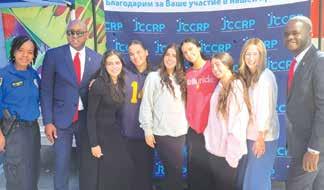
On Wednesday, September 11, JCCRP distributed food boxes with items for the upcoming holiday to 240 Russian-speaking Holocaust survivors, including apples and honey for a sweet new year! Thank you to Rabbi Rosenwasser’s 8th grade class from Yeshiva of South Shore for all of

their hard work packing and loading the food boxes onto the truck for the distribution, and thank you to Naima Lavian for organizing a group of 12th graders from HAFTR who gave out the food to the survivors. Many thanks to all of our elected officials that came to help us including Queens Borough President Don-
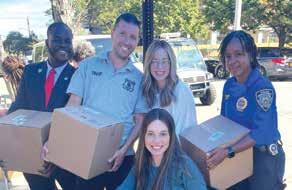
ovan Richards, Councilwoman Selvena Brooks-Powers, Assemblyman Khaleel Anderson and NYPD 101 Precinct Community Affairs Detective Lynn Blanchette, Met Council and RNSP. Thank you for the generous funding provided by our local Councilwoman, Assemblywoman Stacey Pheffer Amato, Claims Confer-
ence, and UJA-Federation of NY to help support our local Holocaust survivors in Far Rockaway with needed social services and food programs.
We are grateful to be able to service our local Holocaust survivors. Please reach out to volunteer with us at our next distribution at info@jccrp.org.
On September 12, under a clear blue sky, Mr. Don Clavin, Hempstead Town Supervisor, gave a very important press conference in front of HANC Elementary School in West Hempstead. He came to announce the formation of an Antisemitism Task Force that aims to identify emerging trends, fight hate and promote tolerance across our communities. Greater Hempstead houses a very large, vibrant Jewish community. In a show of unity and concern, he was joined by leaders from Albany, local leaders from organizations that are fighting against antisemitism, several rabbis from local synagogues, representatives of the Jewish War Veterans, the administration of HANC, as well as
church clergy members.
In his remarks to the crowd, Supervisor Clavin declared, “The Town of Hempstead has a zero-tolerance policy against hate and intolerance of all kinds. We are quick to publicly denounce any and all acts of intolerance within our township, however, there is a growing trend of antisemitism ramping up through the nation. It is our responsibility to be proactive against this disturbing trend and the creation of an Antisemitism Task Force is the first step towards making this defense a reality.”
His goals include identifying antisemitic acts, determining where it is festering from, and exploring how it is getting into our communities and how to edu-
cate others to recognize it and speak out against it. Amongst the proposals that were presented were: community outreach, partnering with local educational institutions to educate about the Holocaust and the history of antisemitism, interfaith programs to promote tolerance, and working with law enforcement to increase security for Jewish communal centers.
In expressing thanks on behalf of the entire community, Rabbi Ouriel Hazan, Director of HANC West Hempstead campuses, remarked:
“Thank you, Town Supervisor Clavin. The partnership between our county and the community leaders has never been stronger. Today we speak with one
On Sunday, September 22, Kollel Shomrei Hachomos will host its annual Five Towns Breakfast Reception at the residence of Alex and Susan Edelman.
Kollel Shomrei Hachomos is devoted to assisting those in need throughout Eretz Yisroel. For 160 years, they have been dedicated to easing the burdens of widows, orphans, and the poor, sick, and elderly by bestowing them with Yom Tov distributions, monthly stipends, and
wedding grants. As Rosh Hashana approaches, Kollel Shomrei Hachomos is undertaking a significant effort to distribute $2.5 million, ensuring that those in need can welcome the Yomim Tovim with the grace and dignity they deserve.
The annual Breakfast Reception has a profound impact on the organization’s yearly allocations. The contributions made during this event directly support KSH in their extensive efforts to support aniyei Eretz Yisrael. The support and participation of all
contributors are greatly appreciated by the organization and those in need.
Please consider supporting the organization’s important work at rebmeir.org/ edelman.
Kollel Shomrei Hachomos looks forward to the honor of your presence at the Breakfast Reception on September 22, 2024, at 9:30 AM, hosted at the Edelman residence, 49 Lawrence Avenue, Lawrence, NY 11559.
Kollel Shomrei Hachomos Reb Meir
united voice against the evils of hateful antisemitism. Our message is clear: we will not tolerate nor stand idly by in the face of hate speech and we will not be intimidated or silenced. The children in our school are taught to love, not hate, and they deserve to be educated in peace and security. We thank Mr. Don Clavin and all of our local leadership for their commitment and continued support of our community to combat antisemitism. May G-d bless all of our efforts, grant you health and wisdom, may G-d bring back our hostages and restore peace to all our people. G-d bless the nation of Israel, and G-d bless America.”
Baal Haness is honored to announce the appointment of three new board members. We extend our heartfelt appreciation to Alex Edelman, Sender Schwartz, and Sam Gross for their years of dedication to improving the lives of aniyei Eretz Yisrael. Congratulations on your appointment to the Board. May Hakadosh Baruch Hu grant you continued success and fulfillment in all your endeavors.

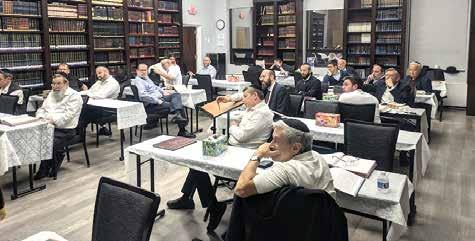
Shaaray’s New Makkos Chaburah, led by Rabbi Binyomin Thumim, is held on Sunday and Wednesday nights at 8:15-9:15 PM in Lawrence. New participants are still welcome to join.
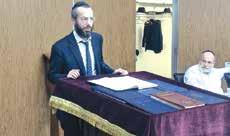

Yeshiva Nishmas Hatorah is off to an amazing start highlighted with the launch of its new Mussar Chaburas. The program begins each day with small, intimate groups of bachurim led by our dedicated rebbeim. Through intensive study and discussion, talmidim delve into the profound teachings of
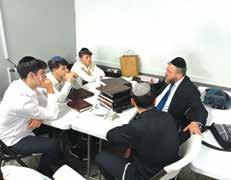
Mussar, exploring practical ways to enhance their avodas Hashem. This innovative initiative aims to equip bachurim with the tools necessary to navigate the challenges of life and strengthen their connection to Torah, mitzvos, and middos tovos.
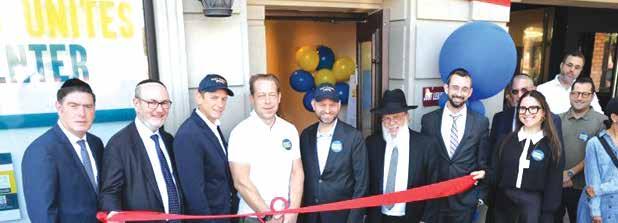
By Moshe Hill
In a significant moment for civic engagement, Long Island Unites officially opened its doors in Cedarhurst. The office, dedicated to registering and mobilizing Jewish voters, marks the second of its kind in New York after the success of Westchester Unites. Leaders, educators, and activists from the Jewish community gathered to celebrate the launch, which promises to be a pivotal step in ensuring the community’s voice is heard at the ballot box.
This new initiative follows in the footsteps of Westchester Unites, which played a critical role in turning out 16,000 voters in a race that was decided by just 12,000 votes. As Dr. Rabbi Josh Joseph, of the Orthodox Union, eloquently quoted Thomas Jefferson: “Votes are not determined by the majority, but by the majority who participate.” His message underscored the importance of every vote, and how participation, especially in
close elections, can shape outcomes.
Maury Litwack, the founder of the Teach Coalition, which oversees both Long Island and Westchester Unites, stressed the importance of small, engaged communities. He cited a synagogue in Westchester where 90% of the congregation voted, using it as an example of how an organized, active group can influence an election. “A community capable of changing elections but doesn’t is politically sick,” Litwack declared. “I don’t believe that is our community.”
The Cedarhurst office aims to be the central hub for Jewish voter information on Long Island. It will focus on voter registration drives, education, and outreach to help ensure that the Jewish community understands what’s at stake in upcoming elections. With new regional boards forming across New York, this movement is gaining momentum.
The opening was attended by prominent leaders from local institutions like HANC, South Shore, and HAFTR, sig-
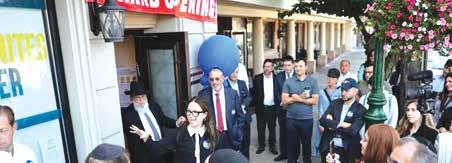
naling a broad coalition of support from across the Five Towns. Dr. Rabbi Joseph, addressing the crowd, highlighted how vital the establishment of this office is in uniting Long Island’s Jewish community around the shared goal of civic participation. “We stand up to fear by creating new spaces like this one,” he said, emphasizing the need for a strong, unified voice in the political arena.
Rabbi Kaminesky of YOSS offered a poignant reminder that “every vote is not only a vote; it’s a butterfly effect that can change the course of history.” His words reinforced the idea that political engagement is a form of hakarat hatov — gratitude to the United States, a nation that has provided the Jewish community with respite and freedom. “Being part of the system,” he said, “is a way to show our appreciation.”
The sense of urgency in the room was palpable as speakers acknowledged the current political climate. Rabbi Axelrod emphasized the critical support for Israel emanating from Congress and the need
for the Jewish community to remain engaged. “There’s a battle out there in the American political scene. We have to stay out there, we have to stay engaged,” he urged, pointing to the broader implications of political involvement.
Litwack summed up the day’s message: “Let’s make history come Election Day.” With Long Island Unites now in operation, the hope is that the Jewish community will become a more organized, impactful voting bloc—one that helps shape the future, not just for Long Island, but for the nation.
This new office is not just about registering voters. It’s about creating advocates, teaching the next generation the importance of civic responsibility, and uniting a community to ensure its voice is heard loud and clear. As Litwack and others made clear, the stakes have never been higher. Long Island Unites aims to ensure that, come November, the Jewish community will be ready.



Talmidim at Yeshiva Ateres Eitz Chaim had a blast at Epic Escape Rooms in West Hempstead as they worked on team building, conflict resolution, and achdus. Yeshiva Ateres Eitz Chaim takes hands-on learning to the next level as talmidim begin learning
hilchos Rosh Hashana and the simanim. Talmidim had an incredible time fishing with Captain Yossi and enjoyed shiur on she’niya l’rosh – focusing on the importance of keeping our heads afloat of the Yam Shel Torah and had a delicious BBQ on the boat!

What a great second week it was at the Five Towns FM Home Loans Flag Football League! All the boys were even more excited to play and ready to adjust to their new teams. In the 1st grade division, The Broncos beat the Jets. The Vikings beat the Eagles. And the Patriots beat the Giants with amazing defense by Effy Heimowitz and Yehuda Suleymanov! In the 2nd grade division, The Jets beat the Broncos. The Eagles beat the Vikings, and the Patriots beat the Giants. In the 3rd and 4th grade division, the Saints beat the Vikings. The Eagles tied with the Falcons. The Seahawks beat the Broncos. The Steelers beat the Dolphins. The Gi-

As the Yeshiva University High School for Girls (Central) embarks on a new academic year, it will embrace a new theme: that of “Cultivating Courage.”
“This year, we aim to empower all members of the Central community to face challenges with bravery, stand up for what is right, and support one another as we grow together – to cultivate an environment where courage thrives, and where every student feels empowered to be their best self,” said Associate Principal, Ms. Leah Moskovich. “Courage is not just grand acts of heroism. It’s also the quiet strength to be true to ourselves, to ask for help when needed, and to extend kindness to others.”
ants beat the Jets, and the Patriots beat the Packers with an amazing touchdown and pick from Judah Joszef! In the 5th and 6th grade division, the Giants beat the Eagles. The Seahawks beat the Dolphins. The Raiders beat the Broncos. The Jets beat the Patriots, and the Packers tied with the Steelers with an amazing game saving play on defense by Yonah Galler. In the 7th and 8th grade division, the Eagles tied with the Patriots, and the Vikings beat the Jets.
What an amazing second week we had of Flag Football! We hope to see everyone on the field for the third week of Flag Football.
As the Central community kicks off the month of Elul, a time of reflection in preparation for the chagim, students and faculty will focus on courage from nine different perspectives: the courage to pause, confront, change, grow, persevere, shine, accept, commit, and unmask. These perspectives were showcased this past week as three different guest speakers visited the Central community. On Monday, September 9, Dr. Yael Ziegler, a senior lecturer in Tanakh at Herzog College and Matan Women’s Institute for Torah Studies, addressed the topic with Central’s senior class in her lecture “Chana: The Courage to Pray in a Time of Crisis.” On Wednesday, September 11, guest
Did you know?
speaker Mrs. Nomi Levy shared her journey converting to Judaism and her life in Israel in “From Korea to Yerushalayim: The Courage to Choose Yiddishkeit.” And on Friday, September 13, Mrs. Ann Koffsky, parent of 2022 Central graduate Adira Koffsky A”H, presented her new book, Ping Pong Shabbat: The Story of Champion Estee Ackerman. Published by Little Bee Books earlier this year, Ping Pong Shabbat is inspired by the true story of Central alumna Ms. Estee Ackerman (‘19), a world table tennis champion who declined to try out for the Olympics because the trials took place on Shabbat. Mrs. Koffsky, whose daughter Adira was the inspiration behind Central’s Adira Rose Koffsky Humanities Program, was joined by Estee in presenting “Ping Pong Shabbat: The Courage to Stay True to Myself.”
These longtime members of the Central family demonstrated that courage can take many forms – a worthy way for students to begin a year filled with athletics tryouts, musical auditions, and the exciting challenge of new classes. Upcoming events include Back to School Night for Central families on Monday, September 16, Club Fair on Wednesday, September 18, and of course, Central’s annual schoolwide Shabbaton, “The Courage to Crown,” which will take place at Camp Kaylie.
In Korea, they celebrate birthdays by drinking seaweed soup.




In a powerful demonstration of Jewish unity and celebration, hundreds gathered on the Long Beach Boardwalk on Sunday, September 15, for the inaugural Kippah Walk. Organized by Chabad of the Beaches, the inspiring event saw men, women, and children, including a multitude of enthusiastic CTeeners, proudly displaying their Jewish identity. Men and boys donned exclusive “Kippah Walk” kippahs, while women and girls received commemorative visors, as they walked along the scenic shoreline. The crowd was entertained by the energetic performance of Hassidic rockstar, Barak Grossberg.
Esteemed elected officials graced the Kippah Walk with their presence, including Legislator Patrick Mullaney, Councilman & Vice President, Chris Fiumara, and City Manager Dan Creighton, representing the City of Long Beach. Assemblyman Ari Brown also joined the march at the finish line, highlighting the widespread support for this inspiring display of Jewish strength.
“The atmosphere was absolutely electric,” said Rabbi Eli Goodman, director

of Chabad of the Beaches. “To witness hundreds of our brothers and sisters, especially so many young individuals, come together to celebrate their Jewish heritage and take a stand against hate was truly moving.”
Participants were also adorned in exclusive t-shirts, creating a vibrant tapestry of unity. Beyond its visual impact, the Kippah Walk served as a joyous celebration of Jewish heritage and observance, fostering a deep sense of community and connection.
The resounding success of the first-ever Long Island Kippah Walk paves the way for an even more powerful event next year. Organizers are already eagerly anticipating welcoming an even larger crowd in 2025.
“We are overjoyed with the community’s enthusiastic response,” added Rabbi Goodman. “This is a testament to the strength and resilience of our people.
The Kippah Walk will continue to grow, inspiring generations to embrace their Jewish identity and stand united against all forms of prejudice.”


On the first day of school, an ice cream truck pulled up at HANC Middle School, adding to the excitement of students returning after summer break. Laughter filled the air as students gathered around the truck, eagerly choosing their favorite frozen treats. As they enjoyed their ice cream, they mingled with friends, sharing sto -
ries of their summer adventures and buzzing with enthusiasm for the new school year. Inside the classrooms, the energy was just as vibrant, with students diving into their lessons, eager to learn and reconnect. The combination of sweet treats and a love for learning made the day feel like a perfect start to a promising year.


This year’s professional development meetings at HANC Middle School were amazing. There were sessions on various topics including AI, “I Wish My Teacher Knew,” based on the book by Kyle Schwartz, individual student needs, department-specific meetings, and restorative practice. There was also one session for all of the faculty from
all of the campuses. The staff heard from many of the principals and heard words of chizuk from Rabbi Joshua Goller, rabbi, Young Israel of West Hempstead and graduate, class of ‘97. Many of the teachers remarked that there was a great “vibe” throughout the meetings. Teachers learned many new techniques and went into the year excited!
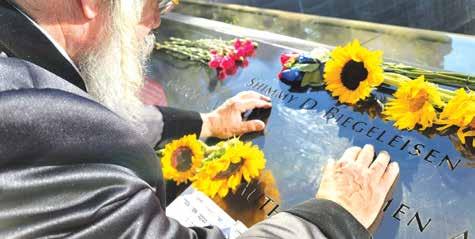
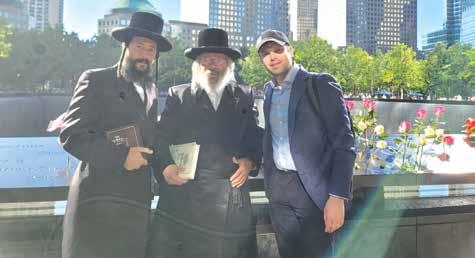



Khal Anshei Shalom of Harborview held a beautiful Adopt-a-Kollel launch of their new partnership with Kollel Beis Dovid led by Rosh Kollel, senior posek HaGaon HaRav Yitzchok Zilberstein, shlita. The Melava Malka launch event was held at the home of Adopt-a-Kollel Gabbai, Mr. and Mrs.

Cedarhurst 9/11

Dov Lebovic. The event also featured an inspiring video presentation where Rav Yitzchok Zilberstein personally thanked the shul members for their shutfus. The event was addressed by Adopta-Kollel gabbai, Dr. Akiva Bergman and Adopt-a-Kollel coordinator Rabbi Chaim Heller.


Twenty-three years have passed since September 11, 2001, and once again, the Village of Cedarhurst hosted its annual memorial ceremony at the 9/11 Memorial in Andrew J. Parise Park. The Village commemorated the events of that day with a moving ceremony that reminded the gathered elected official, first responders, family member and friends about the tragic terrorist attacks that shook our nation, and honored and paid tribute to the heroes and loved ones we lost.
The ceremony was graced by religious leaders and elected officials who offered words of inspiration, healing, and prayer, reflecting on the sacrifice and legacy of those we remember.
With each toll of the bell, the Village paid heartfelt respect to those who perished in the collapsed towers: Kevin
O’Rourke, Joseph Rivelli Jr., Thomas Jurgens, Neil D. Levin, Bettina Browne Radburn, Ira Zaslow, and Howard Selwyn. Their names are forever etched in our hearts as a testament to the enduring legacy we honor within our community. Mayor Benjamin Weinstock presided over the commemoration that was attended Cedarhurst Board of Trustees, the Lawrence-Cedarhurst Fire Department, Meadowmere Fire Department, American Legion Lawrence-Cedarhurst Post 339, Rabbi Gedaliah Oppen of Congregation Eitz Chaim, Deacon Tom Costello of the R.C. Parishes of the Five Towns, Lawrence High School, Nassau County Executive Bruce Blakeman, NYS Senator Patricia Canzoneri-Fitzpatrick, NYS Assemblyman Ari Brown, and Town of Hempstead Councilwoman Melissa “Missy” Miller.

By Chaim Gold
If there was ever a time that Klal Yisrael needed to unite in a massive outpouring of tefillah and achdus; if there was ever a time when tens of thousands of tinokos shel beis rabban needed to come together to invoke rachmei shomayim, that time is now! The world is on fire. Eretz Yisrael is under attack from multiple enemies, surrounded by ruthless adversaries who seek to destroy all Jews. Antisemitism is running rampant in ways that have not been seen since the Holocaust. The stability of the world order is under threat and the fingers of Jew haters are being pointed at us. They have come out of the shadows, and they are unabashedly in the open.
That is why Dirshu’s 10th Annual International Yom Limud and Tefillah, to be held on 24 Elul/September 27, the Chofetz Chaim’s yahrtzeit, can’t come sooner.
There is perhaps no one in recent generations who did so much to help and enrich Klal Yisrael – both in sur mei’rah and asei tov as the Chofetz Chaim. Whether it is the sefer Chofetz Chaim that brought to the forefront of Klal Yisrael’s agenda the importance of being careful with one’s speech, Ahavas Chessed that codified all the halachos of chessed, or the Chofetz Chaim’s magnum opus the sefer Mishnah Berurah that continues to be the foundational daily halacha sefer in Klal Yisrael, still today we are being spiritually enriched by the Chofetz Chaim.
Certainly, the Chofetz Chaim, through his sefer Likutei Halachos on hilchos korbanos in the Beis Hamikdash, also brought the concept of tzipisa l’yeshuah, longing for the ultimate redemption to the forefront of public consciousness. Thus, there is no doubt that the day of his yahrtzeit is a tremendous eis ratzon, an opportune time for tefilla and for invoking rachmei shomayim on behalf of all Klal Yisrael.
For this reason, Dirshu, in a remarkable global effort to invoke rachmei shomayim, is holding a multifaceted Yom Limud and Tefillah that will encompass all of Klal Yisrael the world over, including tinokos shel beis rabban, bnei yeshiva, Bais Yaakov schools, baalei batim and any caring Jew.
This year’s Yom Limud and Tefillah

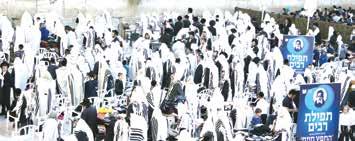
will also showcase a special videocast on Motzoei Shabbos, 25 Elul, at 9:00 p.m. EDT, and running throughout Sunday. The videocast will feature unique chizuk by leading Gedolei Yisrael including HaGaon HaRav Shimon Galei, shlita, Mashpia and Rosh Kollel, HaGaon Harav Shmuel Eliezer Stern, shlita, Av Beis Din Shaarei Horaah, Rav David Ozeri, Rav of Congregation Yad Yosef of Brooklyn, Rav Dovid Hofstedter, Nasi Dirshu, Rav Daniel Glatstein, Rav of Kehilas Tiferes Mordechai of Cedarhurst, and Rav Zev Smith, Maggid Shiur Dirshu, Daf HaYomi B’Halacha and Irgun Shiurei Torah. One of the highlights of the videocast promises to be historical footage of HaGaon HaRav Gershon Edelstein, zt”l, wherein he gives detailed hadracha for Bnei Torah on how to succeed in learning.
The Chofetz Chaim’s Yahrtzeit
The great tzaddik Rav Nosson Wachtfogel, zt”l, Mashgiach of Lakewood, would often say, “We cannot forget that the Chofetz Chaim’s yahrtzeit is at this time of year right before Rosh Hashanah For some reason, no one makes a big deal out of it, but they should.”
This was said by Rav Wachtfogel more than two decades ago, but over the last ten years, Dirshu, the organization that promotes accountable Torah study and mussar, has been making a big deal about the Chofetz Chaim’s yahrtzeit and its juxtaposition right before Rosh Hashanah. Undoubtedly, the videocast with divrei chizuk from the Gedolim in honor of the Chofetz Chaim’s yahrtzeit serve as an ideal way to prepare for the Yom Hadin
An even greater zechus is the remarkable achdus that will be seen on that day!
Klal Yisrael, in six continents, across various countries, will be united by learning the same page of Mishnah Berurah, from siman 266 in hilchos Shabbos, the page learned in the Daf HaYomi B’Halacha
program for 24 Elul, and chapter 11 in the sefer Chomas Hadas, written by the Chofetz Chaim.
Klal Yisrael will also come together to recite chapters 20 and 130 of Tehillim followed by the tefillah of Acheinu Beis Yisrael
From Melbourne, Australia to Bnei Brak, from Lakewood, New Jersey to Johannesburg, South Africa, from Cleveland, Ohio, from Buenos Aries, Argentina, and Phoenix, Arizona, to Toronto, Canada, from Antwerp, Belgium to Pinsk, Poland… Klal Yisrael will come together to daven and invoke rachmei shomayim in advance of the Yamim Noraim. Chadorim and Schools the World Over
Simultaneously, a unique program for schools will take place in more than 300 cities across the world with many hundreds of participating yeshivos, chadorim and Bais Yaakovs. In Eretz Yisrael alone, over a half million boys and girls will be participating in the special programing.
The remarkable, school-age program designed by Dirshu is sure to have a tremendous impact on multitudes of children both in major Jewish centers and in places far from Yiddishkeit hubs. Created with the singular goal of connecting children to the teachings and life of the Chofetz Chaim, the 36-page booklet features beautiful stories about the Chofetz Chaim together with hashkafa and mussar as taught by the Chofetz Chaim all compiled into an age-appropriate, user-friendly, easy-to-understand booklet, replete with magnificent illustrations. There is also a section that teaches children about the sefarim that the Chofetz Chaim wrote and their purpose.
The captivating stories and graphics are sure to motivate the children in each age group to read and be inspired. In addition, the combination of riveting graphics and clarity has been hailed by
leading menahelim and mechanchim as a tremendously successful way of bringing alive the lessons of the Chofetz Chaim. This is aside from schools, chadorim and Bais Yaakovs across the length and breadth of Eretz Yisrael and Europe who will also participate in the Yom Limud and Tefilla. According to Rabbi Gershon Kroizer of Dirshu, “Hundreds of schools in Eretz Yisrael, North America and Europe that together comprises hundreds of thousands of children will participate in the Yom Limud and Tefilla utilizing the unique content provided to commemorate the auspicious day. The impact on young boys and girls learning about the Chofetz Chaim will be huge,” he exclaimed.
There will also be tens of schools in the Former Soviet Union, schools in South Africa, Australia, and South America participating in this momentous day, making it truly worldwide!
In Eretz Yisrael, an asifas tefillah will also be held the night of the yahrtzeit at the kever of the Chazon Ish and the Steipler in Bnei Brak and at the Kosel Hamaaravi on the morning of the yahrtzeit, attended by lomdei Dirshu and graced by Dirshu’s Nasi, Rav Dovid Hofstedter. With Rosh Hashanah nearly upon us, everyone recognizes what a monumental Yom Hadin we are facing. The world is an extremely unstable place. Klal Yisrael needs YOU to daven together with hundreds of thousands throughout the world on Dirshu’s Yom Limud and Tefilla, and we ALL need the words of the Gedolim broadcast on the videocast for guidance and chizuk in advance of the New Year. We ALL need the tefillos of tinokos shel beis rabban on this auspicious day. Join with Klal Yisrael in the Yom Limud and Tefillah on Friday, 24 Elul/ September 27 and tap into this unique eis ratzon!
As American college campuses erupt in protests against the war in Gaza, university presidents step down and antisemitism rises, Touro University welcomes a record high number of students for fall 2024. Touro’s Lander Colleges, serving the observant Jewish community, saw an average increase of more than 35% in overall enrollment of new students and a nearly 60% rise in transfer students.
Students who transferred from Ivy Leagues and state universities in Florida, Maryland and New Jersey, reported high levels of discomfort being Jewish on secular campuses since October 7. Many who seek careers in medicine, dentistry and the health sciences are turning to Touro University where they have the opportunity to continue their professional studies in an environment that respects their values.
One such student is 20-year-old Adam Commer of Livingston, New Jersey. After spending his gap year at Ashreinu in Israel, Commer enrolled as a freshman at Rutgers University where he planned
to study biology in preparation for a career in dentistry. Early on in the year, Commer reports that things started to change. “Right after October 7, the Jewish students started organizing vigils for Israel and at the same time, Palestinian students were protesting and bashing us. We tried to talk peacefully but they were having none of it. They felt their ‘truth’ was the only point of view. When I came back to school after Pesach, I was greeted by an encampment and couldn’t get to my classes safely as they had blocked off the path. This was the last straw for me.”
Commer said he decided to transfer to Touro’s Lander College of Arts & Sciences with the support of his family. Now a pre-dental student at Touro University, Commer is “thrilled to be able to be an observant Jew on campus while pursuing my dream career. Touro University had great appeal to me because of the opportunity to continue on to professional school that offers state-of-the-art training in an environment that’s in sync with my values, at Touro College of Dental Medicine.”
HAFTR High School is proud to announce that Sean Harris has been named a Semifinalist in the National Merit Scholarship Program. This prestigious recognition, awarded to students who score in the top 1% on the PSAT, is an outstanding achievement that brings immense pride to the HAFTR community.
When reflecting on his success, Sean was humble but grateful for the exceptional academics and support he has received at HAFTR. “The constant encouragement and emphasis on curiosity in the classroom helped me gain the knowledge and drive to do well,” he shared. He also credited the dedicated college guidance team for providing valuable resources that helped him practice and refine his skills, ultimately leading to his remarkable PSAT performance. Sean now looks forward to the next stage of the competition, hoping to secure a $2,500 scholarship awarded to National Merit Finalists.
Naomi Lippman, Head of School of HAFTR High School, expressed her delight, stating, “I am thrilled that Sean
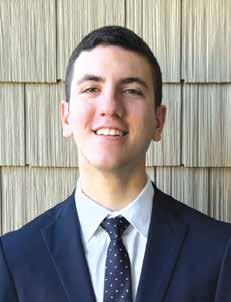
Harris has been named a National Merit Semifinalist. This achievement is a reflection of his tremendous intellectual abilities and the rigor of HAFTR’s challenging educational program.”
We are immensely proud of Sean and look forward to seeing what he will accomplish next!
Commer has hundreds of peers at the Lander Colleges who are on the path to medical and dental school and planning to continue in the Touro University system.
“We are proud to welcome all of our new students to Touro and offer a safe haven to Jewish students at this volatile time,” said Dr. Alan Kadish, Touro University President. “No one has to give up on their academic or professional aspirations because of the unrest on campuses. As a national leader in health and medical education, Touro has expanded our offerings to include seven medical schools, two dental school campuses, seven physician assistant programs and top-rated programs in health sciences. Beyond health sciences, Touro’s accounting CPA program is one of the top in New York State and students can pursue any and all careers they choose at Touro –from prelaw and education to finance, technology, cybersecurity and more.”
Dr. Marian Stoltz-Loike, dean at Touro’s Lander College for Women, shared that “the significant increase in enroll-

transferred from Rutgers, in the lab on campus at Touro in Flatbush
ment at Lander College for Women is part of the upward trend we have been seeing over the last few years. It was accelerated because of the fallout of October 7 around the country. For prospective and current students, Lander College for Women offers academic excellence and Torah values, which is what our students seek in an educational experience.”
For more information on Touro’s Lander Colleges, visit touro.edu/landercolleges.

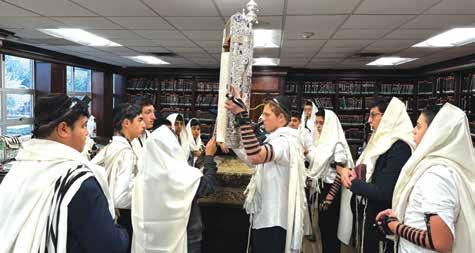
The Sephardic minyan at Yeshiva Darchei Torah’s Mesivta Chaim Shlomo meets twice a week. On Thursday mornings, they use a beautiful, mehudar Sefer Torah that was provided by a Sephardic alumnus of the Yeshiva, Mr. Solomon Sarway.

This week, the Shulamith Class of 2028 officially stepped into high school by stepping out of their comfort zone. At our annual Camp Oneka retreat, SHS freshmen were challenged intellectually, physically, creatively, and socially through activities from rock climbing to car engineering. They interacted with new and old peers
Throughout the year, Morah Morah Suzy Libin teaches Lev Chana kindergarten classes about various artists and their unique styles. This week, Morah Suzy introduced the children to “Dot Artist” Yoyi Kazuma. They then combined dot art with sukkot themes, creating their very own fun and beautiful work of art!


to problem solve and compete as they Faced Their Fears. Set on a picturesque campground, the girls got to spend their downtime playing sports, sitting by the lake, or strolling with new friends. Based on the spirit and enthusiasm exhibited by this grade on their retreat, we can’t wait to see what the Class of ‘28 brings to SHS over the next four years!

Yeshiva Darchei Torah fourth graders learning about water molecules in the Yeshiva’s state-of-the-art science laboratory

The HANC High School Class of 2028 was inaugurated into high school at the annual Freshman Experience last week. The students participated in a day of amazing activities, good food and “just getting to know one another.”
The day began with a rigorous hike at Peanut Leap Cascade in New Jersey’s Englewood Cliffs. Students bonded as they navigated the challenging trail, which culminated in breathtaking views of the Hudson River. The group then traveled to Ross Dock Park, a scenic spot near the base of the George Washington Bridge, where they enjoyed a pizza lunch.
Next, they visited Urban Air, a trampoline park in Hackensack, NJ. At Ur-
ban Air, students jumped, bounced, and laughed while playing dodgeball, basketball, navigating the ninja warrior course, and jousting over trampolines and foam pits. The day concluded with a delicious dinner from Carlos & Gabby’s back at HANC.
Thank you to The Student Life Team (Rabbi Daniel Mezei, Rabbi Judah Hulkower and Ms Elianna Samimi) for organizing the entire program. The trip was a success due to Rabbi Aaron Friedler’s expertise in guiding the hike and the senior advisors who helped lead the students to the rough terrain. Kudos to grade mechanchim, Mrs. Miriam Steiner and Rabbi Nafi Orlofsky, and to all the administrators who joined the event.

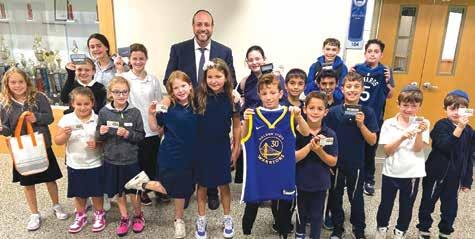
Last week, close to 500 students at HALB participated in the new technology initiative, Screen Free to be Me. Students are challenged to stay off screens for a minimum of 90 minutes
each night, encouraging quality family time, more reading, new hobbies, and more time to play without the distraction of a screen. Congratulations to this week’s raffle winners!

Mr. Altabe, HALB Lower School Principal, and HALB parent
Jon Katz attended the opening of the Long Island Unites Voter Engage -
ment office, a project of the OU. The organization is aimed at getting maximum voter turnout in the elections in the Five Towns and Far Rockaway area.
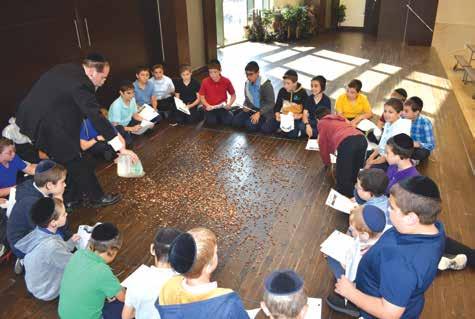
Rav Asher Shteierman, fifth grade rebbi at Yeshiva Darchei Torah, enlisted his talmidim to help bring to life the classic case of the Mishnah/Gemara in Perek Eilu Metzios that
they are learning: “Kav B’arba Amos,” when a specific measure of produce is scattered within a defined area, and its relevant halachos of hashavas aveidah, returning a lost item to its owner.

eighth grade boys had a great time at their Student Council kickoff BBQ
In a few days, Lomdei Oraysa across the globe will be celebrating the completion of Maseches Sukkah with the Oraysa program.
With its many practical sugyos relating to the mitzvos of the yom tov of Sukkos, the completion of Maseches Sukkah is truly a cause for celebration.
Immediately following Sukkah, Oraysa lomdim will begin the next Masechta, Maseches Beitzah.
Beitzah is especially exciting because
the timing of this Masechta coincides beautifully with the calendar, being that it deals with hilchos yom tov and begins right before Tishrei.
Participants describe the immense satisfaction that they receive from the innovative program that calls for the studying of one new Amud a day, 5 days a week, reviewing the previous day’s amud, with Friday and Shabbos dedicated to reviewing the week’s limud. With this format, each Amud of Gemara is learned and mastered.
Oraysa Lomdim say that the program has changed their lives, raising the bar of their learning to new heights, with new chaburos and shiurim forming in more and more locations and cities around the world.
On a local level, Oraysa has helped organize shiurim and chaburos across America, Canada, Eretz Yisroel and Europe. Lomdei Oraysa know that wherever they find themselves, they are more than likely to find an Oraysa chaburah to join for the day.
The start of Maseches Beitzah is a great time to get on board and benefit from all Oraysa has to offer. If you are looking to acquire a Masechta and gain daily satisfaction in your learning, Oraysa may just be the program you are looking for!
To join Oraysa for Masechet Beitzah, for more information, to set up or join a shiur or chaburos in your neighborhood, please contact Oraysa at 914.8.ORAYSA or email info@oraysa.org.




Happy
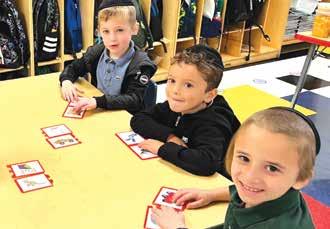
When over 80 Orthodox Jewish mental health providers gathered recently, the conversation focused on the state of mental health in the Orthodox community and then turned to the topic of anxiety, both among clients and therapists themselves.
The morning-long gathering of mental health providers from the Five Towns, West Hempstead, Queens and elsewhere was a community program of NEFESH International, the network of Orthodox Jewish mental health providers. Rabbi Shalom Axelrod welcomed the group to the Young Israel of Woodmere and stressed the importance of the work that NEFESH and its members do.
Dr. Norman Blumenthal, a licensed clinical psychologist in Cedarhurst, Director of Trauma Services for Ohel’s Zachter Family National Trauma Center and Adjunct Professor at the Rabbi Isaac Elchanan Theological Seminary and Ferkauf Graduate School of Psychology, both of Yeshiva University, started the program by stating that the “pall of October 7th lies heavily on the community.” He cited a “meteoric rise in anxiety” and then listed three other issues with which the community is grappling: 1) “school refusal,” involving students’ chronic absenteeism or refusal to attend school at all; 2) “failure to launch,” with young adults in their 20s and 30s struggling with the transition to adulthood and unable to leave home and support themselves; and 3) family alienation and estrangement.
In discussing the commonality of the three problems, Dr. Blumenthal pointed to connections and interpersonal relations, and the lack thereof. He explained that part of the problem is a delayed reaction to the trauma of COVID isolation. In addition, social media has created a “pseudo-connection” that has skewed
closeness and diminished interpersonal connections.
The main part of the program was a clinical discussion about anxiety. In a presentation entitled, “Calming Concern: Mastering Anxiety in Clients and Ourselves,” Professor Elan Javanfard, MA, LMFT, addressed the assembled group of psychiatrists, psychologists, social workers and licensed therapists. Prof. Javanfard, who lives in Los Angeles, is a consulting psychotherapist, a professor of psychology at Pepperdine University and Touro University, and the Division Director for Crisis Services at Didi Hirsch Mental Health Services in LA.
Prof. Javanfard discussed recognizing the symptoms of anxiety, including cognitive, emotional and physical symptoms. He shared that evidence-based treatments can be applied and the importance of using techniques and measurements from Cognitive Behavioral Theory (CBT), Dialectical Behavior Therapy (DBT), and Acceptance and Commitment Therapy (ACT) for tracking and managing anxiety in clients. He stressed the enhancement of self-awareness, the development of skills for identifying personal anxiety triggers and the implementation of strategies to manage them effectively. He also encouraged self-care practices that therapists can use to reduce their own anxiety, prevent burnout and maintain professional effectiveness.
Pointing to anxiety disorders as the most common mental illness in the U.S., and on the rise among children and teenagers, Prof. Javanfard told the audience that they are highly treatable. His 2.5 hour presentation on the topic counted as accredited continuing education required of audience members. Email elan. javanfard@gmail.com to obtain a copy of the presentation.
Rabbi Yussie Zakutinsky, Mora
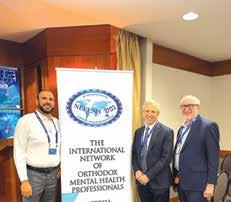
D’Asra of K’hal Mevakshei Hashem in Lawrence, NY, closed the program with divrei chizuk for NEFESH’s Orthodox mental health providers. He told them that they are “mission-oriented and driven people in mental health” and said he wanted to frame the work they do so that they can appreciate their “responsibility and gift from Hashem to help Yidden.”
Citing a pasuk in the past week’s Torah reading that prohibits the muzzling of an animal while it works in the field, Rabbi Zakutinsky said that an individual’s “animal soul” has to be healthy so that the “G-dly soul” can make the world better and draw closer to G-d. He explained that mental health providers perform the job they are tasked with so that this can happen and so that “the G-dly soul lights the entire world by functioning through an animal soul that’s not muzzled” by mental illness. He ended by saying, “Hashem wants Yidden to help Yidden” and that the members of NEFESH, and what they do as mental health providers, are very much needed.
The September 15th NEFESH community program was emceed by NEFESH President Dr. Barry Holzer and NEFESH
Morah Shulamis Kalish’s pre-1A students at Yeshiva
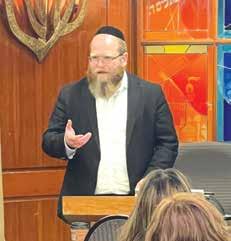
Rabbi Yussie Zakutinsky speaking at the event
Executive Director Cynthia Darrison. It featured a breakfast sponsored by Transcend Mental Health & Addiction Recovery Services, lunch and networking sponsored by Ohel Children’s Home & Family Services, and additional sponsorship by Touro University, Ray of Hope, MASK and Recovery at the Crossroads. NEFESH International has close to 1200 members worldwide and offers unparalleled advantages of an extensive network of colleagues dedicated to the valuable exchange of ideas and collaboration for the betterment of clients and community. Activities include a vast online education program, community programs across the country, programs for students and early professionals, a new track for mental health agency executives and more. This year’s Annual NEFESH Conference will take place December 1822, 2024 in the Sheraton Parsippany in NJ. The Wednesday evening, December 18th program is complementary. For further information about NEFESH, please contact secretary@nefesh.org

On Sunday night, Rabbi Englander hosted a Meet and Greet for new HALB families at his home. New HALB parents had the opportunity to learn more about the school, the administration, and meet each other. Welcome to the HALB Family!
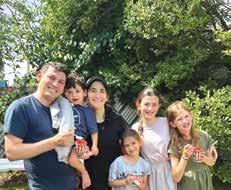
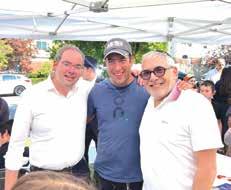
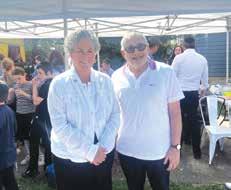
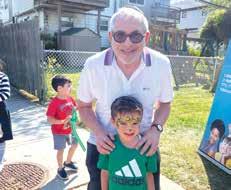





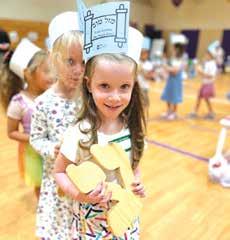
What a welcome the talmidos of TAG’s Early Childhood Division received as they were welcomed back to TAG. Walking through the welcome arch, they entered

their classroom and immediately started learning all about Elul. They even had the zechus of hearing the shofar being blown by TAG’s Executive Director, Rabbi Moshe Zimberg, followed by the Alef

Bais Breakout celebrating the start of learning the Alef Bais in the Kindergarten classes.

Parents at Mercaz Academy loved the academic program for toddlers available in prior years, but had one request: more, please! So, by popular demand, Mercaz Academy has expanded its Toddler Program to offer a full-day option.
Principal Rabbi Kalman Fogel and Early Childhood Director Joanne Mlotok set the plan in motion, and Executive Director Seth Alexander and Assistant Principal Karen Leeper diligently researched and fulfilled all state requirements to obtain a daycare license. The program offers families the ability to
tailor the hours to their needs, with base hours from 9:00 AM to 2:00 PM, and the option to drop off children as early as 8:00 am and pick them up as late as 5:00 PM.
Best of all, thanks to the generosity of a Mercaz Academy grandparent, tuition costs are subsidized to make the program even more affordable for young families.
While the extended hours meet the practical needs of busy parents, Mercaz Academy’s Toddler Program is not simply a daycare service. The Toddler Program is designed to provide a solid foundation for students’ future educational journey,


led by highly trained and experienced early childhood educators who are dedicated to nurturing young minds. Even the youngest students at Mercaz Academy develop their language, social-emotional, and cognitive skills through expe -
riential Torah learning.
By combining the convenience of fullday care with an expansive educational experience, Mercaz Academy is setting a new standard for toddler programs.



Over the past week, in addition to its typical routine of packing and sending gear and supplies to Israel (including a container load of shoes and clothing for displaced families!), the Chesed Center hosted two unbelievable events.
On Wednesday night, September 11, the Chesed Center played host to the final Sheva Brachot of Raylie (Bodner) and Yakov Tishler. Raylie, quite literally, started the Chesed Center operation –immediately after Simchat Torah ended on October 8, she and her siblings (in Israel and the Five Towns) sprang into action, promoting the collection of supplies which resulted in sending over 400 duffel bags of goods on October 9! Since then, her father, Moshe, and his partner, Jeff Eisenberg, have grown the Israel Chesed Center into one the largest providers of aid to Israel, and perhaps the only com-
munity-based operation engaging individuals and assisting thousands of people in performing daily acts of chesed on behalf of our brothers and sisters in Israel.
Jeff noted during the sheva brachot that the event was truly a community simcha, as the Bodner family has successfully united the entire Five Towns community in support of Israel since the moments after the War began.
Mazal tov to the Bodner and Tischler families, and the entire community, on this simcha – may we only share in simchos going forward!
Since its inception, the primary goals of the Chesed Center have been (a) delivering critical gear and supplies to Israel, and (b) community engagement – ensuring that members of the local community and beyond remain informed of the needs, aware of opportunities to assist, and receive support for their own initia-

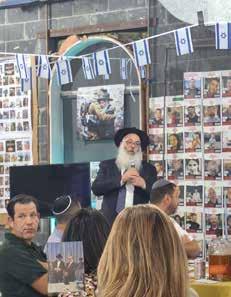
tives. The ICC encourages and enables everyone, from pre-schoolers to senior citizens, to become ambassadors for projects, and offers every community member the opportunity to identify a need that he or she can fall in love with.
On Sunday, September 15, the Chesed Center accomplished both goals, as nearly 1,000 people participated in the Yom Tov Shuk, which featured fifteen local vendors selling food, wine and gifts, with a portion of all proceeds going to the Chesed Center. Anyone interested in ordering items from the Chesed Center vendor partners may do so through Sukkot – forms are available at the Center.
In addition, all of the community’s Sukkot needs can be met at the Chesed Center, where a full-service Sukkah shop is open to the public, and an Arba Minim Shuk will open on October 8. Simultaneously, the Chesed Center is running a campaign, in partnership with the IDF and Kehillat Shir Chadash in Jerusalem, to provide 5,000 Arba Minim sets to Chayalim – at $27 per set, virtually anyone can share in the mitzvah of ensuring that any Chayal who wishes to receive his own Arba Minim set will be accommodated.
Moshe Bodner commented that “we hope the war will end today and we can close up,” and his partner, Jeff Eisenberg, added, “Yes, but we will stay in business, helping anyone who needs assistance, even when the war ends. We expect to be here for at least two months after the war ends, which we pray will happen very soon.”
But these two men, along with their team of volunteers, are preparing to continue to engage the community, especially over the next few weeks. On September

29-30, the Chesed Center will host a bake sale, with over 50 local bakers signed up so far, offering challah and other baked goods for Rosh Hashana.
With the 1-year anniversary of the Simchat Torah Massacre looming, the Chesed Center plans to be, as Bodner stated, “open to the entire community as the place to go on October 7, to commemorate and to mourn. In Israel, you can go to the Nova site or to one of the kibbutzim, and every community will have its observances. Here, you can come to the Chesed Center, to express your grief and to be connected to all of Am Yisrael.”
The Chesed Center is planning a full day of activities on October 7, beginning with a “Unity Shacharit” for high school senior boys from many local yeshivot, and continuing with an all-day “Am Echad B’lev Echad” mosaic project, in which all visitors will participate in making Mosaic Art in commemoration of October 7, which will be displayed locally and in Israel. In addition, all schools and youth groups are invited to join in the Unity Flag project, allowing kids to express themselves in designing flags that will connect us with our extended family in Israel.
The Israel Chesed Center is located at 1315 Peninsula Blvd., Hewlett, and is open daily. For more information about any of its activities or projects, please contact israelchesedcenter@gmail.com. To join the Israel Chesed Center volunteer WhatsApp chat, go to tinyurl.com/ ChesedVol.

Standing at the precipice of despair, your world crumbles beneath your feet. The whispers of darkness grow louder, drowning out any flicker of hope. This is the reality for countless individuals in our community – people grappling with the suffocating weight of mental health crises, addiction, trauma, and abuse. In these moments of utter darkness, when all seems lost, there’s one beacon that refuses to let the light go out: Amudim.
Amudim: Not a Helpline, A Lifeline Amudim isn’t just an organization; it’s a constant presence, a lifeline that reaches into the abyss, grasping firmly to pull you back from the brink. When someone reaches out—voice trembling, spirit broken—they’re not met with cold statistics or impersonal advice. They’re embraced by a dedicated clinical case manager who becomes their unwavering ally in the fight for their life and hope for their future.
Saving Lives, Every Case, Every day.
For Amudim’s case managers, each ring of the phone is a new challenge, a new opportunity to make a difference. These dedicated professionals are more than just trained experts; they’re companions,
The Amudim Process
confidants, and guides. They’re there every step of the way, providing support, important resources, and a listening ear.
Meet Sarah, an Amudim case manager. Last month, she received a call from a young mother contemplating suicide. Sarah didn’t just talk her off the ledge; she became the ledge—a solid foundation of support that lasted well beyond that harrowing night. For weeks, Sarah was there, guiding not just the mother but her entire family through the turbulent waters of recovery, one day at a time.
Take David’s story. Trapped in the merciless grip of addiction, he had lost his job, his family, and nearly his will to live.
His Amudim case manager, Michael, didn’t just point him towards rehab—he walked every step of the journey with him. From late-night crisis calls to accompanying him to court dates, Michael was the constant presence that reminded David that he was worth fighting for.
A Network of Support
Amudim’s impact extends far beyond individual cases. With case managers stationed in communities across 66 countries, they’re a network of support that’s always within reach. Amudim is on the case to prevent crises and build stronger communities. Through
When someone reaches out to Amudim, we begin by gathering essential information through a brief intake process. This helps us understand the nature of the crisis and determine the best course of action.
Initial Assessment: We carefully listen to the caller’s concerns, trying to paint a picture of their mental state and the challenges they’re facing.
Needs Triage: We prioritize the most urgent issues and develop a plan to address them effectively.
Case Assignment: The caller is assigned to a dedicated case manager who will provide ongoing support and guidance.
Navigating Complex Challenges
Amudim’s case managers are equipped to handle a wide range of complex situations. Whether it’s someone struggling with addiction, facing a mental health crisis, or dealing with the aftermath of trauma, they’re there to help in the most professional and encouraging way possible. Family Dynamics: Amudim understands that crises often impact entire families. Our case managers work with families to address underlying issues and provide support to all members.
education and awareness, they aim for prevention and to create our world as a place where lifesaving support for those struggling with mental health, abuse, addiction and trauma is easily obtainable. With thousands of new cases a year, our annual campaign is the lifeblood of our organization, fueling our ability to assign case workers to each person in need and to serve our people.
The Power of You
Now, imagine yourself standing not at the edge of that abyss but at the precipice of change. The work Amudim does is monumental, but they can’t do it alone. It takes Amudim. It takes their tireless case managers. And it takes you—yes, you—to make miracles happen.
Your support isn’t just a donation; it’s a lifeline thrown to someone drowning in despair. It’s the difference between a child lost to addiction and a family reunited. It’s the whisper of hope in the darkest hour that says, “You are not alone.”
Get on The Case
The time to act is now. Will you answer the call? Will you stand with Amudim and declare that in our community, no one fights alone?
Your support can help save lives, every case, every day. It can be the hand
Cases to Date- 18,977
Annual Budget- 8,000,000
66 Countries Worldwide
Queens-1136
Bergen County-215
Los Angeles-315
Baltimore-355
Lakewood-1908
5 Towns and Far Rockaway-953
Detroit-131
Texas-94
Florida-494
Chicago-143
Cleveland-213
Passaic-303
Monsey-1965
Boro Park-1306
Flatbush-2168
Crown Heights-634
Williamsburg-251
Abuse Cases Addiction Cases
Mental Health Cases At Risk Cases
Narcan Kits
500,000+ CRISIS CALLS
that pulls someone back from the brink, the voice that breaks through the silence of suffering, the light that pierces the darkest night.
Amudim is On the Case. By their side, every day; our case managers are giving them the strength to stand again.
With thousands of new cases a year, our annual campaign is the lifeblood of our organization, fueling our ability to assign case workers to each person in need and to serve our people.
It’s a case of life and death. Of helplessness or hope.
And you can be part of the deciding factor.
Get on the Case Today. Showcasing the Best of Amudim Join us for 36 hours of entertainment as we raise 5 million dollars!
To me, Amudim’s mission means everyone is worthy and capable of receiving help. It’s important to know help just one phone call away.
They’re saving lives, every case, every day.
Will you get on the case, too?
We need Amudim.
We need our Case Managers. And we need people like you to make it all happen.
1. Shye Leykin is On the Case
“Amudim provides help to people in all corners of the world. Working here has given me the chance to help as many people as I can, not just locally but worldwide.”
2. Michali Goldfeder is On the Case
Amudim’s mission is important to me because there are hundreds of people in every community who feel alone, unworthy, and unseen and if we can normalize asking for help and have an impact on even one person, we fulfilled our mission.
3. Ariella Miller is On the Case
Saving lives, every case, every day.
Only until more recent years, mental health has been a taboo subject in the world, especially amongst the Jewish communities. Oftentimes, people don’t know who to turn to, nor have the resources to get help. This can be especially true in cases of sexual abuse and addiction. Amudim has provided – and continues
to provide – a safe space in which clients can confidentially request support and guidance. As someone who has seen this need on a daily basis, Amudim has become extremely important to me as it provides more and more people with this critically needed care and support.
4. Naftaly Herskovic is On the Case
We fill a role that is sorely lacking in the Jewish world.
Drug addiction and mental illness are still Taboo. Amudim is slowly changing the negative perception. It needs to be accepted like diabetes or high cholesterol. It’s not people’s fault that they are ill, but it’s their responsibility to work on themselves. Without compassion and understanding from the Jewish community, healing becomes unnecessarily harder.
5. Ariella Rouhani is On the Case
Saving lives, every case, every day.

The Gesher students had a blast at their annual Tishrei Shofar Factory! Each child was able to see different animals that are used to make a kosher shofar and even saw how a shofar was made. Every class even got their own new shofar to blow every day in the month of Elul.

here was excitement in the air in HANC Early Childhood Center in West Hempstead this past week. In addition to getting to know their classmates and acclimating to the routines in their new classrooms, you could feel the energy as the yeladim prepared for the upcoming holiday of Rosh Hashana. The children learned about what we daven for on Rosh Hashana and the special foods that we eat, like apples dipped in honey, pomegranates and other new fruits.
Utilizing multiple educational elements across the curriculum, the yeladim learned the different names of the apples, performed experiments with apples and even painted with apple slices. They developed a size chart to see how many apples’ tall they were and planted apple seeds so that they could watch them grow.
After examining the shofar and learning about its significance in the celebration of Rosh Hashanah, the children worked their little fingers by placing a shofar shape on a large piece of paper and finger painted all over the page. Morah Trudy Rubinstein, HANC Early Childhood Director, added, “It was so terrific to watch the children’s faces and expressions as they lifted the shofar shape and saw a white shofar in the center of their

paper, surrounded by their colorful painting.” An assortment of honey dishes decorated the ECC as each class designed their own. Fine motor skills were employed by the children as they cut and created their magnificent honey jars that will surely enhance their families’ yom tov table.
The children have gained so much knowledge from the enriching, experiential lessons, and they are developing new skills each and every day. By the time Rosh Hashana arrives, they will be able to participate actively in their family’s celebration, and their beautiful artwork will certainly be admired by one and all.



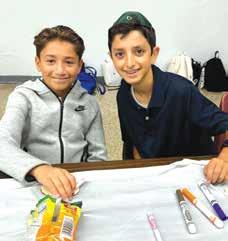
New students received a special welcome to the YCQ family at a mentorship event last week. Each new student was paired with a grade 8 student who gave them a tour of the school and a cute gift. Students got


to know each other and collaborated on a Rosh Hashana themed project. Thank you to our Mental Health Counselor, Mrs. Aviva Dua, for organizing such a wonderful event!

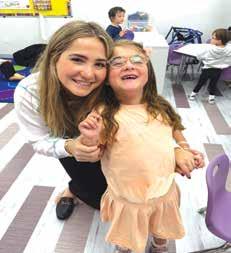

At the 7th grade girls’ bonding event, the gym was filled with laughter and anticipation as each student received a colorful M&M. The twist? Each color came with a unique prompt to share something personal. Red stood for a favorite hobby, blue for a memorable experience, green for a goal, yellow for something they were proud of, and brown for a fun fact. As each
girl picked an M&M from the bowl, she shared her story with the group, creating an atmosphere of connection and discovery. By the end of the activity, the students had learned something new about one another, forming deeper bonds and building a sense of unity and support that set a positive tone for the rest of the year.
The Flying Challah program, which sends every new family at HAFTR a freshly baked challah for Shabbos, was a huge success. This year, the HAFTR PTA sent out 42 delicious loaves to these families. Welcome to all of our new families to the HAFTR community!


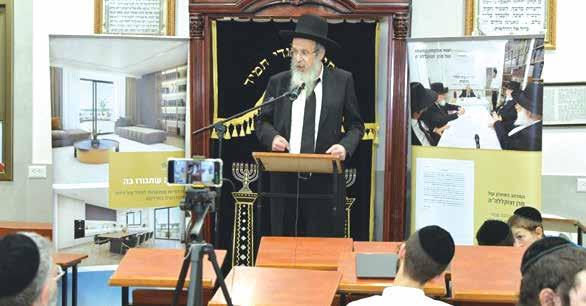
The Kiryat Beit Halevi project in Netivot is well underway, aiming to establish a vibrant Torah community with 36,000 housing units to be built over the next few years. This development will include multiple Talmud Torahs, kollelim, yeshivas, shopping centers, and playgrounds, creating a community approximately the size of Kiryat Sefer (Modiin Ilit) today. In addition, another 12,000 units are planned for the Kiryat Beit Halevi community, offering homes at significantly lower prices—starting around $200,000 less than similar properties in established haredi communities like Jerusalem, Bnei Brak, and Beit Shemesh. The result: a complete transformation of this area within Israel’s periphery into a center for heimish living.
As Kiryat Beit Halevi continues to take shape and with the strong backing of prominent rabbonim and gedolei yeshivos, the initiative has moved from words to action, embodying a deep commitment to building a Torah-true community in the South. Recently, a series of gatherings with leading rabbonim and anshei maaseh have taken place, highlighting how Kiryat Beit Halevi is rapidly becoming a community for young families seeking affordable housing, quality chinuch, and a strong kehillah, all within a framework that upholds our mesorah and values.
At a recent gathering, Rabbi Shraga Boyer, shlita, addressed the need for greater awareness and quality among families joining the Netivot community. He emphasized the importance of carefully selecting the first wave of residents to set a high standard for the communi-
ty’s growth. “We are investing in the first 350 units, ensuring they house the most devoted families, under careful guidance and encouragement,” he said.
He noted that Beit Halevi is building the initial community of haredi families that will live in the 1,500 completed units, with plans for an additional 3,000 in the near future, and reflected on the community’s early successes, citing the recent registration of just 23 avrechim from Yeshivas Tifrach.
Rabbi Boyer’s speech was aligned with similar expressions by HaRav HaGaon Rabbi Chaim Peretz Berman, shlita, of the Ponovezh yeshiva in Bnei Brak, though he was clear about the challenges: “It’s not easy to convince an avreich to move to Netivot. But with the right support and infrastructure, and with Rav Aharon Asayag’s vision, the community will flourish, much like the initial years of a yeshiva. We are already seeing results. Friends are bringing friends, and families are bringing families. The pioneers who come first will pave the way for a bright future.”
A Safe Haven for Torah
Remarks made by Rabbi Ephraim Rothschild, shlita, Ram at Yeshivas Torah B’Tifartaat, at the same event focused on the importance of ensuring that the new community maintains its Torah values. He warned of the dangers of living among those who do not share the same commitment to Torah life. “It’s not enough to live in a place that seems religious. The environment must fully support the Torah lifestyle,” he cautioned.
Rabbi Rothschild stressed the community’s commitment to establishing a true Torah environment, free from neg-

ative influences, even if it means facing challenges. “The essence of a Torah community,” he said, “is not just about the location but the spiritual and communal integrity. Netivot will be a place where Torah scholars can grow without compromise, where families can live without the distractions and pitfalls found elsewhere.”
At another gathering, HaRav HaGaon Rabbi Meir Kessler, shlita, rabbi of Modiin Illit, spoke passionately about the ongoing development of Kiryat Beit Halevi in Netivot. Reflecting on his experiences visiting the city over a decade ago, Rav Kessler expressed his deep admiration for the local community, emphasizing the remarkable growth and dedication that has only intensified in recent years. He highlighted the vision and significant role of Rav Aharon Asayag, shlita, in establishing and nurturing Torah institutions and chessed in Netivot’s haredi community, which have become a cornerstone of the community’s development.
Rav Kessler emphasized that Netivot is not just another city, but a place where Torah can flourish “l’chatchila b’l’chatchila”—at the highest levels, much like the well-known haredi communities in Israel’s center. He noted the unique atmosphere in Netivot, where even those who are not fully observant possess respect for Torah and yiras shamayim, creating an environment conducive to spiritual growth.
Rav Kessler also shared insights from gedolim about the broader significance of such projects, likening the responsibility of establishing Torah communities to
matters of pikuach nefesh, a term traditionally reserved for life-and-death situations. This comparison, originally made by Maran Rabbi Yosef Shalom Elyashiv, zt”l, to Rabbi Raphael Hoffman, shlita, one of the prominent askanim in Israel’s haredi housing, upon entering the Ministry of Housing, stresses the profound importance of creating and supporting Torah environments in Eretz Yisrael.
Rabbi Hoffman shared insights into the meticulous planning and high standards implemented in the Kiryat Beit Halevi project. He described the rigorous process of selecting contractors and designing the homes to meet the specific needs of haredi families. “We’ve spared no effort to ensure these homes are not just affordable but of the highest quality, designed for the unique requirements of our community,” Rabbi Hoffman said. He highlighted the involvement of Rav Aharon Asayag and a haredi interior architect in planning the homes, ensuring every detail, from the electrical layouts to the positioning of bookcases, supports a Torah lifestyle.
“We are not just building houses; we are building a future for Torah scholars and their families,” he asserted, emphasizing the project’s long-term vision.
A Foundation of Unity and Spiritual
At another event, HaRav HaGaon Rabbi Moshe Pilz, shlita, Rosh Yeshivas Tifrach, welcomed those interested in joining the growing Kiryat Beit Halevi community. He spoke about the importance of unity in a community rooted in Torah values, quoting the verse, “Hinei mah tov u’ma naim, sheves achim gam
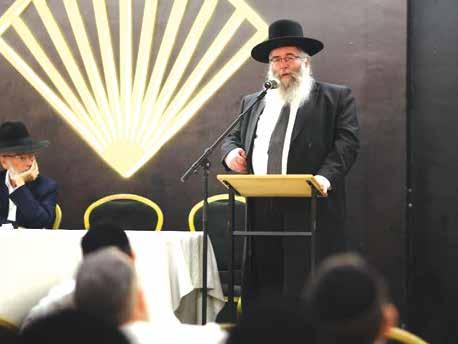

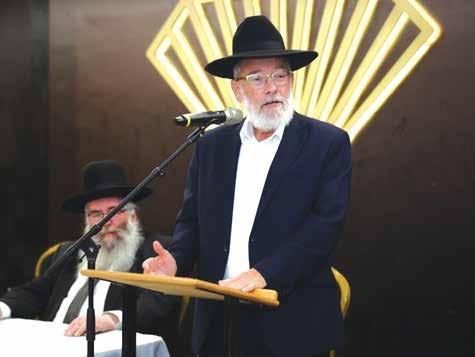
yachad.” Rabbi Pilz emphasized, “When individuals with shared values and common spiritual aspirations come together, it creates not just a community, but a strong bond of mutual support… This project is not just about finding affordable housing; it’s about continuing the shared values and unity that have shaped us.”
The Goal: 150 New Families By Rosh Hashanah
Over one hundred avrechim have al-
Rabbi Pilz also pointed out that the support for this initiative is a reflection of genuine concern for the continuity of Torah life. He acknowledged the investors and supporters, saying, “Their commitment is about ensuring the community’s spiritual and material well-being.”
ready bought homes in Kiryat Beit Halevi in Netivot, drawn by its unique blend of affordability, quality, and a supportive environment for Torah learning and living. With the goal of reaching 150 avrechim by Rosh Hashanah, and 200 by Chanukah, and bolstered by strong haskamos from many gedolim, the community’s continued development falls in line with words shared by Rabbi Pilz about the col-
We are thrilled to welcome Rabbi Dr. Hal Levy as the new principal/menahel of Yeshiva Har Torah. Rabbi Levy’s arrival comes at a time of exciting growth, as he looks to build on the school’s strong infrastructure with fresh energy and a dynamic vision for the future. His innovative approach aligns perfectly with our mission-driven institution, dedicated to excellence in both Jewish and general studies.
Rabbi Levy’s selection follows an extensive national search, conducted in partnership with Prizmah, the Center for Jewish Day Schools. The unanimous recommendation of the Search Committee, comprised of key lay leaders and in consultation with our administrative team, speaks to Rabbi Levy’s outstanding qualifications and his potential to help YHT become an even better school.
With over 15 years of experience in educational leadership, Rabbi Levy brings a wealth of knowledge and insight from his time at both elementary and high school yeshivot/day schools. His background includes serving as General Studies Principal at Hadar High School for Girls in Boca Raton, FL, where he
played a pivotal role in curriculum development, strategic planning, and faculty training. Prior to that, he held key positions at Rae Kushner Yeshiva High School in Livingston, N.J., and taught at Manhattan Day School and Yeshiva of Central Queens.
Rabbi Levy’s deep commitment to Torah U’Madda, paired with his warmth and engaging personality, is sure to inspire our students, teachers, and broader school community. He will help oversee Yeshiva Har Torah’s educational program, which proudly serves 820 students and employs over 140 dedicated staff members, all housed in two state-of-theart facilities in the heart of Little Neck, NY.
Our newest building, purpose-built for our Pre-K through 2nd grade students, was completed in a record-breaking 11 months and opened for service last summer as an early learning center. This 42,000-square-foot, cutting-edge building sits on a 2-acre campus, providing a nurturing and engaging environment for our youngest learners. Our original 75,000-square-foot building, which used to house all grades, now provides optimal space for our 3rd through 8th graders,
allowing us to accommodate the school’s continued growth while enhancing the learning experience for all.
YHT is conveniently located near thriving Jewish communities including West Hempstead, Franklin Square, Great Neck, Queens, Roslyn, the Five Towns, and beyond. Parents often make the deliberate choice to enroll their children at YHT, because they recognize the exceptional value we provide. Every aspect of our school is filled with intentionality, from the faculty we hire and the families we accept, to the curriculum we select and the buildings we design.
Rabbi Levy is particularly excited to collaborate with YHT’s exceptional educational leadership and faculty to create an even stronger foundation for the future. He will be working closely with Rabbi Gary Menchel, our longtime Head of School, and the rest of the leadership team, ensuring a smooth and collaborative transition as we continue to build on the great work that has been done at YHT.
Rabbi Levy and his family will be relocating to West Hempstead, further strengthening their connection to the local community. Three of his children are
lective effort required to build a thriving Torah community in Netivot: “May Hashem help us succeed in our endeavors, and may we merit to see this community grow in strength and in the values that brought us together.”

already proud students at Yeshiva Har Torah: Amichai, who is in Pre-K in our new Universal Pre-K (UPK) partnership with the West Hempstead Union Free School District, Noam, in 1st grade, and Shalom, in 5th grade. Rabbi Levy shared, “I am thrilled to see my children thriving at YHT, and I can’t wait to join them and contribute to the community.”
As we embark on this next chapter of Yeshiva Har Torah’s growth, we are confident that Rabbi Levy, together with Rabbi Menchel and our outstanding leadership team, will continue to lead our school to even greater heights. We can’t wait for you to meet him!
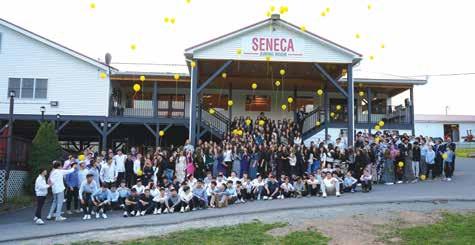
Just minutes after arriving at Camp Seneca Lake for their school-wide Shabbaton, HAFTR High School students got straight to inflating balloons: one hundred yellow balloons tied to 100 yellow strings – not for a party, but for a more emotional purpose. Students from different grades wrote messages to the hostages in Gaza and in honor/
in memory of the hostages. During our school-wide pre-Shabbat picture, students released the balloons to the sky with messages reading, “Bring Them Home” and “Am Yisrael Chai.” Watching the balloons rising into the sky was a moving moment for students and faculty. May all the hostages be rescued safely soon.
It was Week 2 of the JSL 2024 Season brought to you by FM Home Loans this past Sunday, marking the exciting start of the basketball divisions’ regular season! This week’s sponsor was Maidenbaum, the leader in property tax reduction. We extend our gratitude to Maidenbaum for their outstanding contributions to the community and their support of the JSL and the JSL Maidenbaum Scholarship Fund. All the boys received Maidenbaum swag this week.
JSL Juniors
K/P Hockey: Eliyahu Samuel and Naftali Jacobs were shining stars, both earning hat tricks as Bright Futures lit up the scoreboard in their 8-3 win over Gerber Bedding. Meanwhile, Smash House truly smashed it, with Gavriel Klein and Eitan Koegel each netting two goals in a solid victory. Yoel Nagelberg had 3 brilliant stops as goalie and Yaakov Rosenberg scored two goals for SR Whee.
K/P Soccer: Shua Berkovsky was picture-perfect, scoring 5 goals to lead Better Image Contracting to the win. Ethan Koschitzki showcased tremendous hustle for Future Care Consultants and Aryeh Steigman made some incredible passes for Maidenbaum.
Ezra Academy’s Beit Medrash buzzed with energy and excitement last Tuesday, September 10, as students flocked to the first ever Club Fair, a new event arranged to highlight the diverse range of extracurricular opportunities available at the school. The fair, which took place during the school’s lunch period (also doubling as the school’s club hour), provided a vibrant showcase of the many teams, clubs, and societies that enrich student life at Ezra Academy.
From the moment the event opened, the atmosphere was electric. Students eagerly explored an impressive array of opportunities representing various aspects of school life, from academic societies and cultural clubs to athletic teams and artistic groups.
Athletics were one major draw, with sign-ups for the basketball team and newly established girls’ volleyball team attracting enthusiastic participants. “Everyone is looking forward to a competitive and fulfilling year of sports,” said
the school’s athletic director. “This is a perfect opportunity for new students to join a team with a strong tradition of perseverance.”
Another new club making their debut this year included the Robotics Team, reflecting Ezra Academy’s commitment to adapting to student interests and contemporary issues. “It’s exciting to see students taking the initiative to start new groups focused on emerging technologies,” noted STEM instructor Dr. Srijan Bera.
As the fair concluded, students left with a variety of flyers, sign-up sheets, and a sense of excitement about the opportunities that lie ahead. Freshman, being introduced to the available clubs for the first time, seemed thoroughly excited to get involved.
Ezra Academy’s first ever Club Fair was a testament to the school’s dedication to providing a well-rounded educational experience. With the enthusiasm and variety on display, it’s clear that this year’s event was a resounding success.
Football: In a close matchup, Rides to Fly soared past Beautox_al 6-5, with Ariel Stefansky putting on a high-flying performance by scoring two touchdowns. Tikva Fire burned through the opposition, narrowly beating Newman Dental 4-3.
Hockey
1st: Ari Blobstein kept it cool under pressure, scoring a fantastic goal to keep things even in Simcha Day Camp’s 4-4 tie with Wolf Phone Repair. John’s Automotive revved their engines in a 5-5 tie with Town Appliance as Moshe Silberberg gave the fans a call for excitement, tying the game with just 26 seconds left.
2nd/3rd: Ezra Levine was an unstoppable force, netting 3 goals to lead Built By Nate to a 6-1 demolition of Maidenbaum. Newman Dental cleaned up against PIP Printing with a 7-5 victory, thanks to Yumi Erlichmen’s hat trick. The Gallery played great in their 6-5 win over S.I.N.G Entertainment, with David Teitelbaum threading a goal through the chaos.
4th/5th: Town Appliance was on full power, beating Target Exterminating 5-3, as Shmuel Sitzer ran a clinic with 3 goals, including a beautiful wrist shot from deep. Russo’s Pharmacy prescribed a dominant
10-4 victory over BlueBird Insurance, while Yisrael Thaler was rock-solid, playing defense and adding a couple of goals to help Smash House hammer down a 4-2 win over Marciano Pediatric Dentist.
6th/8th: Yosef Bryks played great as Wieder Orthodontics was all smiles in their 5-2 victory over Seasons. Yechiel Taitelbaum cleaned house for Extreme Vent Cleaning, bagging 5 goals in a 5-1 victory over 925 Sterling.
Basketball
3rd/4th: Yehuda Avigdor and Akiva Scharf were in perfect sync, passing their way to a smooth 33-13 win for Wieder Orthodontics over Russo’s Pharmacy, with Avigdor dishing out 6 assists. Posh Home + Bath cleaned up with a 22-8 win over Marciano Pediatric Dentistry, with Sam Robinson landing a no-look shot. John’s Automotive cruised to a 9-4 victory over Better Image Contracting, with Avi Schiowitz driving to the basket for 5 points and 4 steals, breaking ankles on the way.
5th-7th: Sruli Graber threw a fullcourt laser pass to help Tiffany Dry Cleaners breeze past Emporio 42-23. Avi Abramson scored 15 points to lead Sperling Productions in a 30-7 win over DJCP’s, which featured a chase-down

block and Ezra Fricker’s 10 steals. Binyamin Weissman Photography captured the action with a 30-16 victory over Smash House.
Game oft Week
In 1st grade Hockey, with the clock winding down and the game on the line, in the Seasons Express vs PlumbPro matchup, Yaakov Marx put the finishing touch on a nail-biting finish. He fired in a precise, last-second goal with just 8 seconds remaining, sending Seasons Express to a thrilling 6-5 win over PlumbPro. Marx’s performance was nothing short of spectacular, as he turned up the heat and delivered a game-winning play that was as refreshing as a Season’s Express icee.

The entire American Yeshiva world was plunged into mourning by the sudden passing of Rav Avrohom Ausband zt”l, the Rosh Yeshiva of the Riverdale Yeshiva who had been a marbitz Torah for over forty years.
The bachurim of Yeshiva Darchei Torah have the great zechus of learning under two of Rav Ausband’s prime disciples, Rav Yitzchok Hauer and Rav Shimon Dov Notis, who are both maggidei shiur at Darchei’s Mesivta Chaim Shlomo. Both Rav Hauer and Rav Notis delivered hespedim on their illustrious rebbi at the Yeshiva, during the shiva period.



On the night that Rav Ausband’s aron was brought to Kennedy Airport for its flight to Eretz Yisrael, two busloads of Yeshiva Darchei Torah bachurim were on hand to give kavod acharon to this great talmid chacham. Rav Shlomo Avigdor Altusky, Rosh Yeshiva, recited the Kel Molei and offered brief words of hesped.
The recordings of the hespedim at the Yeshiva are available at darchei.org/inspiration (for audio) and at darchei.org/ hesped (for video).
By Moshe Hill
Standing outside the Hebrew Academy of Nassau County (HANC), Town of Hempstead Supervisor Don Clavin announced the formation of an Antisemitism Task Force to confront the rising tide of hate. Clavin, along with rabbinical leaders and advocates from across the community, unveiled this initiative against a backdrop of alarming statistics and recent acts of antisemitic violence.
At a time when antisemitic incidents are shattering records nationwide, the creation of this task force couldn’t be more urgent—or more personal. The Town of Hempstead, home to the second largest Jewish population in the United States, has seen a disturbing rise in hateful acts. From antisemitic graffiti in East Meadow to targeted mail sent to a town official, it’s clear that this community is under threat. The message from town leaders, however, is equally clear: hate has no home here.
Supervisor Clavin was joined by political leadership. Councilwoman Laura Ryder, Councilwoman Melissa “Missy” Miller, Assemblyman Ari Brown, Receiver of Taxes Jeanine Driscoll, Councilman Thomas Muscarella, Councilman Chris Schneider, Senator Patricia Canzoneri-Fitzpatrick all stood in support of this crucial task force.
Supervisor Clavin and the assembled leaders emphasized that this task force is about more than responding to hate after it occurs. “The Town of Hempstead has a zero-tolerance policy against hate and intolerance of all kinds,” said Clavin. “We are quick to publicly denounce any and
all acts of intolerance within our township, however there is a growing trend of antisemitism ramping up through the nation. It is our responsibility to be proactive against this disturbing trend and the creation of an Antisemitism Task Force is the first step towards making this defense a reality.”
This is a proactive effort. By working closely with schools, law enforcement, and local organizations, the task force aims to stamp out antisemitism at its roots. Education, outreach, and security enhancement will form the pillars of this initiative, from Holocaust education programs to interfaith efforts to promote tolerance across all communities.
Rabbinical and other faith leaders showed their support for this as well.
Rabbi Axelrod (Young Israel of Woodmere), Rabbi Torczyner (Congregation Eitz Chayim of Dogwood Park), Avi Posnick (Exec Director of StandWithUs), Rabbi Hazan (Principal of HANC), Rabbi Zalman Wolowik (Chabad of the Five Towns), Reverend Eric Mallette (Greater Second Baptist Church, Freeport), and Rabbi Mordechai Kamenetzky (Yeshiva of South Shore) all recognized the reality that the Jewish community faces.
The statistics paint a stark picture. The Anti-Defamation League reports a 140% surge in antisemitic incidents in 2023 alone. Bomb threats and attacks on Jewish institutions have skyrocketed. This isn’t just a problem in faraway places—it’s happening right here in Hempstead.
For many in the town, the recent uptick in hate crimes brings back painful memories, while also underscoring a growing fear about the future. The town’s

leadership is keenly aware of these anxieties. Clavin’s call for the task force was joined by representatives from the Combat Antisemitism Movement, the American Jewish Committee, and other prominent advocacy groups, who hailed this move as a critical step toward addressing the crisis.
In recent months, antisemitism has manifested in multiple insidious forms.
A planned mass shooting at a Jewish center in New York City, defaced synagogue signs, and antisemitic rants hurled at Jewish residents all send the same chilling message: intolerance is spreading. But with the new task force, Hempstead is sending its own message—one of zero tolerance for hate.
Beyond the immediate impact, the task force also reflects a broader shift in how local governments are tackling hate speech and violence. By adopting the International Holocaust Remembrance Alliance’s (IHRA) Working Definition of Antisemitism, the town has equipped itself with a powerful tool to better identify and combat this specific form of bigotry. The Town was also a regional pioneer in passing legislation against the Boycott, Divestment, and Sanctions (BDS) movement, further demonstrating its commitment to protecting the Jewish

community.
For Lisa Katz, Founder and President of Combat Antisemitism, Hempstead’s action sets a high bar for other municipalities. “By doing so, it set a powerful example for how local governments can make a tangible impact in safeguarding and nurturing Jewish life,” she said.
As the Jewish community prepares to observe the High Holidays, the task force announcement offers some reassurance. In an era of heightened anxiety and growing hostility, knowing that local leaders stand firmly against antisemitism offers a crucial sense of safety. But more than that, it signals a community that is united not just against hate but for respect, tolerance, and understanding.
The formation of this task force may be one of many steps, but it’s an essential one. The fight against antisemitism requires vigilance, education, and collaboration. By launching this initiative, Hempstead isn’t just reacting to the problem—it’s taking a stand and leading the way for other communities to follow. As Clavin so aptly put it, “Hate and intolerance of all kinds” have no place in Hempstead, and this task force is here to ensure it stays that way.

Work At It is a community organization that works to ensure that every young person, even those who do not naturally fit into the conventional school system, has a comfortable place in our community.
On Tuesday, September 3, Rabbi Yaakov Mintz, educational advocate for Work At It, ran a workshop for the TAG faculty aimed at illustrating the experiences of out-of-the-box students in school and giving teachers the tools needed to make sure that these young people do not feel marginalized or disconnected to their school community.
In this interactive workshop, teachers role-played difficult classroom scenarios and worked to develop their understanding of the underlying issues causing certain behaviors and some possible ways to address them. Workshop material was research based and helped teachers gain a deep understanding of the experiences and needs of their students, particularly those on the margins. Among the topics

the workshops explored were the multiple types of intelligence individuals have and the effect that has on their ability to function in the classroom, as well as the effect of adverse childhood experiences (ACEs) on learning in school. One participant commented that she was “touched by the overall attitude to each neshama,” and another felt that it was “so touching and meaningful to me as a person.”

Work At It is a strength-based program that provides career guidance and support to young people (16-24) who have left the education system. As well, they run student workshops in high schools on strengths discovery and navigating the secular work environment as a frum person. The recently added professional development program is helping teachers in schools understand the population of our children who do not thrive in school and give educators the tools to increase their ability to connect with these students to help them remain a part of the community. We were fortunate that As-
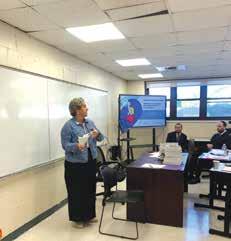
semblywoman Stacey Pheffer Amato (Assembly District 23) attended the workshop and shared her own experiences in the educational system. Finding creative approaches for out-of-the-box students in school is a goal the Assemblywoman praised, and she expressed support for the entire TAG community. Thank you to Cal Nathan and Community Chest-South Shore for being a sponsor of the program. We all know someone in our community who is not succeeding in the traditional school setting. To get involved, please reach out to rivka@workatit.org.

Junior High School students gathered on Wednesday to commemorate September 11, where they heard personal stories from Rabbi Landsman and Rabbi Knapp about their experience in New York. Rabbi Knapp then led the students in the recital of Tehilim.
Mr. Miles Ehrenkranz described his perspective of working in the Capitol that day. He powerfully shared that he writes each year to the family members of those
on Flight 93, to express his gratitude to their loved ones who saved his life on that day.
Students watched a poignant video remembering the life of Welles Crowther, a hero who saved numerous people inside the South Tower. Mr. Jacob Grossman concluded the ceremony with a push to get involved in the student government and urged students to make a positive impact on those around them.



1. Which U.S. president survived being shot during a speech and continued to speak for 90 minutes with a bullet in his chest?
a. William Howard Taft
b. Theodore Roosevelt
c. Herbert Hoover
d. Franklin D. Roosevelt
2. When President Ronald Reagan was shot in 1981, he was rushed to George Washington University Hospital for emergency life saving surgery. What did he say to the doctors as they were about to operate on him?
a. “Tell my wife that I love her.”
b. “You are American heroes.”
c. “I hope you are all Republicans.”
d. “I forgive the shooter.”
3. How long did it take to capture John Wilkes Booth after he killed Pres. Lincoln at the Ford Theatre?
a. 4 hours
b. 12 hours
c. 2 days
d. 12 days
4. How many U.S. presidents were killed by an assassin?
5. Why didn’t Lee Harvey Oswald ever stand trial for assassinating JFK?

a. Because he killed himself right after committing the crime.
b. He fled to Cuba.
c. He was shot two days later.
d. He pled guilty.
Answers

1. B-In 1912, shortly after beginning a campaign speech, Teddy Roosevelt, 53 at the time, was shot in the chest. He was saved by the manuscript of his speech which was in his jacket pocket. However, the bullet did penetrate his chest. Before proceeding with his speech, Roosevelt told the audience, “I don’t know whether you fully understand that I have just been shot… The bullet is in me now, so I cannot make a very long speech, but I will try my best.” With a bloodstained shirt, he declared, “It takes more than that to kill a bull moose.” He ended up
speaking for 90 minutes.
2. C-The doctors replied, “Sir, today, we are all Republicans.”
3. D-Booth escaped the Ford Theater alive with a broken leg. It is believed that he broke his legs when he jumped from the presidential box onto the stage. But another theory is that he broke his legs while riding his horse away from the scene. He went to a hotel in Maryland where he had a doctor reset his leg. He then fled to a forest in Virginia, where he was apprehended and shot dead by military forces.
4. D-Abraham Lincoln (1865), James A. Garfield (1881), William McKinley (1901), and John F. Kennedy (1963)
5. C-Oswold was shot by Jack Ruby as he was being escorted from the police station. The killing was captured on live TV, becoming the first ever murder seen on live TV.
Wisdom key
4-5 correct: You are a history buff… for the darker side of U.S. history.
2-3 correct: You are a moderate. We need more of you!
0-1 correct: You must work for the Secret Service. (Figure out how to get the gun back in the holster yet?)
“They’re eating the dogs; they’re eating the cats; they’re eating the pets of the people that live there” may be the funniest thing ever said in a presidential debate, but there are other memorable lines as well. Can you connect the line with the candidate who said it?
1. “I will not make age an issue of this campaign. I am not going to exploit, for political purposes, my opponent’s youth and inexperience.”
2. “I served with Jack Kennedy. I knew Jack Kennedy. Jack Kennedy was a friend of mine. Senator, you’re no Jack Kennedy.”

Lloyd Bentsen to Dan Quayle (1988)

3. “I went to a number of women’s groups and said: ‘Can you help us find folks?’ And they brought us whole binders full of women.”
4. “Read my lips: no new taxes.”
5. “Such a nasty woman.”
6. “I know the human being and fish can coexist peacefully.”
7. “The, uh — excuse me, with the COVID, um, dealing with, everything we had to do with, uh ... if ... Look ... we finally beat Medicare.”
8. “I just don’t see how you can expect to govern this country if you don’t even know how to pronounce ‘subliminal.’”
9. “I think [he] is getting confused. He’s forgetting the difference between his answers and my answers.”
10. “The third agency of government I would do away with – the education, the uh, the commerce and let’s see. I can’t [think of] the third one…I can’t… sorry. Oops.”
What is so fragile that saying its name breaks it?
B. Rick Perry in Republican primary debate (2011)
C. Al Gore to George W. Bush (2000)
D. Joe Biden to Donald Trump (2024)
E. Donald Trump to Hillary Clinton (2016)
F. George W. Bush (2000)
G. Ronald Reagan to Walter Mondale (1980)
H. John F. Kennedy to Richard Nixon (1960)
I. Mitt Romney to Barack Obama (2012)
J. George H.W. Bush (1988)
Answers: 1-G; 2-A; 3-I; 4-J; 5-E; 6-F; 7-D; 8-C; 9-H; 10-B
Answer: Silence


By Rabbi Berel Wein
In this week’s parsha, all of Jewish history is reflected in the two relatively short scenarios that the Torah describes for us. The opening section describes the promise that the Jewish people will come into the Land of Israel, settle there and develop the country, build the Beis Hamikdash and express their gratitude to G-d for the blessings that He has bestowed upon them. They will harvest bountiful crops and commemorate these achievements by bringing the first fruits of their labor as a thanksgiving offering to the Temple and the kohanim of the time.
They will then recite a short statement of Jewish history, a synopsis of the events that have occurred to them from the time of the patriarchs until their own time. The Torah promises blessings and serenity to the people of Israel. The Torah does not minimize the toil and travail that led to the moment of these offerings in the Beis Hamikdash. However, it does convey a sense of satisfaction and achievement, of gratitude and appreciation, for the accomplishments of the Jewish people, individually and nationally, regarding the Land of Israel and its bounty.


It is a spirit of wondrous gratitude that marks the accomplishments of the individual farmer and of the people generally in settling and developing the Land of Israel. There is little room for hubris and self-aggrandizement in the set text of this offering in the Beis Hamikdash. Rather, the text highlights the relationship between G-d, the Land and the people of Israel. That is the first scenario that is outlined for us in this week’s parsha.
perbole. This period of trouble and exile lasted far longer than the initial scenario of the offering of the first fruit in the Beis Hamikdash. And, unfortunately, the residue of this second scenario is still with us and within us as we live in a very anti-Jewish world society.
Yet we are to be heartened by the concluding words of this section of the Torah that promises us that it will be the first scenario of this week’s parsha that
It is a spirit of wondrous gratitude that marks the accomplishments of the individual farmer and of the people generally in settling and developing the Land of Israel.
The second scenario in the parsha is a much more somber and even frightening one. It describes the events, travail and persecution that will visit the Jewish people over the long millennia of its exile from its land. In vivid detail, the Torah describes the horrors, defeats and destruction that the Exile will visit upon the Jewish people. In our generation, this portion of the Torah reading can actually be seen on film and in museums.
We are witness to the fact that not one word of the Torah’s description of dark future events was an exaggeration or hy-
will eventually prevail. Even though so much of the negative is still present in our current state of affairs, we should be grateful for our restoration to sovereignty and dominion in our own homeland and for the bounty of the land that we currently enjoy. All of this is a symbol of the beginning of the resurrection of the first scenario and the diminishing of the effects of the second scenario.
May we all be wise enough to realize this and adjust our attitudes and actions accordingly.
Shabbat shalom.


By Rav Moshe Weinberger
Adapted for publication by
Binyomin Wolf

The parsha is all about beginnings. It starts (Devarim 26:1-3, 5-6), “And it will be when you come to the land that Hashem your G-d gives you as an inheritance and you take possession of it and dwell in it, you shall take from the first of the fruits of the ground... You shall come to the kohein... and you shall say... An Aramean [attempted to] destroy my father, he went down to Egypt and dwelled there, few in number... And the Egyptians treated us cruelly and afflicted us...” Why, when we bring first fruits, bikkurim, must we rehash all of these ancient bad memories? Those first making this recitation after our conquest of the land would have just endured the suffering of fourteen years of the deprivation and trauma of war. After all of their recent pain and sacrifice, what is the point of reminding of them of our people’s much older suffering?
A second question: Rashi (on ibid.
2), quoting the Mishnah (Bikkurim 3:1), explains the process for separating bikkurim . “A man descends into his field and sees a fig that has ripened. He wraps a reed around it as a sign and says ‘Behold, this is bikkurim .’” Why do Chazal and Rashi focus on the fig as their paradigmatic example of bikkurim? There are six other species with which Eretz Yisroel is praised. According to most opinions, the fig was the fruit of the tree of knowledge of good and evil eaten by Adam and Chava! Why would they choose that fruit specifically? Why this repeated focus on bad memories from the past at the time of the joyous mitzvah of bringing our first fruits to the Beis HaMikdash?
Perhaps there is one simple message in all of this. No matter how many difficulties we have endured, no matter how bad the past was, no matter whether we have a reminder of the first sin sitting in our own field, Hashem is telling us
that we still have bikkurim – first fruits. We can make today the first day of an entirely new existence. And by “entirely new existence,” He means that today will not simply be a continuation from yesterday but with certain improvements. It will be an entirely new existence.
Chazal say that “In the beginning” –i.e., the creation of the world itself, was in the merit of the mitzvah of bikkurim (Bereishis Rabah 1:4) and in the merit of the Jewish people (Rashi on Bereishis 1:1). What is the nature of this connection between the Jewish people, first fruits, and the creation of the world, all of which are associated with the word “beginning”? Perhaps Hashem is trying to show us that the Jewish nation in general, and every single Jew in particular, have a wondrous ability to move beyond all of the mistakes, sins, pain, and suffering of the past and start again from the beginning.
The 25 th day of Elul is the anniversary of the creation of the world. Rosh Hashana is “yom haras olam,” the anniversary of the creation of man. This is the time of new creation. It is no coincidence that Rosh Hashana is also called “The Day of Remembrance.” We want to call to mind the difficulty and suffering of the past year in order to remind ourselves that these very things will be turned around in the coming year. Hashem wants us to dip an apple in honey and say with simple faith, love, and optimism, “May it be Your will that this be a good, sweet year!” He wants us to know the exact nature of the pain and troubles which are being pushed into the past with the beginning of the brand new year. It is the same with bikkurim . That is why the one who brings them recalls the first sin that began all of our troubles, the suffering of Yaakov Avinu at the hands of Lavan, and our slavery
and oppression in Egypt, as well as his own mistakes and suffering. The performance of the mitzvah, standing in the Beis HaMikdash, and enjoying the blessings of Eretz Yisroel show the one bringing bikkurim that Hashem has given him the power to recreate himself. And learning this parsha reminds each of us that we all have the power to look at whatever mistakes we made before and say, “Behold, this is bikkurim!” and rejoice before Hashem with the knowledge that we are living in a whole new world unencumbered by the past.
We know we have this power because the seforim hakedoshim (Arizal Ateres Rosh and others) teach that every new year is a brand new reality which never existed before – with no connection to the past. Elul and Rosh Hashanah are the bridge, the pathway, to this new existence. The Maharal (Gevuros Hashem 51) says that the word for year, shana, is from the same root as the word for change, shinui , because every new year offers the opportunity for a complete change from what existed in the past. And Rav Moshe Chaim Luzzatto, zt”l , the Ramchal, says (Derech Hashem 4:8), “On this day [Rosh Hashana], He
renews the entirety of reality with the changing of the month, i.e., the new year.” Our whole effort as we cry out, “The King!” on Rosh Hashana is to ask Hashem to create this new beginning again for us in the coming year. This, along with the mitzvah of bikkurim, is the source of our ability to start again, to renew ourselves.
of strength he could muster, the rosh yeshiva told the bride and groom, and everyone else present, the following: There is a custom to give the bride and groom a gift at their wedding. And it is known that Hashem observes the Torah just as we do on earth. So what is Hashem’s gift to the bride and groom? If it comes from the infinite G-d, the
Every new year offers the opportunity for a complete change from what existed in the past.
The last public address ever given by Rav Gedaliah Schorr, zt”l , the rosh yeshiva of Torah Vo’da’ath, was at the sheva brachos of a close student several days before the he passed on into the next world. Because Rav Schorr was very ill, his family begged him not to attend, but he insisted. They brought him in a wheelchair, and, with every bit

gift must be the most perfect gift in the world. And what is this most perfect gift? What is the most valuable thing a bride and groom and receive? This gift is forgiveness. The husband’s ability to forgive his wife and a wife’s ability to forgive her husband. No other commodity is more precious in a marriage than forgiveness.
Forgiveness comes from one’s ability to tap into the power of Rosh Hashana, the power of bikkurim. It means recognizing that one can put the mistakes and pain of the past, whether self-inflicted or endured because of another person, and start again from scratch.
May Hashem grant us the ability to connect to the power Hashem has given us to renew ourselves. May we merit to remember that nothing that came before can drag us down or hold us back because they existed only in a previous world. In the world Hashem creates this coming year, those things never happened. May we merit to journey together into this new world and in this new year to Yerushalayim with Moshiach, where we can physically bring bikkurim to the rebuilt Beis HaMikdash, may we see it soon in our days!
Rav Moshe Weinberger, shlita, is the founding Morah d’Asrah of Congregation Aish Kodesh in Woodmere, NY, and serves as leader of the new mechina Emek HaMelech.

The Waze app has a crucial safety feature: it prohibits drivers from typing instructions while the vehicle is in motion, allowing only voice commands. However, users can falsely indicate to the app that they are only passengers. Is it permissible to lie to the app and claim to be a passenger when the person is actually the driver? After all, the Torah says, “M’dvar sheker tirchak,” one should stay far away from falsehood. (Shemos 23:7) The theoretical question assumes there is no safety issue in lying to the app.
Perhaps an answer can be found with the help of the Rashbam on a recent daf (Bava Basra 82a). The Gemara discusses a situation in which one is unsure if he is obligated to bring Bikkurim, the first fruits. The uncertainty exists in a situation where one bought fruit trees from his neighbor. The crux of the issue is whether the buyer owns the land under his trees. If he does, then he is obligated to bring bikkurim. If he does not, then he is exempt. The Gemara suggests a simple solution. He should just bring Bikkurim without reciting the accompanying declaration: “Wherefore I now bring the first fruits of the soil which You Hashem have given me.” (Devarim 26:10). The implication of
By Rabbi Avrohom Sebrow

the declaration would be that he owns the soil, which may not be true. Therefore, he omits the recitation but still brings the first fruit. The Gemara then questions, why can’t he recite the declaration? After all, it is a pasuk in the Torah. Either he is obligated to say it, or if not, he is simply reciting Torah verses!
The Gemara answers that he can’t because it appears he is saying a falsehood! On the possibility that he does not own the land under the trees, he is lying when he says he does. The Rashbam says this violates the pasuk in Tehillim, “Who speaks lies, will not be established before my eyes” (101:7) Why didn’t the Rashbam cite the verse in the Torah, “M’dvar sheker tirchak”?
Rav Chaim Kanievsky, zt”l, suggested that the Rashbam holds like the Sefer Yerei’im. The Yerei’im says that the prohibition of “m’dvar sheker tirchak ” only applies when it is a lie that can lead to harming or causing damage to one’s fellow. However, if there is no damage that can result from the lie, then it is only a virtue, not a prohibition. In our situation of Bikkurim, no one is harmed if he falsely says to Hashem that he owns land when he really does not. Therefore, the Rashbam quoted a different pasuk. There
is a distinct and separate prohibition of lying to Hashem.
According to the Yerei’im, one can lie to his computer if there are no safety issues involved. However, there is another dimension to this issue.
The Gemara (Yevamos 63a) recounts an incident involving Rav and his wife. Rav was annoyed because whenever he asked his wife to make lentils, she made peas, and when he asked for peas, she made lentils. Their son, Chiya, came up with a clever solution. He would reverse his father’s request when relaying it to his mother. For example, if Rav asked for lentils, Chiya would tell his mother that his father wanted peas. This way, his mother would make lentils, which is exactly what his father wanted. When Rav noticed an improvement in his relationship with his wife, Chiya revealed the truth to him. Rav admonished his son, warning that this behavior was wrong, and quoted a verse from Yirmiyahu (9:5), “They have taught their tongue to speak lies.”
The Maharsha questions why Rav told his son not to lie for the sake of marital harmony. Two pages later (65b), the Gemara specifically states that one is permitted to lie for marital harmony! The Gemara goes even further and states that
Hashem “lied” for the sake of marital harmony between Avrohom and Sara! They were tzaddikim and had been married for years. They surely had a great marriage. Yet, even for the sake of a little more peace, one is permitted to lie. Chiya was lying to make peace between his father and mother. This is the textbook example of when lying is permitted!
The Maharsha explains that Chiya was constantly lying. Every day, he had to falsely inform his mother about what his father wanted for supper. Constant lying can have a deeply negative effect on one’s soul. If Chiya had only lied once or twice, it would be acceptable, but the continuous falsehoods were the issue.
Perhaps constantly lying, even to a computer, can have a negative impact on one’s soul. By doing so, one is training his tongue to speak falsehood. While it may not fall under the specific category of m’dvar sheker tirchak , it should still be avoided if possible.
Rabbi Avrohom Sebrow is a rebbe at Yeshiva Ateres Shimon in Far Rockaway. In addition, Rabbi Sebrow leads a daf yomi chaburah at Eitz Chayim of Dogwood Park in West Hempstead, NY. He can be contacted at ASebrow@gmail.com.
By Rabbi Yair Hoffman
Rav Chaim Kanievsky, zt”l, was once asked an interesting question by a woman who was in need of surgery (Derech Sicha p, 174): She inquired of the Rav: “May I delay my surgery so that it can be done on my birthday?”
Where was this question coming from? Some people are of the opinion that noticing and or celebrating birthdays is not a particularly Jewish action. They note that the only mention we find of birthdays is in regard to the evil Pharoah. While there are opinions that certainly hold this, in this article, it will be suggested that not all opinions conform to this view and that noting someone’s birthday may very well be a Jewish thing to do.
We must first realize that there exists a mitzvah of v’ahavta l’reiacha kamocha, loving others as we do ourselves. It is always important to make other people realize that we care about them individually and that we genuinely value who they are. It should not be perfunctory but real. What better way to do this than to recognize a birthday?
Now, for some other sources. The Gemara in Moed Kotton 28a records that Rav Yosef made a party on the occasion of his 60th birthday. This was because he had avoided the punishment of kares. It is unclear, however, if this can serve as a paradigm for other birthday parties or just for a 60th birthday.
The Midrash Saichel Tov (Bereishis 40:20) brings us a more pertinent source. The Midrash notes that “most people celebrate that day that they were born and are joyous during this time and hold a party.” The Yerushalmi (Rosh HaShana 3:8) tells us that a person does not quickly fall on his “yom ginusiyah.” Rashi in Bereishis (4:20) explains that Pharoah’s birthday is called “yom ginusiyah.” This Yerushalmi indicates that a birthday is a special day, not just for recognition, but it seems to be an auspicious time to avoid harm. Rav Tzadok HaKohain (R’sisei Laila Divrei Chalomos-20) writes this explicitly. The Ben Ish Chai states that some have the custom to make the birthday a kind of “yom tov” and a siman
tov. He then adds, “And so we conduct ourselves in our home.”
Yes, the Ben Ish Chai had birthday parties.
Nor was he the only one. The Ksav Sofer writes in his responsum (Yore Deah Vol. II #148) that he held a 50th birthday party. He writes that he made a special siyum on the tractate Pesachim for the occasion. He states there that his father, the Chasam Sopher, did the same thing – he made a siyum on Chumash with his students on the occasion of his birthday on the 7th of Tishrei – and he gave out coins so they can purchase lachmei chalav (an early prototype of the now ever popular cupcake). The Chasam Sopher’s own Rebbe, Rav Natan Adler, (see Igros Sofrim p. 83) held a birthday party for his mother on her 80th birthday and invited the whole town!
It says in the biography of the Chofetz Chaim that he held a birthday party on his 90th (or 80th) birthday on 11 Shevat 5688 and finished his manuscript entitled “Beis Yisroel” for the occasion. In 1909, on the afternoon of Rosh Chodesh Shevat, on the occasion of Rav Shmuel Salant’s 93rd birthday, a party was held at his house right after chatzos with greetings, celebration and a cake. Virtually all of Yerushalayim was in attendance including the staff of the Bikur Cholim hospital, the Chevra Kadisha and the BaDatz of Yerushalayim. The event was reported in the February edition of Chavatzelet, p. 235.
In the HaMaayan (Tammuz 5731) the ethical will of Rav Yisroel Lipshitz (17821860), the author of the Tiferes Yisroel commentary on the Mishna and the rav of Danzig, is cited where he tells each member of his family that on the occasion of their birthdays all the siblings should send birthday greetings of mazal tov! He also writes that this custom should not be negated; only if there is absolute emergency should it be curtailed.
Another issue is the intent, the kavana, of the birthday party and of the greet-

ing. The intent should be one of hakaras hatov to Hashem – thanking Hashem for yet another year of existence. Let’s not forget that hakaras hatov is one of the fundamentals of the Torah way of life. Why was Adam HaRishon punished during his short sojourn in the Garden of Eden? Contrary to popular thought, it was not because he ate of the Eitz HaDaas, the forbidden fruit. Rather, it was his lack of hakaras hatov, being someone who expresses gratitude. How so? He responded to Hashem, “The woman that You gave me, forced me to eat of the fruit...” It was for the lack of appreciation for the gift that was Chava that caused the decline of mankind. Celebrating the birthday out of a sense of hakaras hatov would involve very lofty thoughts of hakaras hatov, a moral pre-requisite for all the mitzvos in the Torah.
The Munkatcher Rebbe
It is true, however, that the Munkatcher Rebbe (Divrei Torah 5:88) and others, too, expressed the view that birthdays are a foreign thing and have no precedent in Judaism. The Munkatcher Rebbe writes that the reason is because of the notion that “it is better for a person not to have been born in this world, but now that he is born he should do his duties and serve Hashem..” Therefore, he concludes, we should not be celebrating birthdays. If we can rely on the Derech Sicha who cites Rav Chaim Kanievsky on this issue as well, he was of the opinion that birthdays should not be celebrated either – against our citations from the Chasam Sofer, the Ksav Sofer, the Chofetz Chaim and Rav Shmuel Salant.
What, then, do we do with all the
above sources? There is a Tosfos HaRosh that qualifies this thought (Eiruvin 13b) of “better for a person not to have been born” that it refers only to people whose ways have not been determined that they are destined to perform and do good. So, for evil people, a birthday party would be wrong; for regular people who are more good than bad, it is the right and proper thing to do.
It seems to this author that there exists an argument between the Tosfos HaRosh and the Tosfos in regard to how to resolve the following apparent contradiction. The Gemara in Avodah Zarah states, “Let us give thanks to our forefathers for if they did not sin, we would never have arrived in this world!” Yet the Gemara in Eiruvin states, “Better for a person not to have been born.” These two Gemaras seem to contradict each other. Tosfos seems to resolve it by stating that the Gemara in Avodah Zarah refers only to the tzaddikim. Tosfos HaRosh seems to learn that the Gemara in Eiruvin refers only to those who have not chosen the path of good. The difference between them lies in the regular, average person.
It would seem that those authorities who advocated celebrating birthdays in general would hold like the Tosfos HaRosh, while those who were against it would hold like Tosfos in resolving the contradiction. This
This has been a challenging week. All was going relatively smoothly until we signed up for Ulpan followed by the arrival of the lift.
I do not read or listen to the news but it’s not enough to filter the hard stories going on daily in this beautiful country. Every soldier is a part of an immediate and greater Israeli family. Every single loss or injury resonates loudly.
Ulpan needs a whole reflection of its own; it will get one as soon as I can figure it out. I am not a fan. Why?
While I do understand the importance of language fluency, I can’t navigate the apps or follow the instructions in my gym classes as I am always three steps behind. Sitting hours on end in class is difficult and not easy for me.
Everyone tells me I won’t regret doing it.
We would have been okay if the lift drowned, but it didn’t. I actually have a friend who lost everything, and just recently my granddaughter Tova told me about one that was filled with mold.
We got lucky, the lift arrived, and so far, we can’t find a few things but maybe we accidentally threw them out.
No matter how well planned and even with everyone’s input, there is not enough information nor understanding

By Barbara Deutsch


of what it means to pack up your entire life (the older you are, the more stuff there is) and send it in neat boxes that may or may not accommodate the contents) and trust or hope (?) that it will arrive in Israel.
I found out recently that what country you are sending things from may determine the length of time it takes and, in some cases, whether it will arrive at all. Words of caution: all people who make aliyah need to do more research before you order, pack, and fill a lift.
My good friend and former colleague, Michael, and his family made aliyah right after Covid. His wisdom and practical suggestions guided us as we worked through the kinks of aliyah. Michael recommended that we use Sonigo, a shipping company he had used and liked, for our lift. I have learned that Michael is mostly right when it comes to practical suggestions; his positive attitude, counsel, and friendship has helped limit our fumbles.
Everything you want or need is available in Israel. It is not like the days of old when soft toilet paper was a luxury and only cheaply made clothes were for sale. Some things may be more expensive and poorly made – for some reason, aluminum baking tins and Wacky Mac
are hot items for lift packing – but it’s here to be gotten.
After the “crazy” of packing up a house (something that as it proceeded we became more free in giving and throwing away stuff), we were thrilled to be welcomed in Israel by an empty apartment that had room for everything until it didn’t. Our old house was an old turn-of-the-last-century colonial that we decorated with the bric-a-brac of a family growing up with three children. It was filled with curated clutter that no one wanted.
Eighty-five boxes may seem like a lot, but it’s a mere fraction of what most people send. It’s a range – some make aliyah with no lift and bring their stuff in duffels over time. Some do a full lift with furniture and appliances and the necessities of a growing family; and some, like us, do a partial lift with clothes, life’s artifacts, books, and art.
Our new apartment is located on a quaint, broken, and hard-to-find street in Yerushalayim; it is in a relatively new renovated building with open spaces and large doors and windows. It calls for a minimalist vibe which it enjoyed until the lift came.
Our cool and clear-thinking daughter Rachel accompanied by her aides
de camp, granddaughter Ariela, who cleared her busy makeup artist schedule; and surrogate granddaughter Noa, came to supervise the unpacking of the boxes that came in all shapes and sizes.
Daughters Tova, “it’s a Tova” wigs, and Penina, newly married, came to help. All of them have other demands on their time and did what they could to help us. We began with kitchen and household items. Despite our careful packing and downsizing efforts, there was still so much “stuff.” Admittedly, we did not have to bring the beautiful crystal decanter that my campers bought for me when I retired from my 14 mostly wonderful years spent running Machon in Morasha, or the gorgeous pitcher three beloved students, Karen, Shana and Rebecca, got me when I was their Social Studies teacher at the Yeshivah of Flatbush, or even the vase Carmen, Bob’s Brooklyn College colleague, made for us when we got married. We had held onto these things for so long – why wouldn’t we bring them with us to our new home?
I’m “modeh ” that the customized pack of gum from our twin grandson’s Yoav and Jakob’s magnificent bar mitzvah more than ten years ago was not a must; the swag bag with the weekend’s necessities was left intact with that in
it, plus it had a picture of their adorable faces. This keepsake was from a very special time and memory.
Rachel and her team were cutthroat in separating what I do and don’t need. I found myself glued to my spot as I sat overwhelmed with memories and melancholy for times past.
My wise friend Danielle of Peas Love and Carrots fame and my claim to Instagram sightings gave me a solid perspective when I complained to her about the plethora of boxes and the cognitive dissonance I had been feeling in the weeks leading up to the lift’s arrival. This event gave me so much agita over fitting the stuff into my pristine space that I truly could have not cared less if indeed it had incurred a watery death.
According to Danielle, in the weeks of waiting for the lift to arrive, we managed well with the things we had here; we made do or bought what we needed. No one needs 10 black skirts or two sets of anything not food-related in a kosher kitchen. No one needs the collections of saltshakers, washing cups or tzedakah boxes. But once here and unpacked, seeing the parts of our former life flooded me with memories and regrets about throwing anything out.
Rachel’s perspective: you don’t need it, so get rid of it.
After my family crew left – they were amazing – I snuck out and grabbed back the crystal decanter, the pitcher, and the vase. I threw out the gum.
Ariela, a perfectionist, took account of all that was still needed, determined that a trip to IKEA with Noa was a must, hired a driver, took our credit card and made an in-depth shopping trip of
organized home.
I can’t locate anything.
Rachel posted on a community chat that there were many clean boxes available for the taking. A young man wheeling an empty baby carriage came to inquire. His young family is leaving Yerushalayim – too expensive – for Bet El. As he broke down the boxes to fit the carriage, we talked. It turns out he is originally from Montreal and knows
Once here and unpacked, seeing the parts of our former life flooded me with memories and regrets about throwing anything out.
every organizing tool that’s on the market. She is an admirer of her Aunt Tamar who models this in her own home and has bad FOMO about not being in Israel to help.
Last night, we had a wedding, glorious in every way, and upon our late return, found an almost pristine and

our Canadian son-in-law Jonathan and his family.
This remarkable young man wrote a Gemara on the Montreal Habs, if you know, you know. He took many of the boxes and packing paper and offered to come back to clean up.
It’s Israel.
As the boxes start to empty and clear, we still have books and more books to unpack. I find myself in a better place. The books we will store; there are just so many bookcases you can build to fit a small apartment. The clothes we will give away; there is unfortunately plenty of need. It also does not all have to be done right now.
I still don’t know if you wear white after Labor Day in Israel or anywhere for that matter.
When you make aliyah, it’s so important to have family and friends who are like family. They help you unpack more than things. There are more important things to care about than “stuff.”
There is Ulpan on Sunday; what should I do?
Barbara Deutsch is the former associate principal at HANC, middle school principal at Kushner, and Dean of Students at Yeshiva of Flatbush. A not-retired educator, she is trying to figure out life in Israel through reflections on navigating the dream of aliyah as a wife, mother, grandmother, great-grandmother and friend.



The walk from the bus stop to the local supermarket takes no more than a minute. As I was crossing the road and walking up the steep, asphalted parking lot, I saw an old man lying on the ground, his shopping wagon’s contents scattered around him as if they were looking for a home. I raced to his side, and in an attempt to help him up, suddenly found myself at face level with the road. My phone was resting alongside a cherry tomato and yellow pepper. For a moment I couldn’t figure out why the road was so hot on my right cheek. Next, I was looking at a pair of sandals. They belonged to a young man who had run to our assistance. He helped the old man up, while I slowly scrambled to my feet.
He had places to get to, but before leaving us, he mentioned how happy he was to have helped two pensioners. This occurred the same day I received my senior citizen card in the mail. The retirement age is written into law. At 67, you are expected to leave the workforce. In many professions, this is unavoidable. In my profession, however, it’s not. Which beggars the question, why are we in a rush to retire?
I once questioned my doctor as to why he continued to work well into his 70s. He quickly disabused me of the notion that mandatory retirement was healthy.
“Who says it is?” he asked me. “It is good for a man to work. What difference does age have to do with it? If he has the capability, why should he stop?”
I pondered his attitude at the beginning of the current school year, a few months after I was expected to retire. Instead, I began the fortieth year of my professional career as a teacher. Whilst not working a full schedule, the three days a week I am in school are enjoyable, fulfilling, and, most importantly, they make me feel young.
Last week, I caught up with a few members from the English department in Horev, the yeshiva where we work. Have a look at the attached photo. If I thought it strange that I have decided to continue
By Rafi Sackville
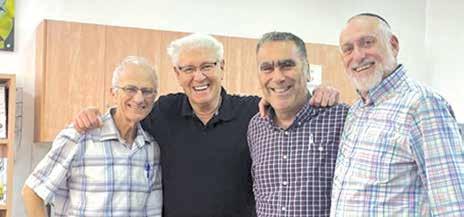
working, take Shmuel Gordon (on the left) and Yair Zin (to his left), who are respectively 73 and 81.
In an earlier conversation that day, I had shared with Shmuel my hesitation in coming back this year. His eyes lit up immediately. He, too, had had a similar experience. He described how those feelings evaporated as soon as he walked into his first class. He felt infused with the en-
head of our department, who taught alongside me at the same yeshiva when I was there in the early 1990s. He is the “baby” in the photo, clocking-in in his early sixties. He, too, is energized by his work.
Throughout my career I taught 10th to 12th grades exclusively. When I returned to Horev, the only classes available were 7th and 8th grades. I’ve been genuinely surprised just how happy I am
I raced to his side, and in an attempt to help him up, suddenly found myself at face level with the road.
ergy of his youth. Our experiences were identical. I walked out of school on the first day walking on cloud 9, or whatever number it is.
Yair’s response was similar. He continues to work two part-time jobs. His unbridled enthusiasm in the classroom manifests itself in his ebullient nature and genuinely huge smile. He put it to me very simply when he said, “I love the kids and teaching.”
To my right is Geoffrey Marcus, the
to be surrounded by 12-14-year-olds and my ability to infuse them with positive learning habits.
There has been a shift in the last few years for young people steering clear of teaching as a viable profession. The results have become clear with the country suffering a dearth of teachers. In many instances, those gaps have been filled with people who are not prepared to deal with large classes. I can understand them.
Doctors don’t have to see more than
one patient at a time; teachers do. The range of issues they have to cope with is staggering: noise, classroom control, preparation, grading, the teaching itself. It doesn’t take much for the unskilled to lose control of 30 students, not to mention having to deal with kids with learning difficulties or those who refuse to medicate when they should. Then there is life outside the classroom when social media is the avenue parents avail themselves to (in some instances) badger and even harass teachers. It’s a balancing act that comes with experience.
When I consider the 281 years that are the sum of the lives of Shmuel, Ya’ir, Geoffrey and myself (ad me’ah v’esrim for each of us) and further consider the more than 160 years of classroom experience between us, I am left with a sense of gratitude that we chose such a fulfilling profession and that, for all of us, we have continued well into our senior years to continue to do so.
Which is why receiving my senior citizens card and being helped to my feet by a man forty years younger than me didn’t faze me. When I was asked by the principal what my goals were, I pointed to Ya’ir, our almost 81-year-old colleague. “I want to have a shot being as resilient, happy, and long lasting in class as he is,” I replied. I’ve listened to friends wax eloquently about their plans after retirement. Their lists are variants of the same theme: leisure, sports, travel. I’ve not heard any of them discuss happiness in their current lives or its source. Sometimes, but not exclusively, we have experienced happiness in our workplaces and yet are willing to forego its benefits. In the case of my colleagues and I, we have been blessed to have discovered the source for many things good in life. For us, it’s the classroom. Why would we give it up in the hope of searching for something we’ve already found?
By Etti Siegel

Q:Dear Etti, I drop my seven-year-old daughter off at school each morning with a big pit in my stomach. She tells everyone way too much private information! I call it oversharing. My husband calls it having a big mouth. Any ideas?
-Red-faced
A:Dear Red-faced, It is not easy to walk around in public, wondering what your daughter has blurted out about your private life. Keep in mind, she is not doing it to embarrass you. A child who blurs boundaries might be struggling with executive functioning.
The Center on the Developing Child at Harvard University explains, “Executive function and self-regulation skills are the mental processes that enable us to plan, focus attention, remember instructions, and juggle multiple tasks successfully. Just as an air traffic control system at a busy airport safely manages the arrivals and departures of many aircraft on multiple runways, the brain needs this skill set to filter distractions, prioritize tasks, set and achieve goals, and control impulses.”
Children aren’t born with these skills fully developed, but they have the potential to learn them. Some kids might need a bit more help along the way.
When kids get the chance to build their executive function and self-regulation skills, everyone benefits. These skills are essential for learning and growing, helping kids make positive choices and manage their behavior in a healthy way as they mature.
Executive function and self-regulation involve three key brain functions: working memory (helps us remember and use information over short periods), mental flexibility (allows us to shift our attention and adapt to new rules or situations), and self-control (helps us set priorities and manage impulses). These are all interconnected, and they work best when they function together.
Here are some executive functioning skills your child might have a hard time with:
Impulse control – Kids might blurt out things without thinking about the consequences.
Self-regulation – They may say things impulsively or out of strong emotions.
Planning – They might struggle to think ahead and figure out how to say what they really mean.

Flexible thinking – Kids may find it tough to see things from different perspectives or understand how others think.
Working memory – They might have trouble keeping track of information and following along in conversations.
If your child has ADHD, oversharing can also be a sign of trouble with social skills. They might have difficulty reading social cues or recognizing when it’s not the best time or place to say something. Sometimes, they might not notice how their words affect others.
A child missing social cues might interpret simply sitting on the bus near another child as being best friends and then sharing everything with their perceived BFF.
Oversharing can also happen when a child has low self-esteem. They overshare to get attention, hoping it will be the magic formula to get a friend.
When kids overshare, they often don’t think about how their words might affect others. (Remember the executive functioning components?) Sometimes, they might even do it on purpose to get back at someone, without realizing what might happen as a result. But there are ways you can help your child understand the impact of oversharing.
Model proper sharing: Show your child how to handle sharing by being mindful of what you share with others and with them. Kids learn a lot by watching their parents! Mention how you visited Bubby, but you didn’t tell her about the incident that happened with the park and stitches because you knew it would upset her. Schmooze it out. Have your daughter share that she understands by talking it out and discussing Bubby’s perspective.
Model empathy: Help your child understand how others might feel. Talk about how you’d feel if someone shared something private about you. Ask your child to think about others’ feelings too. Read stories to her (on Shabbos or before bed) that expand her understanding.
Communicate: Have a conversation about what information is safe to share and what isn’t. Make sure she understands that family matters, health issues, and other people’s personal information should stay private. However, let her know it’s important to tell a trusted adult about any abuse or serious issues (or anything she feels is uncomfortable or creepy).
Talk about cause and effect: Explain to your child what can happen if they overshare. They might lose friends or make others feel embarrassed. Remind them that online posts can stick around forever.
If your child shares something personal or sensitive that upsets you, try to stay calm when discussing it. Kids (especially children with ADHD who are often on the receiving end of criticism) often feel very sorry when they realize they’ve hurt someone, and staying calm helps them understand your message better and learn to think more carefully about what they share. Try not to discuss it when it happens, but later, when a quieter time comes up.
Make sure the teacher knows and help the teacher know how you want it handled. (Ignoring is a great option; otherwise, a gentle reminder, not a harsh rebuke.)
Remember, the teacher is busy with many students and is probably not listening to or believing everything a seven-year-old says. Let her know to please run any concerning stories your way, and though she knows it, make yourself feel better by reminding her that sevenyear-olds can mishear information and twist it without realizing it, like a game of telephone.
A wise teacher (it was so long ago, and I meet so many great educators, I don’t remember which wise teacher at this point!) used to tell parents, “I won’t believe what they say about you if you agree not to believe what they say about me.”
Wishing you a kesiva v’chasima tova and loads of nachas,
- Etti


By Hershel Lieber


Our travels within the United States were, for the most part, vacation oriented. Our penchant to see all the fifty states, the great cities, the majestic mountains, the mighty rivers and the national parks from the Atlantic to the Pacific was a yearning that was inborn in me and that over the course of the past fifty-six years Pesi acquired.
In summer 1998, we planned a vacation trip to the Mid-Central States of Ohio, Indiana, Illinois, and Michigan. We timed it so that we could attend the wedding of our friends’ children in Chicago. We decided to take our car and drive directly without any stops other than for gas and restrooms. I had never driven such a distance before, but eleven hours after leaving Brooklyn on Wednesday, August 12, I pulled into Cincinnati. The
only person I slightly knew was the sister of my dear friend, Rabbi Yakov Pollak of the Shomrei Emunah Shul in Boro Park. Millie Brichto was married to one of the leading professors at the Hebrew Union College (Reform), and over the years, we interacted concerning common objectives in Poland. Their daughter Johanna was married to Bernard Rabenstein, a staff member at the College’s prestigious library. Though he was employed by HUC, the family was strictly Orthodox in outlook and in practice.
After taking a tour of the famed 1933era Union Terminal, which is an icon of the Art deco style, we explored two of the adjacent museums. Then we drove over to the Rabensteins. Bernard took me to the HUC Library to show me some of the most precious items in their collection. It in-
cluded handwritten manuscripts as well as incunabula. We returned and joined the family and Pesi for dinner followed by Mincha at the community Kollel. We also visited Millie and crossed over a bridge to walk along the riverfront of Covington, Kentucky.
Thursday after davening at the Yekkishe “New Hope” Shul followed by breakfast at Bagel Max, we began our sightseeing agenda by touring the Goodwill Donation Center. This nonprofit charitable organization processes the distribution of used clothing and objects which are in perfect condition and fully functional. It is hard to explain how we actually enjoyed the experience and viewing the methods they employed to give a second life to discarded items. Then we headed straight to Indianapolis, Indi-



ana. We saw the State Capitol and took a tour of the Indianapolis Motor Speedway where the world famous Indy 500 car races take place annually.
Our next stop was a bit over three hours away – Chicago, Illinois. We checked into a motel in nearby Skokie and ate dinner at Bugsy’s, a popular kosher steakhouse with a gangster motif named after Bugsy Siegel, the infamous Jewish mobster. The food was delicious, but the theme which glorified crime and criminals was not in good taste.
Friday morning after davening, we drove to West Rogers Park, the Jewish neighborhood of Chicago. Rabbi Moshe Francis, the Rosh Kollel of the Chicago Community Kollel, got us an apartment
where we stayed over Shabbos. We drove to the downtown area and spent time at the Navy Pier which had an amusement park with rides which catered mostly to
a ride on the “L,” the elevated trains that hover over great sections of the city. Are they different than the elevated trains in Brooklyn? Not really, but how can one say
children and teens. We went up to the observation tower of the Sears Building and observed the entire panoramic view of the Windy City. A trip to Chicago would not be complete with going for

that they were in Chicago and miss this local attraction?!
Shabbos was beautiful! Friday night, I davened locally at Rabbi Weisblum, and we ate the seudah by Rabbi Moshe Fran-
cis and his family. The atmosphere was uplifting with divrei Torah and zemiros and delicious food. Shabbos morning, we went to Rabbi Yehoshua Heshel Eichenstein’s Shul and returned to the Francises for our day seudah. For Minchah, I went to Rabbi Twerski’s shul on Devon Avenue. Sunday, after davening at the Kollel, we took in another Chicago icon, the 90-minute riverboat tour on the Chicago River. We viewed the architectural creativity and grandeur that the city’s skyscrapers possess. From the vantage point of the riverboat, the buildings stand out individually with grace and poise. We then drove to Palatine and checked into a motel near the Hilton ballroom where we participated at the wedding celebration of

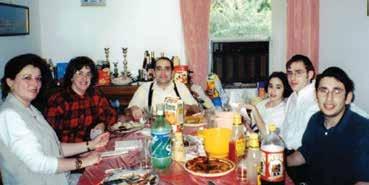

the son of our friends, Yakov and Chavi Finestone. We had a wonderful time at this wedding since many of our friends from Brooklyn also attended.
We spent the Monday morning, our last in this city, at the Chicago Institute of Art. The three hours that we dedicated to viewing their amazing collection was truly insufficient. We were especially captivated by the display of the 68 Miniature Rooms, which overwhelmed us. We even bought a coffee table book containing photos of all those rooms with their intricate details.
We left Chicago at 2 p.m. and headed

to South Bend, Indiana, where we stayed overnight. Tuesday, I davened at the Yeshiva Gedolah of South Bend and was given a personal tour of the buildings by Rabbi Yisroel Gissinger, the Rosh Yeshiva. We then went to tour the Copshaholm Mansion, the 38-room Romanesque Queen Ann house built in 1896. The building’s décor and all the furnishings are original and well deserve its landmark status. The town’s history museum, which is housed in the mansion, depicts the history of South Bend’s Polish immigrants. We then drove to Detroit, Michigan, ate at a local restaurant, and called it a day.
Wednesday, we headed to Dearborn, Michigan, to tour the open air museum named Greenfield Village. The village is a collection of fascinating buildings that go back in time to important turning points of American history. For example: the Wright Brothers bicycle shop, Thomas Edison’s Menlo Park Laboratory, Henry Ford’s first automobile assembly line, and the courthouse where Abraham Lincoln practiced law. A historical working farm, a steam engine locomotive and a Model T auto were just a few of the many exciting exhibits. We spent hours on end there and still felt we saw a fraction of what exists. That sunny summer day was framed by a blue sky with small floating clouds and was complemented with a slight cool breeze. The weather was a perfect accompaniment to our most pleasant visit. We were invited to dinner by Michoel Eisemann and his family. Michoel is a son of

my dear friend and long time Vaad partner in the Yeshiva of Kishinev, Rav Moshe Eisemann. We went to shul together and spent a lovely evening together.
Thursday, we drove to Cleveland, Ohio. We made a stop in Toledo, where we walked around the downtown district. We also stopped in Sandusky’s downtown section and walked along the shores of Lake Erie. Then we headed straight to Cleveland Heights where we were the guests of Rabbi Moshe Garfunkel, z”l and his wife Vivian. Pesi knows Vivian very well from her childhood since she and Pesi’s sister Debby were and are still very close friends. The evening was spent with the Garfunkels and their family shmoozing and reminiscing.

Friday, after breakfast, we drove to Wickliffe where the Telz Yeshiva is located. We toured the buildings and had an audience with the Rosh Yeshiva Rav Chaim Stein, zt”l. We then went downtown to shop for gifts for our children and returned promptly to get ready for Shabbos.
Rav Moshe, z”l, was the rabbi of the Zichron Chaim Shul where we davened over Shabbos. He blended the best of both the Chassidishe and Litvishe worlds and was beloved by his congregants. Being his guests made us feel special in his shul. His Shabbos tish was enhanced by his minhagim based on the Arizal. We spent many hours together, both during the Friday night and Shabbos day seudos, which were interspersed with divrei Torah, zemiros and great conversation. A fleishig melave malka followed Havdalah where we developed a deeper level of camaraderie, and it went on way past 1 a.m. Sunday was the most difficult day of our trip. I am not speaking about the almost eight-hour drive, which was relatively easy. I rather mean that the day was the end of many amazing and enjoyable experiences. True, our twelve-day journey came to a close, but those precious memories are still fresh and will always be treasured by us.
Hershel Lieber has been involved in kiruv activities for over 30 years. As a founding member of the Vaad L’Hatzolas Nidchei Yisroel he has traveled with his wife, Pesi, to the Soviet Union during the harsh years of the Communist regimes to advance Yiddishkeit. He has spearheaded a yeshiva in the city of Kishinev that had 12 successful years with many students making Torah their way of life. In Poland, he lectured in the summers at the Ronald S. Lauder Foundation camp for nearly 30 years. He still travels to Warsaw every year – since 1979 – to be the chazzan for Rosh Hashana and Yom Kippur for the Jews there. Together with Pesi, he organized and led trips to Europe on behalf of Gateways and Aish Hatorah for college students finding their paths to Jewish identity. His passion for travel has taken them to many interesting places and afforded them unique experiences. Their open home gave them opportunities to meet and develop relationships with a variety of people. Hershel’s column will appear in The Jewish Home on a bi-weekly basis.





By Eliyahu RosEnBERg
s people grow older, they often find it more difficult to change their lives; they become set in their ways, unable or unwilling to alter their lifestyles. But that isn’t and has never been the case with Estelle Levitas, a loving grandmother and an enthusiastic servant of Hashem. When Estelle was
ninety years old, she took it upon herself to become Shomer Shabbos for the first time in her life, and today, at age 93, she continues to push herself to grow closer to Hashem, while always wearing a smile on her face and living life to the fullest.
Estelle’s life story began in Baltimore, Maryland, where she was born and
it’s so dreadful why people have to hate. hate should not be in anybody’s dictionary; they should even take it out of the dictionary. it should only be love!
Every day has something good, even if it’s a doctor’s appointment. Tell them a joke, they laugh, they love it. Make everybody laugh!
a nything that is good comes from hashem. it’s so easy to believe. if you don’t believe in hashem, i’m so sad for you… Wake up, believe in g-d. he is the only one that can help you.
l ashon hara kills a person’s name… a nd now, i do my best. i don’t like to embarrass people, but i do my best to say, ‘ if you’re telling a story, don’t tell me the name.’ a nd it’s worked. it’s so, so easy; lashon hara is so easy to give up!
raised. The daughter of Jewish-Russian immigrants, Estelle grew up in a loving home with an Orthodox father, a traditional mother, four wonderful sisters, and a warm grandmother who could only speak Yiddish. She was a happy girl, mostly oblivious to the antisemitic massacres racking Europe at the time. And she was also not consciously aware of any antisemitism in her hometown –that is, until a group of kids beat her up in an alley and stole her books when she was just eight years old. When she came home later that day and her parents saw what had happened to her, they decided that it was time to move to another neighborhood.
“Both of my parents met in Baltimore, but they were both born in Russia. My father came from a very, very frum family. He was ultra-Orthodox and davened three times a day,” Mrs. Levitas recalled. “My mother was not Shomer Shabbat but kept a kosher house and wouldn’t let us eat in any restaurant because they weren’t kosher back then… But there was a time when I was young and I would eat anything; if you name it, I ate it! My house was always kosher, but my stomach wasn’t.”
As such, Estelle was mostly raised as a traditional Jew, and she continued to go through her life, eating at non-kosher restaurants until she had a grandson who was born with cancer. When she heard the tragic news of the diagnosis, Estelle made a promise to G-d. She said, “Hashem, if you make my grandson well, I will give up treif.” Today, that grandchild of hers is a healthy, 41-yearold man. Needless to say, she kept her
promise, adopted a kosher-only diet, and hasn’t looked back since.
After she adopted the laws of kashrus, Estelle Levitas’ further growth in Yiddishkeit was facilitated not by desperation, but by a strong desire to make Hashem proud of her and to show Him how grateful she is for the blessings He has given her. Thankful for her health and for feeling good at her age, Estelle, in recent years, has started reading Tehillim every day and took it upon herself to stop saying lashon hara.
“Lashon hara kills a person’s name, so I decided I’m not going to say lashon hara anymore,” she explained. “But before I knew it, I was listening to lashon hara and I was saying it, and I thought, ‘Nope, it’s not gonna work like this.’ So, I decided that every time I hear somebody saying lashon hara and every time I say lashon hara, I will put a dollar in tzedakah. It got expensive, so I gave up lashon hara.
“And now, I do my best. I don’t like to embarrass people, but I do my best to say, ‘If you’re telling a story, don’t tell me the name.’ And it’s worked. It’s so, so easy; lashon hara is so easy to give up!” she declared.
At ninety years old – or ninety years young, rather – Estelle Levitas decided to become Shomer Shabbos, inspired by frum neighbors who would bake challahs and desserts for her every Friday and who once gave her a negel vasser washing cup as a gift. As she explains, becoming Shomer Shabbos was also very easy for her. In fact, it was almost convenient. If the phone rings on Shabbos, she doesn’t have to run to answer it, she
points out; she can just relax and ignore the call!
* * *
While Estelle Levitas’ story is certainly interesting, the life lessons and wisdom she shares with the world are perhaps even more valuable.
Whenever Estelle enters her home, she kisses the mezuzah at her doorpost and says aloud, “Hashem, come in.” Whenever she leaves her house, she says, “Hashem, follow me, so I’ll be safe.” Estelle always feels secure because she knows and feels that Hashem is with her wherever she goes.
Estelle attributes her longevity, youthfulness, and health to the power of laughter and joy. But she knows that she could never have that incredible positivity if not for her belief in Hashem.
“Anything that is good comes from Hashem. It’s so easy to believe. If you don’t believe in Hashem, I’m so sad for you! He is such a crutch,” Mrs. Levitas shares. “I can’t ask my friend to do my praying for me. I go directly to Hashem! And I’m grateful, so grateful to Him.”
In everything Estelle does, she involves Hashem. When she’s having a bad day, she davens to G-d for a better tomorrow. If she loses a belonging of hers, she promises Hashem that she’ll give tzedakah if He helps her find it. And when she recently spilled a cup of coffee on her floor, she smiled and said, “Hashem, please let this be the worst thing that happens to me today.” As she explains, little annoyances like spilled coffee or unfavorable weather aren’t the end of the world, so you shouldn’t make a big deal about them.
“Think of G-d. Pray to Him and say, ‘Help me get through this challenge. I know I’m not the only one with this challenge, but please, please help me. The only way I can get through it is with Your help,’” she advises those going through a hard time in their life. “Wake up, believe

in G-d. He is the only one that can help you. And promise tzedakah. When I lose something, I say, ‘Hashem, please find it. I’ll give a dollar in tzedakah.’ And if I can’t find it, I say, ‘Okay, I’ll give two dollars.’ And all of a sudden, I find it. I have to raise the tzedakah fee!”
Estelle has many favorite mitzvos. She loves keeping Shabbos, giving tzedakah, saying Tehillim, and being careful about shmiras halashon. But in her mind, the greatest mitzvah that she can do is spending time with those who are lonely and putting smiles on sad people’s faces. In fact, Estelle often visits senior homes, where she entertains and keeps its residents company.
“I love life, I love comedy, I love people smiling. I go to senior homes. And sometimes I entertain there, but sometimes I just go in to visit… If I visit them, I tell them a joke,” she shares. “And if somebody’s looking sad, I say, ‘Could I get a smile from you?’ Because it’s very contagious. A smile is contagious. If I’m gonna smile at you, you’re normally gonna smile at me.”
Estelle’s positive outlook on life also extends to death. Although she will iy”H live for another twenty-seven years, she doesn’t fear dying because she knows what awaits her in the World to Come.
Estelle knows she’ll be reunited with her late husband, a man who could fix anything, who passed away around seventeen years ago. She knows she will see her two late sisters and her mother. And she also knows that she’ll be with her father again, whom she hopes is looking down on her now, proud of her journey to Yiddishkeit.
“Happy makes everybody happy. If you don’t have a wonderful day and you can’t be happy, then stay home. If you can be happy, go out – even if you have to fake it – go out and smile. And you’re gonna get so many smiles back that are going to make you hap -
This article is based on a podcast, “Inspiration For the Nation,” hosted by Yaakov Langer. To catch more of this conversation, you can watch it on LivingLchaim.com or YouTube.com/LivingLchaim or listen wherever you listen to podcasts (just search for “Inspiration For The Nation”) or call our free hotline: 605-477-2100.
py! So, keep smiling!” Estelle advises. “I don’t want to lay back. I don’t want to lay down and sleep all day and not enjoy what’s going on out there. Every day has something good, even if it’s a doctor’s appointment. Tell them a joke, they laugh, they love it. Make everybody laugh!”
If there’s one message that Estelle would like the world to internalize, it’s to stop judging and hating others. She offers similar advice to parents: You can only teach your children through love, not through anger and force. Estelle is proud to have a son who is frum and lives in Israel; she also has another son who, sadly, got married and divorced two non-Jewish women, with whom he had Catholic children. But nonetheless, she cherishes all her children, family members, and grandchildren – even the ones who aren’t Jewish. Estelle applies the same philosophy to her friends and her fellow shul-goers; some of the con-
gregants may not be Shomer Shabbos or may not dress as appropriately as they should, but she would never think to judge them. After all, who gives us the right to judge others?
“Today, I see antisemitism. I’m not in an area where I see too much of it. But wherever it is, it’s so dreadful why people have to hate,” Estelle lamented. “Hate should not be in anybody’s dictionary; they should even take it out of the dictionary. It should only be love!”
Of course, society claims that you can’t change once you’ve aged, but Estelle doesn’t believe that assertion whatsoever. With love, inner peace, and positivity, she continues to look forward to tomorrow, always seeking to make Hashem proud. Although she was raised in a traditional home, today, her beautiful relationship with G-d is something we can all aspire to personally achieve. Estelle Levitas is living proof that it’s never too late to change.

Moderated by Jennifer Mann, LCSW of The Navidaters

My shidduchim process started seven years ago when I was out of seminary. I was closed-minded in the details and was only looking for a learning guy at the beginning.... Over time, I have evolved and really grown into who I am and what I’m looking for. I’m hopeful that I will find the right one and am working hard to do enough hishtadlus to find him.
Every yom tov, I cringe at the thought of coming home still single; this year even more so as my young niece just got married. I’m looking for any words of wisdom to help prepare me for the holiday with my family as the only one still not married.
Thanks so much in advance.
-Rivka*

Rebbetzin Lisa Babich
Iknow it is so hard to go into the holidays feeling like you are lacking something and that everyone around you is in a new stage and you are left behind.
There are two points that come to my mind when hearing your question. Firstly, I think of the Tehillim we say this time of year, L’Dovid Hashem Ori (chapter 27). It ends with the words “Kavei el Hashem, chazak vayametz libecha, vi kavei el Hashem.” We have hope in Hashem and sometimes things don’t go exactly how we want but then we dig deep in our hearts again, renew our strength, and hope in Hashem once again.
I know this past year didn’t bring the yeshuah you have been waiting for but that doesn’t mean anything about the future. Your prayers this year can be the last drop that tips the well of blessings. As Jews, we have to hope. We see it with the Jews in Mitzrayim, and we see it when Moshe had to go up to the Heavens and receive the Luchos for a second time. He needed to reignite his faith in the Jewish people even after the disappointment of the Cheit Haegel. We have to always trust and hope that this year ahead will be so much better than what was.
Secondly, you have a unique opportunity to strengthen your resilience muscles. Throughout life, we are faced with people having things that we don’t and it can be so hard and humiliating at times. The more we tell ourselves, “I live on my own path and no matter what anyone else has right now it has nothing to do with me,” the stronger we will be able to handle life. There will always be people in different stages of life than us or who have more children, grandchildren, money, and success than us. We have to learn to feel confident in our own skin no matter how far ahead someone else seems to be. I know this is hard and easier said than done but we were put on this earth to grow, and
the more we do, the happier and more fulfilled we will be.
I want to end with a blessing that this should be the last year you enter Rosh Hashanah single and that you should have a year filled with so much happiness and joy for you and the entire Jewish people. I am rooting for you; you got this!
Michelle Mond
Dear Rivka,
Thank you so much for writing into the panel with this question. I am sure there are so many singles who feel exactly how you feel and just knowing they are not alone gives a sense of comfort. You mention at the beginning of your letter that it took you a few years to find yourself and what you are looking for. This hints to the possible feeling that you might be blaming yourself for this taking so long. This is what often happens over time when singles feel all the symptoms of the “if only” disability humans cripple ourselves with. In shidduchim, it looks like this.
If only I hadn’t taken so many years to grow up, then I’d be married.
If only I had gotten serious years earlier, then I’d be married.
If only I didn’t let those good quality ideas slip away, then I’d be married.
If only I moved to (insert state here) years earlier, then I’d be married.
If only I met more shadchaim, then I’d be married.
If only I was open to this kind of person years earlier, then I’d be married.
The list goes on and on, as you can imagine. Not only is this unhelpful but it holds us back from moving forward with a clear and open mind. How can we possibly move forward in a conductive manner if we think we missed the boat?
So, firstly, you must acknowledge that everything happened in a timeline that was meant to be. These past seven years have been transformative and were part of Hashem’s plan for your
life. Look at all the amazing things you have accomplished in the grand scheme of things. You can go into yom tov with your head held high knowing that Hashem is literally carrying you on His shoulders on a path to finding your bashert. Repeat this to yourself until you truly believe it, because it’s true. Just because your timeline hasn’t been speedy doesn’t mean he’s not on the way.
Arm yourself with this knowledge before you go home for yom tov. Work on the positive messaging that you are telling yourself, and view your yeshuah as around the corner. Walk into yom tov feeling Hashem’s hand in your life, and it will make everything feel so much better.
Dr. Jeffrey Galler
You have evolved and you have grown, and you understand that it is neither healthy nor productive to look back and re-think what might have been, if you had, much earlier, become the person you are today.
And, you understand that some folks find the “right one” relatively quickly, while for others it takes a while.
Besides relying exclusively on shadchanim, it is wise to become active at work, school, shul, and community events. For example, volunteering and networking at one of the many venues that support Israel (like the Israel Chesed Center, 1315 Peninsula Blvd, Hewlett) is a good way to meet people who know other people, who know other people…
Do not despair. Trust that the right person will come at the right time. You are not alone in this journey; your community and family support you, and your time will come.
Don’t Quit
When things go wrong as they sometimes will, When the road you’re trudging seems all up hill,
The more we tell ourselves, “I live on my own path and no matter what anyone else has right now it has nothing to do with me,” the stronger we will be able to handle life.
When the funds are low and the debts are high
And you want to smile, but you have to sigh, When care is pressing you down a bit, Rest if you must, but don’t you quit.
Life is strange with its twists and turns
As every one of us sometimes learns And many a failure comes about When he might have won had he stuck it out; Don’t give up though the pace seems slow— You may succeed with another blow.
Success is failure turned inside out—
The silver tint of the clouds of doubt, And you never can tell just how close you are, It may be near when it seems so far; So stick to the fight when you’re hardest hit— It’s when things seem worst that you must not quit.
For all the sad words of tongue or pen
The saddest are these:
“It might have been!”
- John Greenleaf Whittier (1807-1892)
The Navidaters
Dear Rivka,
It is so hard to go home for Yom tov, single. It is something we carry in our hearts every day, but there is something extra hard around going home for the holidays, especially when everyone is married. Our religion centers around family and places marriage as the most important goal to accomplish in life and somehow our value does seem to increase when we have found our beloved – within the community for sure and within many families as well.
Let us look at a reality here… You have grown and evolved. You are not the person you were when you began dating seven years ago, and you are now looking for something different. You are in alignment with yourself, and you know what you want. Can you imagine, had you married someone you had already outgrown and be facing taking him home for yom tov? Just a little twist on perspective.
We are all wired for attachment, and the healthy ones amongst us want that warm and delightful core relationship for the right reasons, that will, G-d willing, be at the center of our own little universe and give us endless joy and intimacy. I get that. And my wish for you is that you have it soon. But what to do until it happens?
The first thing (the very first thing) is to work on a deep sense of knowing that being married does not increase your value as a human being and that not being married does not decrease your value as a human being. Even though this may feel like a drag and you may not want to do this, I invite you to write a list of everything that was accomplished and made possible by your independent self until this very moment. What are the perks of not having met your guy just yet? I know one crucial
one that you mentioned in your email.
And yeah, it is going to hurt going home. It is. That is a natural feeling. And as much as we’d like to reason with those feelings or figure out a way not to feel them, Hashem, with His fantastic sense of humor, kind of set it up so that the way to actually feel better is… to feel all the feelings. Feel them. Expect them. Let them. Sit with them. Ask them what they need to tell you. Honor them. Do not fear them. They are natural, and we can’t cure normal.
I really do believe with a full heart that we are exactly where we need to be. (I don’t always like it or feel at peace with it… sometimes I’m downright upset about it.)
I know people for whom it took a bit longer, and for many of them their relationships have a bit more of a maturity and appreciation to them. They knew what they were looking for. They had work to do on themselves first and they knew it. (How attractive is that!) The fact that you are so self-aware and growth-oriented and open and honest and clearly on your journey tells me a lot about you, and it is my hope and wish that you find a man who appreciates all this about you and adores you and perhaps has been on his own journey toward self-discovery because he values that as well. Those are my personal favorite kind of people and couples… the evolved ones who adore and respect each other. And that is my wish for you. Be proud of yourself for not settling years ago and trusting your gut and doing the work! Go into yom tov with your head held high!
Sincerely, Jennifer
Jennifer Mann, LCSW is a licensed psychotherapist and certified trauma healing life coach, as well as a dating and relationship coach working with individuals, couples, and families in private practice at 123 Maple Avenue in Cedarhurst, NY. To set up a consultation or to ask questions, please call 718-908-0512. Visit www.thenavidaters.com for more information. If you would like to submit a dating or relationship question to the panel anonymously, please email JenniferMannLCSW@gmail.com. You can follow The Navidaters on FB and Instagram for dating and relationship advice.

By Sara Rayvych, MSEd

It’s one of those age-old questions. Is quantity or quality more important? Often, one naturally requires sacrifice for the other. If you have limited time to prepare a yom tov meal, you may have to choose between preparing fewer dishes that are fancier and time-consuming, or cooking more dishes that are simpler and quicker. It can be a challenge deciding whether it’s better to invest in greater quantity or better quality.
We see this quandary in many areas of life. Do you give more tzedaka to just one organization or divide the limited sum between many, with each receiving far less? Is it worth adding in another class, knowing it’ll leave you less time to work on the ones you are already taking? Do you purchase one larger gift for the family or a few smaller ones?
Unsurprisingly, this is a question parents often face. We have limited resources and using them wisely is a skill all its own. It may mean deciding between five cheaper quality school shirts or three better quality ones that will last longer. Some families do one big chol hamoed trip, while others do fewer that are closer to home.
There is one resource we are all limited on and using it wisely affects all we do. This precious item is “time.”
We have 24 hours in a day, with many of those, by necessity, being designated towards sleep. I’ve seen this issue discussed in many parenting areas.
A father mentioned how he goes allout for yeshiva week break, flying the kids down south and spending lavishly, because he works very long days that leave him little time to spend with his children. He sees his children briefly during the week; he sleeps away most of Shabbos from exhaustion. This can be contrasted with the parent who may be home when the kids are but in essence ignores them. Perhaps they’re occupied checking emails, calling friends or simply too drained at the end of the day to have meaningful interactions. They may be present physically but not emotionally.
Whether we prioritize the quantity of time we spend with our children or the quality of the bonding will create a very different parenting model. Recognizing the role of quantity and quality of time can help parents adjust their schedules to best meet their child’s needs.
Watching two people sitting side by side, staring forward at a screen in silence, it’s surprising when they later say they were spending “quality time” together. This is despite not saying a word to the other, zero eye contact and being oblivious to the other’s presence for the entire duration. This is in stark contrast to a parent and child sitting at the table with a game of Uno in front of them. As they animatedly put down card after card, you hear some laughter, maybe a groan (not everyone likes to lose), but they’re clearly involved. There are a number of components that go into enhancing the quality of our interactions, and I’d like to briefly discuss a few of them.
Communication is the foundation of relationships. We talk, we make eye contact, we laugh and share. The conversation may be meaningful or humdrum, but it’s still showing interest in each other and valuing their company. Maybe a child is excited by an upcoming trip or nervous over next week’s exam –whatever they share continues to build the bond of connection and trust.
Conversation looks very different de -
pending on the child’s age. With a young infant, it’s predominantly one-way, with the parent talking and the baby listening, cooing or falling asleep. A toddler or preschooler may find discussing an ice cream cone to be the most fascinating topic available. A teenager may spend the entire time discussing – or avoiding – what’s troubling them.
Quality time together should involve some form of interactions and communication – with each other. I stress the words “with each other” because talking to someone else on the phone while you interact with your child detracts from the level of “quality.” The child knows who really has your attention.
Parents are busy, and there are many tasks to occupy them. Your child needs to know you’re mentally with them. This means not only hearing their words but actually listening to what they say. We need to remove (or ignore) other distractions.
It’s a bonus if parent and child are doing a shared activity together. This not only enhances the quality of the interaction, it also creates a more relaxed environment. Kids really enjoy doing things with their favorite adult. Reading books,
taking walks, games, puzzles or making yom tov menus all involve togetherness.
Children need time with their parents. The babysitter may be wonderful, the playgroup is fabulous, but there is nobody else who can replace their loving adults. There is no way of getting around the reality that children need significant time with their parents. As hard as we are working to provide for them and care for their needs, they still need to have us physically present. Even just prioritizing sitting in the room when they do, or reading on the couch next to them, increases the quantity of our presence.
The younger the child, the more their need for physical proximity and closeness to their main caregiver. But this isn’t to negate the need teens and older children have for the security of a parent nearby. Having a constant, consistent adult is crucial towards healthy emotional development. We’re not just there to make sure they eat dinner and don’t set things on fire (chas v’shalom). Our presence provides physical and emotional security, laying the foundation for their future relationships. Their ability
to become independent starts from being dependent on us and having their needs met by someone who loves them and is present for them.
Quantity can be quantified in specific units, such as hours and minutes. Quality has no objective measurement. There’s also no known quota for how
ent but still important directions. Food needs to be prepared, dishes need to be washed and clothes need to be laundered – all part of a child’s basic maintenance. Somebody has to pay the bills, and that usually involves a parent designating some time for work. It’s unrealistic (and unnatural) to expect that a parent will have endless hours a day to spend giving undivided attention to a single child,
It’s our overall attitude that tells a child, “You’re important to me.”
much of either a child specifically needs.
It would be convenient if I could say that a 10-year-old requires two hours daily of quality level 4, an hour of quality level 6, and 15 minutes at level 9. Each child is different, and there is no one-size-fits all number.
We also have limited capabilities, requiring us to be pulled in many differ -
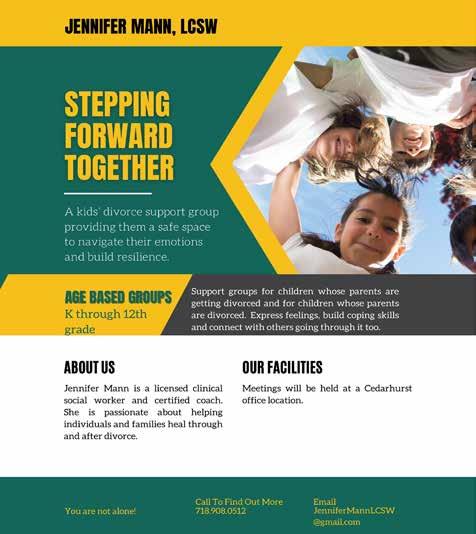
especially when parents have multiple children.
With a little intention, we can add quality into the quantity we already have. Connection is created from many smaller, meaningful moments that add up. It’s our overall attitude that tells a child, “You’re important to me.”
Too often, we listen as if they’re a stat-
ic noise on the sidelines. We can make the extra effort to put down distractions when our children come to speak to us and give them our undivided attention. Even if we need to resume our other activity, we can still make those two minutes show how much we value them.
We can maximize the time we do have. We may have a half-hour set aside for dinner preparations. We can invite a child to assist us or simply keep us company from a nearby chair. It’s grocery shopping time, and we can bring an eager assistant along. The busier we are challenges us to make every moment that much more connecting.
Parents should never underestimate the role they play in their child’s life. We may fail to recognize the importance of the little things we do, but our actions add up. It’s truly our presence and devotion that turn a simple, physical structure into a warm and loving home.
Sara Rayvych, MSEd, has her master’s in general and special education. She has been homeschooling for over 10 years in Far Rockaway. She can be contacted at RayvychHomeschool@gmail.com.


The school year has begun, and making sure every lunch packed is healthy becomes a top priority. Whether you’re preparing meals for young children, teens, or even college students, the goal remains the same: to create balanced lunches that provide the essential nutrients needed to get through the day. While it can sometimes feel overwhelming to ensure lunches are healthy and tasty, this article offers practical tips to simplify the process. We’ll also explore the importance of nutritious lunches, share meal ideas tailored for all age groups, tips for picky eaters, time-saving lunch prep tips, allergy friendly lunch ideas, healthy snacks, and how to handle lunchroom challenges.
Packing healthy lunches is important for several reasons, particularly when it comes to supporting overall well-being and daily performance:
1. Sustained Energy Levels : Healthy lunches provide a balanced mix of carbohydrates, proteins, and healthy fats that are key to maintaining steady energy levels throughout the day. Complex carbohydrates, such as whole grains, release energy slowly, helping to avoid the mid-afternoon energy slump. Protein sources, like lean meats, beans, and nuts, aid in muscle repair and keep you full longer, while healthy fats from sources like avocados and nuts are essential for brain function. This balance is crucial for students to stay focused and productive in class, enabling them to actively engage and participate in their lessons.
2. Improved Concentration and Cognitive Function: Nutrient-rich foods, including fruits, vegetables, whole grains, and lean proteins, are vital for
By Aliza Beer MS, RD, CDN

supporting brain function. Foods rich in antioxidants, such as berries and leafy greens, protect the brain from oxidative stress, while omega-3 fatty acids found in fish improve memory and cognitive performance. Eating a balanced lunch helps improve concentration, memory, and problem-solving abilities, which is especially important for students during exams and assignments.
3. Supporting Growth and Development: For children and teens, a healthy lunch is crucial for proper growth and development. Foods rich in calcium, such as dairy products and leafy greens, support bone growth, while ironrich foods, like spinach and lean meats, are essential for developing muscles and maintaining energy levels. Additionally, healthy lunches provide the necessary vitamins and minerals to strengthen the immune system, reducing the likelihood of illness and absenteeism from school.
4. Weight Management: Healthy lunches play a significant role in regu -
lating appetite and preventing overeating later in the day. Including fiber-rich foods, such as vegetables, whole grains, and fruits, promotes a feeling of fullness and stabilizes blood sugar levels, reducing the temptation to snack on unhealthy options. This can be particularly beneficial for weight management in both children and adults, helping to maintain a healthy body weight and prevent obesity.
5. Building Healthy Habits: Packing nutritious lunches sets the foundation for lifelong healthy eating habits. It encourages mindful eating, portion control, and an appreciation for a variety of foods, which can contribute to better long-term health outcomes.
6. Preventing Chronic Diseases: A diet rich in whole foods and low in processed foods can reduce the risk of developing chronic diseases like obesity, diabetes, and heart disease. For example, replacing processed snacks with fresh fruits and vegetables lowers the intake of unhealthy trans fats and add-
ed sugars. By making healthy lunches a daily habit, you’re actively contributing to better health both now and in the future, promoting longevity and reducing healthcare costs.
7. Boosting Mood and Wellbeing: Eating a well-balanced lunch can positively impact mood and mental health. Nutrient-dense foods help stabilize blood sugar levels, which can prevent mood swings, irritability, and fatigue. In summary, packing healthy lunches is vital for ensuring that both children and adults receive the nutrients needed to stay energized, focused, and healthy throughout the day. It’s an investment in both immediate well-being and longterm health, and academic success.
The lunch ideas in each age group are different, but feel free to use ideas from one age group for another according to your child’s preferences or needs.
Young Children (Ages 4-8)
1. Mini Sandwiches: Use wholegrain bread or wraps to make mini sandwiches with lean proteins like turkey, chicken, or tuna, along with veggies like cucumber or lettuce. Cut them into fun shapes using cookie cutters to make them more appealing.
2. Mini Pancake Sandwiches: Stack mini whole-grain pancakes with sliced bananas or berries. Serve with a side of Greek yogurt.
3. DIY Lunchables : Create a healthier version of the classic “lunchable” by packing whole-grain crackers, lean turkey, or cubes of low fat cheese, or chicken, and sliced veggies.
4. Rainbow Veggie Pizza: Use a whole-wheat tortilla as a base, spread a thin layer of tomato sauce, and top with low fat shredded cheese and a colorful
array of veggies like bell peppers, carrots, and spinach. Bake until the cheese melts, then cut into fun shapes.
(Ages 9-18)
1. Chicken Wraps: Whole-wheat wrap with grilled chicken, avocado, tomato, and lettuce. Feel free to substitute the chicken with turkey, tuna, or eggs.
2. Egg Muffins: Baked egg muffins with spinach, mushrooms, and cheese that can be made ahead of time and easily packed for lunch.
3. Vegetable Sushi Rolls: Use seaweed wraps to roll up veggies like cucumber, avocado, and carrot with a bit of brown rice. Slice into bite-sized pieces.
4. Bento Box: Create a balanced bento box with a variety of small portions: a serving of brown rice or quinoa, a portion of grilled salmon or chicken, a side of roasted veggies, and a small fruit salad.
1. Mason Jar Salad: Layer ingredients like leafy greens, grilled chicken, cucumbers, and a light dressing in a mason jar for a portable salad.
2. Soup and Sandwich Combo: A thermos of vegetable soup paired with a half sandwich made with whole-grain bread and lean protein like turkey, chicken, or tuna.
3. Mediterranean Pita Pockets: Fill whole-wheat pita pockets with a mix of diced cucumber, cherry tomatoes, Kalamata olives, feta cheese, and a dollop of hummus.
4. Turkey and Avocado Sandwich: Whole-grain bread with sliced turkey, avocado, tomato, and spinach.
5. Rainbow Salmon Salad: Colorful and crunchy salad consisting of purple cabbage, shredded carrots, scallions, watermelon radishes, cucumbers, sesame seeds, and chunks of grilled salmon with an Asian dressing.
For parents dealing with picky eaters, making lunchtime enjoyable and stressfree is key. Here are some strategies:
1. Involve Them in the Process: Let children help with grocery shopping and lunch preparation. They are more likely to eat what they’ve helped make.
2. Make Food Fun: Present meals in creative ways, like using colorful plates, cutting sandwiches into fun shapes, or arranging veggies in a rainbow pattern.
3. Start Small: Introduce new
foods gradually by pairing them with familiar favorites. For instance, if your child loves cheese, add a few slices of a new vegetable to a cheese sandwich.
4. Offer Choices: Give your child a sense of control by allowing them to choose between two healthy options. For example, ask, “Would you like apple slices or carrot sticks with your sandwich?”
5. Be Patient: Encourage your child to try new foods but avoid pressuring them. It may take multiple exposures before they accept a new food.
Busy schedules can make lunch prep challenging, but these time-saving tips can help:
1. Meal Prep on Weekends: Dedicate a couple of hours on the weekend to prepare ingredients like grilled chicken, chopped veggies, or cooked grains. Store them in the fridge for easy assembly during the week.
bread for gluten-free bread or wraps. Consider rice cakes, quinoa, or gluten-free pasta for variety. Include proteins like grilled chicken, eggs, or tofu.
2. Dairy-Free : Opt for plantbased alternatives like almond milk yogurt, dairy-free cheese, or avocado as a creamy addition. Include calcium-rich foods like leafy greens or fortified plantbased milk.
3. Nut-Free : Use sunflower seed butter or tahini as a nut-free alternative to peanut butter. Protein can also come from seeds, legumes, or hummus.
4. Egg-Free : For egg allergies, consider chickpea-based dishes, tofu, or beans as a protein source. Veggie-based wraps and salads are also great options.
Snack Ideas and Healthy Treats
Healthy snacks are just as important as nutritious lunches to keep your kids energized and satisfied throughout the
Eating a balanced lunch helps improve concentration, memory, and problem-solving abilities, which is especially important for students during exams and assignments.
2. Use Leftovers Creatively: Turn dinner leftovers into next-day lunches. For example, roast chicken can be turned into a wrap, and leftover veggies can be added to a salad.
3. Batch Cooking: Prepare larger quantities of favorite lunch items like soups, pasta salads, or egg muffins. Portion them out for several days of lunch.
4. Keep It Simple: Opt for no-cook or minimal-cook options like salads, sandwiches, or wraps that can be thrown together in minutes.
5. Freeze and Store: Items like chicken, fish, or even sandwiches can be made in bulk and frozen. Just make sure you research the guidelines on freezing ready-made food. When your child wants to eat it, just grab it and go in the morning!
For those with food allergies, safe and nutritious lunches are a priority. Here are some allergy-friendly options:
1. Gluten-Free: Swap regular
found in rice crispy treats or chocolate/ candy bars.
7. Freeze-Dried Fruit: An easy and clean snack that is very helpful especially in the winter months when fruit is not as varied or plentiful. Crispy Fruit is an example of one brand that can be purchased on Amazon.
Navigating the lunchroom can present challenges, but here are some tips:
1. Peer Pressure: Encourage open conversations about making healthy choices. Discuss why it’s okay to enjoy treats occasionally but focus on nutrient-dense foods for energy and concentration.
2. Limited Eating Time : Pack easy-to-eat, bite-sized items that don’t require much effort to consume such as sandwiches, wraps, or finger foods. Avoid packing items that take too long to eat, like whole apples or unpeeled oranges.
3. Picky Eaters Not Finishing Meals: Offer smaller portions of a variety of foods to encourage eating. Focus on including at least one or two items you know they enjoy and consider packing a favorite snack for later.
4. Balanced Lunches in Realistic School Settings: Recognize that some days might be busier or more stressful, leading to less balanced meals. Teach your child or teen that it’s okay and that overall balance matters more than perfection every day.
day! Here are ideas of healthy snacks your children can bring to school.
1. Homemade Granola Bars: Make your own granola bars using oats, nuts (if not allowed), seeds, and dried fruit. Customize with flavors like chocolate chips or coconut for a treat.
2. Fruit Kabobs: Skewer pieces of fresh fruit like strawberries, melon, and grapes for a colorful and fun snack.
3. Veggie Sticks with Hummus: Pack sliced veggies like carrots, cucumbers, and bell peppers alongside a small container of hummus for dipping.
4. Energy Bites: Make no-bake energy bites using oats, nut or sunflower butter, and honey. Add mix-ins like chocolate chips, coconut, or chia seeds for variety.
5. Popcorn and Whole Grain Pretzels: These are healthier options instead of chips when craving something salty/crunchy.
6. Chocolate Covered Rice/Corn Cakes: Much less calories/sugar than
In summary, providing healthy school lunches is a great way to fuel success, no matter the age group. By focusing on balanced meals that include a variety of nutrients, you’re providing your kids with sustained energy levels, improved concentration, and overall well-being. From creative meal ideas tailored to different age groups to strategies for overcoming common lunchroom challenges, the key is to make healthy eating both enjoyable and practical. With the right planning, your efforts will not only help your child thrive in school but also build lifelong healthy habits.
Aliza Beer is a registered dietitian with a master’s degree in nutrition. She has a private practice in Cedarhurst, NY. Patients’ success has been featured on the Dr. Oz show. Aliza can be reached at alizabeer@gmail. com, and you can follow her on Instagram at @alizabeer
By SuSAn SChwAMM
Menuchah, this is your first cookbook. Can you give us a little background on Menuchah Armel and how you got into cooking and recipe creation?
I have been cooking since I was a teenager. My mother used to work full time, and she gave each of us, her daughters, one night per week that we had to make dinner. She gave us specific instructions on how to prepare the dish, and I followed them. My dinners usually came out tasty and delicious, so I began to enjoy cooking. I ended up helping prepare a large part of Shabbos as well.
Jump ahead 10 years: I was married with 5 little children. My husband and I decided that he’d start to work and I’d stay home to care for the kids and not go back to my part-time secretarial job. A few years later I began dabbling in preparing kugels and salads for an erev Shabbos store. Then a friend asked me to help her cater a bar mitzvah. I really enjoyed it, and I saw that she did not like preparing all that food. That’s when I began catering small events, which eventually led me to open up my own catering business.
When did the idea for writing a cookbook first come to mind?
For the past 15 years, people have constantly asked me for recipes, and I would happily give them. Many of my friends and customers would constantly tell me how they loved the recipes and that I should “make a cookbook one day.”
How long did it take you to write it?
The actual cookbook took one year of intensive work to publish. It was because I had thought about it a lot in my head that it came to fruition so fast. My husband had also been an editor and had a lot of experience with books and publishing them, which helped connect me with very professional people in the field, and I was able to get it going pretty quickly.
What were some of the surprises you learned along the way?
I was very surprised at how long the photo shoots took and how much work they were. To photograph food is a real art. Each food item sometimes took a half hour to photograph. The setup and lighting have to be just so, and it can take several tries to get it right. We did them on Wednesdays and it was a 3-day job. Tuesdays were prep days when I bought the ingredients needed, cooked and prepared the food, and sometimes bought a prop. The photographer came with most of the settings and props. Then, on the day of the shoot, I was on my feet for hours running back and forth between the kitchen and the dining room table. Thursday was my recuperation day!

challenging. That is why I included step by step pictures so that people could see the process rather than just read about it. It took me a few tries until I got it right!
Some people like to cook more than bake or vice versa. What’s your happy place?
When someone has a simcha, I get very excited and start baking away. I really enjoy bringing over homemade baked goods to add to a simcha. On the other hand, when I have guests coming in from abroad, I am happy to prepare a good, homecooked meal for the weary traveler. They are always so grateful to have something normal to eat after a long international flight. I used to enjoy baking more, but now I think I like them both!
“I highly recommend cooking in bulk for all the yomim tovim to avoid having to cook everything again before Sukkos.”
Some recipes are more challenging to create. How long did it take you to create some of the more challenging recipes?
I don’t really create recipes, rather I gather recipes over the years and adapt them and use them over and over. The ones that I found to be quick and easy and successful made it into my cookbook.
One of the most challenging recipes in the book is the two tone meat-roll. I tasted it at a sheva brachos, and I really liked it. I got the recipe from a neighbor, but then I had to figure out how to make it work which was quite
What are some spices that you turn to again and again?
My go-to spices that I think everyone should use are salt, pepper, garlic powder and paprika. They really add a lot to just about everything!
What are certain tools in the kitchen that you feel every cook should utilize?
Having the proper knives to cut and chop up your vegetables is super important. I have found the Victorinox knives to serve me the best. I like their length and the way they cut the vegetables. Large plastic bowls in different sizes are also really important for mixing doughs and batters. If you have the right size, it makes a big difference in how easily you can combine all of the ingredients.
What dinner do you turn to serve your family on a consistent basis?
My family looks forward to my schnitzel dinner every Wednesday night. I either make small nuggets or large pieces baked in the oven. I serve it with rice and zucchini in tomato sauce. It really is their favorite meal!
Do you like to experiment with different cuisines or is your style more “tried and true”?
My style is more “tried and true.” When I do taste something new that I like, I try it, and if I works for me, then I add it to the repertoire.
What recipes do you suggest a person use to impress her family/guests that don’t take too much time?
Soups are great fillers and are very easy to make. I really enjoy starting off a meal with a hearty soup. Chicken and fish also don’t take too much time to prepare but leave a great impression. Roasted vegetables also are an easy way to make something healthy and yummy as well.
I’m sure every recipe is so close to your heart because you put so much effort and thought into them. What are three to four recipes that you really urge people to try if they’re going to open up this book and start somewhere?
My meat sauce recipe is a really easy dinner to make when you are in a pinch. Serve that over rice, and you have a great meal. My most popular chicken recipes are the honey garlic roasted chicken and the barbeque sauce chicken. For dessert, I urge everyone to try the
chocolate mousse recipe. It has only a few ingredients but comes out delicious!
I have gotten so much positive feedback from the cookbook. Everyone really enjoys that the recipes are so easy and come out great!
As we get closer to the yomim tovim, what do you suggest people make for Rosh Hashana or for Sukkos?
For Rosh Hashana, I focus on davening and aim not to overdo the meals, especially since the simanim serve as the first course and are quite filling. The simanim include fish, and for the main course, I typically serve a beef dish, such as a roast, along with a sweet kugel like apple or sweet potato pie, finishing with honey cake or cookies for dessert. For the day meal, I start with salmon or a salad topped with pieces of salmon, followed by a combination of beef and chicken or schnitzel for the main course, always including our traditional stuffed cabbage. I enjoy preparing unique side dishes exclusively for yom tov, such as broccoli kugel and cabbage mushroom kugel, which I make in individual pans.
For yom tov, I upgrade my beef and chicken dishes to fancier versions and serve the same menu for both nights and both day meals, which my family appreciates. I also enhance desserts for yom tov, making a large batch of layered cappuccino ice cream that lasts until the end of Sukkos.

I highly recommend cooking in bulk for all the yomim tovim to avoid having to cook everything again before Sukkos. For example, I prepare stuffed cabbage for Rosh Hashana and freeze some for the last days of Sukkos. In the weeks leading up to Rosh Hashana, I prepare several types of roast, slice them, and freeze them. This allows me to conveniently pull them out as needed throughout the entire yom tov period.
We “eat” with our eyes. What are some tips you can give the home cook for serving their food with a nice presentation?
The paper goods stores offer a variety of pans that are perfect for making individual cakes, desserts, and kugels. Using these individual pans and cups enhances the presentation of the food, adding a special touch to your table for yom tov and simchas. I also find the natural beauty of different colored vegetables intriguing. By simply layering salad vegetables in a clear bowl and pouring the dressing around the top, the vibrant colors create a visually appealing dish. Additionally, I enjoy using dip bowls in various shapes and sizes to ensure the dish is proportional to the amount of dip it contains.
Menuchah’s cookbook, Straight to the Plate, can be purchased on her website, https://straighttotheplate.net/

Yield: one 10” round pie or 10 mini cobblers
I have been making this recipe since I was a newlywed. It is a great accompaniment to a chicken or meat main course and can be served as a whole pie or in individual muffin cups.
APPLE LAYER
○ 6 large green apples, peeled and cubed
○ ¹⁄ ³ cup sugar
○ 1 tsp. cinnamon
○ ¹⁄ ³ cup orange juice
CRUMBLE TOPPING
○ ½ cup oatmeal
○ ½ cup flour (white or whole wheat)
○ ½ cup brown sugar
○ 1 tsp. cinnamon
○ ¼ cup oil
APPLE LAYER
1. Preheat oven to 350° F (180° C).
2. Line and grease a 10” pie pan or 10 individual tart pans.
3. Combine ingredients in mixing bowl.
4. Spread in prepared pan and press down lightly.

CRUMBLE TOPPING
1. Combine ingredients in a medium-sized mixing bowl. Mixture should be crumbly.
2. Sprinkle on top of apples. Pat down lightly.
3. Bake for 1 hour or until golden brown.
For a smoother consistency, you can mix the crumble topping in a food processor with the S-blade attachment.
NOTE
If you prefer a thicker layer of topping, I recommend doubling the quantities for the topping.
Yield: 40 cookies
A Rosh Hashana staple. These cookies are better than the store-bought version, not only because the recipe contains no margarine or preservatives but also because of their superior taste.
○ 1 ¼ cup sugar
○ 2 eggs
○ 1 cup oil
○ 6 Tbsp. honey
○ 6 cups flour
○ 1 tsp. baking soda
○ 1 tsp. cinnamon
○ ¼ tsp. ground cloves
1. Preheat oven to 350° F.
2. Line a baking tray with baking paper.
3. Cream sugar, eggs, and oil.
4. Add honey and continue mixing.
5. Add dry ingredients and mix. Cookie dough should be firm and not too sticky.
6. Form balls, each from about 1 Tbsp. of dough, and place, spaced apart, on baking tray.

7. Bake for 10–15 minutes or until just brown on top. TIP If dough is too dry and not sticking together, add
small amounts of water until a desired texture is achieved.

By Naomi Nachman
◦ 4-pound second cut brisket
(you can also use brick roast, top of rib, California, chuck roast)
◦ 2 large beets, peeled and chunked
◦ 1 large onion, chunked
◦ 1 large carrot, chunked
◦ 2 tablespoons canola oil
◦ Kosher salt and pepper

Sauce
◦ ½ cup tomato sauce
◦ 2 tablespoons silan
◦ 18.5 oz pomegranate jam or raspberry jam
◦ 2 tablespoons soy sauce
◦ 2 tablespoons plum jam
◦ 1 teaspoon Dijon dry mustard
◦ 4 cloves crushed garlic
◦ Pomegranate seeds for garnish

1. Combine the sauce ingredients in a bowl. Set aside.
2. Prepare a large Dutch oven or wide pot with a lid. Add canola oil and heat on high till very hot.
3. Season brisket with salt and pepper and sear meat on both sides until a nice brown crust has formed. Remove meat and set aside.
4. In the same pan, add the vegetables and season with salt and pepper. Stir the vegetables until they get a bit of color.
5. Place the meat back in the Dutch oven or pan and nestle the meat on top of the vegetables. Pour the sauce over the meat and vegetables.
6. Cover and simmer on low for 3 hours.
7. Cool before slicing. Before serving, garnish with fresh pomegranate seeds.
Naomi Nachman, the owner of The Aussie Gourmet, caters weekly and Shabbat/ Yom Tov meals for families and individuals within The Five Towns and neighboring communities, with a specialty in Pesach catering. Naomi is a contributing editor to this paper and also produces and hosts her own weekly radio show on the Nachum Segal Network stream called “A Table for Two with Naomi Nachman.” Naomi gives cooking presentations for organizations and private groups throughout the New York/ New Jersey Metropolitan area. In addition, Naomi has been a guest host on the QVC TV network and has been featured in cookbooks, magazines as well as other media covering topics related to cuisine preparation and personal chefs. To obtain additional recipes, join The Aussie Gourmet on Facebook or visit Naomi’s blog. Naomi can be reached through her website, www.theaussiegourmet. com or at (516) 295-9669.

This column features business insights from a recent “Mind Your Business with Yitzchok Saftlas” radio show. The weekly “Mind Your Business” show – broadcasting since 2015 – features interviews with Fortune 500 executives, business leaders and marketing gurus. Prominent guests include John Sculley, former CEO of Apple and Pepsi; Dick Schulze, founder and Chairman Emeritus of Best Buy; and Beth Comstock, former Vice Chair of GE; among over 400+ senior-level executives and business celebrities. Yitzchok Saftlas, president of Bottom Line Marketing Group, hosts the weekly “Mind Your Business” show, which airs at 10pm every Sunday night on 710 WOR and

Understanding ai
throughout America on the iHeartRadio Network.
Since 2015, Yitzchok Saftlas has been speaking with leading industry experts on the “Mind Your Business” show, sharing insightful business and marketing strategies.
It’s no question that AI (Artificial Intelligence) is rapidly transforming business operations across many industries. In this article, we’re taking a look at tips from 5 innovative experts on how to effectively harness this groundbreaking technology to enhance your business.
r ay Hennessey, CeO and e xecutive Partner at Vocatus
I would define AI as the process of making decisions with a level of human intelligence but without any actual human interaction. There have been AI functions within computing for years. As computing has advanced, a large part of our focus has been trying to figure out what sort of productivity could be gained if computers could make the choices and decisions that we would. When you look at advancements in automation in the past, they have largely been about the function of work. For example, assembly line robots that can work on their own without any decision-making required. AI has allowed this automation to become more advanced by adding a factor of intelligent decision-making based on probability. Now, we know that when humans make decisions, we certainly consider probability, but we can’t perform the same level of computations that modern computing can. This is where a large part of the potential of AI lies.

serV iCe
shep Hyken, Customer s ervice e xpert and nsa Hall of Famer
Most people think that AI technology is brand new, but we’ve really been using it for years. Think about Microsoft Outlook, for example. Outlook automatically sends emails you don’t want to the junk folder. That’s a form of AI. Today, I can go online and interact with programs like ChatGPT, through typing, or even voice recognition, and the AI is going to come back to me with good answers. Now, how can this be used in customer service? And is it going to eliminate jobs? Well, back in the 1960s, when Barclays Bank first introduced the ATM, everybody said, “We don’t need bank tellers anymore.” But, the last time I went to a bank, there were plenty of tellers working in there, even though there was an ATM right there for customers to use outside of regular business hours. So, I don’t think customer service reps are going to go away. As a matter of fact, we conducted a study and asked customer service leaders, “With the addition of ChatGPT, are you going to start cutting down on staff?” Around 70% said, “On the contrary, we’re actually increasing staff, because ChatGPT is meant to deal with the easy questions that you shouldn’t have to call and wait on hold for. That way, we can leave the more sophisticated and complicated questions available for our people to answer, while building a relationship through empathy and understanding of a customer’s situation.”
The primary factor is using the right solution at the right time for the right audience.

matt mcHale, Founder of a rca s ys ll C.
Essentially, API integration is just one system being able to talk to another. If I wanted to integrate my X (Twitter) account with my phone and be able to send pictures over, there’s an API for that. We use it all of the time, but we don’t think about it. Now, when we get into API for AI, that’s when things really get fun, because you can bring all that intelligence and information directly into your company’s systems. For example, you could use an AI chatbot for your website’s customer service. All those frequently asked common questions that would usually waste a lot of your customer support team’s time are now taken care of. Just look at DuckDuckGo. Here’s a company that’s also a search engine. They can’t develop what Google, OpenAI, and Microsoft are currently doing with AI, but if they don’t, they’ll likely be out of business. Luckily, there are other systems that are coming out and other ways to use your API to do those things. Imagine taking all that information and bringing it into your company to plug into your analytics. For example, there’s a company called Fathom. When I’m conducting meetings over Zoom, Fathom records the video and audio, creates a whole transcription of the audio, and generates an AI summary. You could take all of that information onto your server, using your own little version of GPT and say, “Remind me what we talked about at Thursday’s meeting? What were the five takeaways?” You don’t have to look anywhere. You’re going to have all that information right there on your phone.

r iding t H e WaV e
moshe Hecht, Founder and CeO of Hatch
I think that running a successful business isn’t about creating a market or forcing a solution onto an industry. It’s about recognizing when your industry is moving in a certain direction. Right now, we’re riding the wave of AI, which relies heavily on data. Data is essential for AI machine learning, generative AI tools, and enrichment. Data, as a solution, is the calling of our time and is the direction that most industries are heading towards. If you are able to monetize that and develop a solution for a specific audience, I believe that this will be your greatest driver of success. It’s not about your particular talents or group. Those are important, but they are secondary things. The primary factor is using the right solution at the right time for the right audience. That’s what it means to ride a wave.

ai in t H e t e CH WOrld
Beryl t rachtenberg, Founder and CeO of e lite media t rax i nc.
There’s a lot of fear when it comes to AI, but I don’t think the human race is coming to an end just yet. I don’t think every single job is going to be replaced with AI. It’s a lot of fun to play around with and there’s definitely been a crazy amount of hype surrounding it. We’re seeing the mark it’s making on the tech industry with major companies like Google introducing their own AI models in response to the pressure they’ve been experiencing from tools like Chat GPT, which can offer a lot of information. If people can get their information without having to navigate a search engine, Google is going to start sweating. I think that is why they released their AI tool, Google Bard. But, what we also have to realize is that even though AI seems so new, the truth is that many of Google’s marketing tools were built around AI. They use AI to learn about people, how they act, what their online habits are, and what converting them to a customer looks like. They can copy that blueprint and use it to sort of predict who’s going to buy and who is not going to buy certain products. So, AI is definitely the powerhouse of Google’s technology.


You should hide your head in a bag!

Moderators Call Timeout to Huddle and Discuss Strategy With Kamala
- Babylon Bee headline after the presidential debate
Kamala Safe and in Stable Condition After Attempted Interview
- Ibid.
Media Assures Americans The Real Threat is the Side That Keeps Getting Shot At
– Ibid.
Woman Who Made Career Singing About Her Bad Choices Endorses Kamala
- Ibid., after a famous singer endorsed Kamala Harris
As you get older, you’ll realize that a $30,000 watch and a $30 watch both tell the same time.
A Gucci wallet and a Target wallet hold the same amount of money.
A $10,000,000 house and a $100,000 house host the same loneliness.
A Ford will also drive you as far as a Bentley.
True happiness is not found in materialistic things, it comes from the love and laughter found with each other.
Stay humble… the holes dug for us in the ground are all the same size.
- Tweet by Hall of Fame basketball player Scottie Pippen

TAFF: At the debate the other night you talked about creating an “opportunity economy” — what if we can drill down on that a little bit. When you talk about bringing down prices and making life more affordable for people, what are one or two specific things you have in mind for that?
VICE PRESIDENT HARRIS: Well, I’ll start with this. I grew up a middle-class kid. My mother raised my sister and me, she worked very hard. Um, she was able to finally save up enough money to buy our first house when I was a teenager. I grew up in a community of hardworking people, construction workers, and nurses and teachers, and I try to explain to some people who may not have had the same experience, you know, if, but, a lot of people will relate to this, you know I grew up in a neighborhood of folks who were very proud of their lawn. You know? And, um, and I was raised to believe and to know that all people deserve dignity. And that we as Americans have a beautiful character. You know, we have ambitions and aspirations and dreams. But not everyone necessarily has access to the resources that can help them fuel those dreams and ambitions. So when I talk about building an opportunity economy, it is very much with the mind of investing in the ambitions and aspirations and the incredible work ethic of the American people, and creating opportunity for people, for example, to start a small business. Um, my mother, you know, worked long hours, and our neighbor helped raise us. We used to call her, it was, I still call her, our “second mother.” She was a small business owner. I love our small business owners, I learned who they are through my childhood, and she was a community leader, she hired locally, she mentored, our small businesses are so much a part of the fabric of our communities, not to mention, really, I think the backbone of America’s economy.

We’re going to charge them. I’m telling you right now, we’re putting a 200% tariff on [cars made in Mexico], which means they’re unsellable. And then you wonder why I get shot at. You know, only consequential presidents get shot at.… But you have to do what you have to do. You have to be brave. Otherwise, you’re not going to have a country left.
- Trump, at a townhall event


Today’s apparent assassination attempt comes amid increasingly fierce rhetoric on the campaign trail. Mr. Trump, his running mate JD Vance continue to make baseless claims about Haitian immigrants.
- How NBC’s Lester Holt spun Sunday’s assassination attempt on Trump
Do you expect to hear anything from the Trump campaign about toning down the rhetoric, toning down the violence, or would that be atypical of the former president?
- MSNBC anchor Alex Witt suggesting that the victim of the attempted assassination is somehow responsible for it
If Donald Trump wants people, wants Kamala Harris and others to stop saying that he is a threat to democracy, then he should stop threatening democracy.
- Don Lemon, in an appearance on his old network CNN, talking about the second assassination attempt on Trump’s life
Don’t lecture Donald Trump about softening his rhetoric after two people tried to kill him.
- Trump’s running mate Sen. J.D. Vance

When I am often asked what is my truest connection with G-d, I answer that all that kept me going in captivity was the belief that I was not alone, that I had Someone with me who…protected me there, during all those hours in captivity. This is called divine providence. I really think that I always felt divine providence around me. I always felt Him with me, protecting me from every trouble and obstacle. When I came back, I immediately told everyone that I wanted to start wearing a kippa and tzitzit and everyone laughed at me. They thought I was crazy. What has that got to do with anything now? I told them I was thinking about it all the time I was in captivity.
The month of forgiveness has come and I feel that I have a lot to ask forgiveness for and I also feel a connection that is big enough for me to go there to also acknowledge my gratitude. To say thank you for protecting me from my enemies, and ours.
Father, thank you for the privilege of being here. You chose to show me the correct way and You will not regret this. I love you, Tata, and am sure that You are trying to protect the other hostages who are still there.
- Instagram post last Sunday by 13-year-old Yagil Yaakov, who was released from Hamas captivity in Gaza after 52 days
It’s almost shameful to want to have children
- Title of an LA Times op-ed by a University of California professor of gender studies who raises the question in response to gender issues and climate change
Extinctionists want a holocaust for all of humanity.
– Tweet by Elon Musk in response
[At the debate] Trump was constantly under attack by the moderators. So much so that you would think they were working from a slanted roof.
- Greg Gutfeld
Kamala Harris referred to January 6th as the greatest attack on American democracy since the Civil War. She said this the day before September 11th. That’s like saying you had a terrible seat at the theater to Mary Todd Lincoln. – Ibid.
It was the first DEI debate – different standards were enforced on Trump while Harris had none. – Ibid.
If it is going to be close, by the way, if it is a razor-thin close election, I’m pretty sure Kamala will win because they will cheat.
– PayPal co-founder and Trump supporter Peter Thiel on the “AllIn” podcast

It Was 3 on 1, But They Were Mentally Challenged People, Against One Person of Extraordinary Genius.
- Trump writing about the debate, on Truth Social




By Marc A. Thiessen

PALM BEACH, Fla. - Sitting in his private office at Mar-a-Lago the day after a second attempt on his life, Donald Trump described for me the chaotic scene at his West Palm Beach, Fla., golf club on Sunday.
The walls of his office are lined with old black-and-white family portraits, as well as more recent White House photos of Queen Elizabeth II – Trump’s Scottish mother was a huge admirer of the late British monarch – and his meeting with Kim Jong Un at the dividing line between North and South Korea. From behind his large oak desk, Trump told me what happened in the moments after a Secret Service agent noticed the barrel of an assault rifle sticking through the hedges lining the course about 400 yards away from the former president. Unlike his rally in Butler, Pa., in July, there is no video or photography
of this apparent assassination attempt, so I asked Trump to walk me through what happened.
“Well, this is a much different circumstance,” he said. “I was at the golf course at Trump International and playing. We were on the fifth hole and playing normally, like you would play a round of golf with some friends, and we heard bullets. But the bullets were from the gun of the Secret Service agent who acted really quickly.
“They saw a man in bushes and the gun, and he spotted him and he spotted the barrel of the gun and he started shooting. And the end result is they captured him and they’re questioning him now. … And we had very good Secret Service. I mean, I think they did a very good job.”
“The end result is they got him,” Trump said.
Did agents jump on him when the shots rang out, as they did in Pennsylvania? “No, we actually did more of get-out-of-the-area thing,” he said. “And that would be on the golf carts – rather quick golf carts. So, in this case. But they were very protective, very good. They did a great job and tough.”
I pointed out that in just nine weeks he has faced two assassination attempts. How, I asked, has it affected him? “Well, it hasn’t affected me,” Trump said. “I mean, I try not to think about it. But people ask me that question a lot, and I try not to think about it. This was different from the first one, but this one in a certain way was, I mean, the gun was even more violent. And the bullets were from Secret Service, and they caught him. They caught him before anything happened. But it would have happened. I mean, he’s somebody that it would
have happened.”
We are still learning about this gunman, but Trump assigns blame to Democratic campaign rhetoric that portrays him as a threat to democracy. “I think a lot of it is the rhetoric that the Democrats are putting out between the rhetoric and lawsuits that we won in Florida.
“And it works both ways because the Republicans are angry about it. And the Democrats are [angry] when they hear a threat to democracy. I’m actually the opposite of a threat to [democracy]. They’re the threat to democracy. I mean, they’ve gone against their political opponent with lawyers, never happened. … This happens in South America a lot, but this never happened here. And when they hear all of this rhetorical splendor that they throw out – even the congressmen and they have the kind of statements that are made – I think it’s
a disgrace.
“I really believe that the rhetoric from the Democrats is making – I put out a [Truth Social post] today – is making the bullets fly. And it’s very dangerous. Dangerous for them. It’s dangerous for both sides.”
He does, however, praise Democrats on Capitol Hill who are taking congressional investigations into the assassinations seriously. “One thing I’ll say is that the investigation that’s going on is, believe it or not, it seems to be nonpartisan. The Democrats are just as angry about Butler and this one as the Republicans, because it can happen to them. And they understand that, and they don’t want that. And I don’t think they want it to happen to me, either. But rhetorically, it’s very dangerous what they do.”
At one point during our interview, Trump was handed a note that the acting head of the Secret Service, Ronald Rowe, was waiting to see him. He paused our conversation to meet with him. Then, before resuming, Trump called the family of Corey Comperatore, the Pennsylvania firefighter who was fatally shot during the Butler attack. Af-
terward, Trump showed me a photo of two American flags on separate cranes that were above him at the Butler rally – tangled together into what he pointed out was the shape of an angel.
When I asked about his meeting with Rowe, Trump was circumspect. “I think he’s trying very hard, but we have peo -
I suggested that, after two assassination attempts, MAGA voters will walk over hot coals to vote for him, but the election will be decided by a small number of voters in a handful of swing states. (“Maybe, and maybe a lot,” Trump interjected. “I have a feeling that it might be a lot.”) Many of those swing
“I really believe that the rhetoric from the Democrats is making – I put out a [Truth Social post] today – is making the bullets fly. And it’s very dangerous.”
ple out there that they’ll listen to statements made and they almost think that it’s a calling [to kill me],” he said. “But they say very bad things and they can make somebody that’s not balanced into a very severely unbalanced person. And then they lie in wait.”

voters, I told him, like your policies and don’t like the direction of the country, but are not sure about putting you back in the Oval Office. What, I ask, is your message to them?
“Well, I was a president that had tremendous success,” he said. “Be -
tween the tax cuts, the economy until the pandemic … I did a great job during the pandemic, [and] never got the credit I got for the economy and the military.”
“So,” he continued, “if they want safety, if they want low taxes, if they want all the things that I provided – and I think they do – and I think our vote is much bigger than what, and traditionally it’s been both elections.”
He added: “I think they do like our policies. And a couple of politicians said, ‘Well, without Trump, the policies aren’t the same and you need Trump for the policies.’”
“I mean a lot of people say, well, they love your policy, they love the job you did, but they might not like you. And I actually think they do like me.”
In a subsequent column, I will have more from this interview on Trump’s message to swing voters, his views and policies on legal immigration, and his Day 1 plans to tackle inflation and energy production, as well as Ukraine, Taiwan and other international crises.
© 2024, Washington Post Writers Group


PBy David Ignatius
KYIV - The terrible cost of Russia’s continuing assault on Ukraine is viscerally clear at a military rehabilitation center on the outskirts of this city. Soldiers there describe how their bodies were shattered on the front lines. And they’re the lucky ones who survived.
Alexei was trying to hold his position at Pokrovsk, the scene of some of this year’s heaviest fighting, when a drone dropped a grenade near him. His left leg and right hand were nearly severed, attached by thin threads of tissue but now mended. Nikolai lost his left leg in Kharkiv, another Russian target. He waited 18 hours to be evacuated because of drone attacks. Dima lost both legs when his vehicle was hit by a drone in Pokrovsk. The four soldiers traveling with him were killed.
I met these wounded soldiers at a recovery center funded by a Ukrainian businessman named Victor Pinchuk, one of 15 similar facilities he has established around the country. Like soldiers everywhere, they’re kids, with sleeves of tattoos and T-shirts promoting heavy metal bands. But they got old in a hurry. Talking with a half-dozen of them Friday, I heard the same grim account of what’s at stake in this war. As Alexei put it: “We don’t have a choice. If we stop fighting, we’ll stop existing.”
Listening to their stories, you realize that Ukraine is bleeding out. Its will to fight is as strong as ever, but its army is exhausted by a ceaseless drone war that’s unlike anything in the history of combat. The Biden administration’s rubric of support –
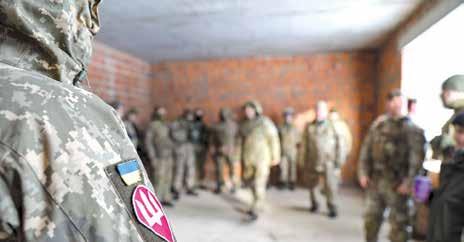
children, taking pictures by the barbecue, but now I take pictures on the front line.”
The prolonged applause brought tears to Varakin’s eyes.
“as long as it takes” – simply doesn’t match the reality of this conflict. Ukraine doesn’t have enough soldiers to fight an indefinite war of attrition. It needs to escalate to be strong enough to reach a decent settlement.
That’s the lesson I took from a visit here to attend a conference sponsored by Pinchuk’s group YES, which stands for Yalta European Strategy. It was founded 20 years ago to encourage Ukraine’s integration with the West. Now it’s trying to prevent the country’s destruction. The title of the meeting was “The Necessity to Win.” But the underlying message was that, without more firepower, Ukraine might be forced to settle on Vladimir Putin’s terms to halt his brutal onslaught.
The YES gathering was unlike any conference I’ve attended. It was a Davos-like meeting of prominent politicians and diplomats, featuring a passionate address by President Volodymyr Zelensky. But on the wall behind the speakers was a grim display of snapshots of dozens of dead soldiers – some bright-eyed, others haggard, all of them gone. And the most powerful presentations weren’t from the big shots but from soldiers who had come in from the front.
“We are tired,” said a drone unit commander named Serhii Varakin, who has been fighting Russian aggression in eastern Ukraine for more than eight years. His face, ringed with fatigue, was a portrait of the stress of relentless combat. The conference’s most emotional moment came when this hardened warrior told the audience: “I should have had a family, wonderful
During a break from the conference, I visited a Ukrainian friend named Sergiy Koshman, a freewheeling intellectual from Kharkiv and onetime civil society activist. Now he’s working to design weapons. At our last meeting, a few months after Russia’s full-scale invasion, he had described an almost giddy sense of national solidarity, with young activists talking about a mountaintop festival to defy Russian threats of using tactical nuclear weapons. But that mood has changed.
“We thought that once we showed solidarity, Russia would back off,” he told me. “Now it seems the war could last for decades.” He described a “radicalization” of intellectual life, in which the core principle had become: “We have to kill as many Russians as possible and find innovative ways to do it.” The war has transformed the country. “It’s so kinetic, when ballistic missiles are raining down on you daily. It’s a different reality.”
This cultural mood was vividly embodied by a soldier named Yarnya Chornohus. She’s a poet when she isn’t at the front, and she was a striking presence onstage: movie-star beautiful, with a snake tattooed on her right arm, the fangs open at her wrist, and the Ukrainian military emblem on her left arm. She said she had instructed her daughter to be ready to fight someday. As a poet, she said, she had learned the power of her verse comes from her experience of war.
A recurring theme of the conference was that President Joe Biden should remove current limits on Ukraine’s use of American ATACMS long-range missiles to strike deep into Russia. A procession of
speakers said Biden should stop worrying about the danger of Russian escalation –and implied he was weak for even considering the issue. That strikes me as wrong; a primary responsibility of any American president is to avoid war with a nuclear superpower.
But I came away from the conference thinking the United States should take more risks to help Ukraine. It matters how this war ends. If Putin prevails, it will harm the interests of America and Europe for decades.
“I have no announcement to make” on the ATACMS issue, national security adviser Jake Sullivan said in a video interview with the group. That’s fine with me. Don’t announce anything. Leave Putin guessing. But if Russia’s surge continues, Putin’s bases within ATACMS range should be legitimate targets. He’s the one crossing the “red line” every day he continues his unprovoked aggression.
Zelensky, clad as always in a green combat shirt, said the proper range for U.S.-supplied weapons should be “long enough to act as a game changer and make Russia seek peace.” He’ll meet Biden in a week in New York to make that plea in person. I hope Biden says yes, privately. If Zelensky is wise, he’ll bring along Oleksander Budko, a wounded veteran who spoke to the YES group. Though he lost both of his legs in combat, the boyishly handsome Budko was recently chosen as “Ukraine’s most desirable man” on a national television show. That’s the spirit that sustains Ukraine in this dark moment, and it’s moving to see.
But it’s not sentimentality that underlies deeper American support for Ukraine, but U.S. national interest.
“Elana” is an 18-year-old freshman at Vanderbilt who was raised in West Bloomfield, Michigan, in a family that cares deeply about the fate of Israel. She has never expressed any interest in politics, but she could decide one of America’s most fateful elections ever and prevent Israel from great danger.
It is not too late for “Elana” and others like her to get the ballots that could ensure that Donald Trump returns to the White House and Kamala Harris will never get there. But they must take immediate action.
The 2000 presidential race was decided by 537 absentee ballots cast in Florida. Polls indicate that the current election could be just as close, so every vote in swing states is crucial.
“Elana” could end up casting the deciding vote.
Now, for why that matters. I watched last Tuesday night’s presidential debate, and I agree with Donald Trump.
“If she’s president, I believe that Israel will not exist within two years from now,” he said. “And I’ve been pretty good at predictions. And I hope I’m wrong about that one. She hates Israel.”
Harris made faces when he said that. But her words proved him right.
“Far too many innocent Palestinians have been killed,” she said. “Children, mothers. What we know is that this war must end. It must end immediately, and the way it will end is we need a cease-fire deal, and we need the hostages out. And so we will continue to work around the clock on that.”
Immediately? How about letting Israel and its democratically elected government decide when it has completed the goals of this war, which include destroying Hamas and preventing it from being able to rule Gaza or attack Israel ever again?
And why did she not blame the terrorist organization for the deaths of both

By Martin Oliner

Israelis and Palestinians in this war? Or how about correcting biased mediator Linsey Davis, who quoted Hamas statistics as if they were gospel?
Harris did not stop there in her patronizing criticism of Israel and its people. She professed moral equivalence as her doctrine when true morality is needed more than ever in the Middle East.
“We must chart a course for a twostate solution,” she said. “And in that solution, there must be security for the Israeli people and Israel – and in equal measure for the Palestinians.”
News flash for Kamala: Polls over the last few years have found that a majority of Israelis no longer back creating a hostile terror state in their biblical heartland. And polls of Palestinians have never found a majority of them favored letting Israel exist.
That was all before October 7. After the Palestinians murdered 1,200 Israelis in one day, she has a lot of chutzpah to tell America’s closest ally that she cares about the security of their murderers “in equal measure.”
If Harris becomes president, residents of northern Israel will be in great danger. She will not recognize Israeli sovereignty
over the Golan like Trump did as president, nor will she utter a half-persuasive “don’t” to Hezbollah like President Biden. Hezbollah will have a field day and get away every day with murder.
Harris will neither project strength, nor use it. She says she will let Israel defend itself, but she is obsessed with how.
That “how” is with defensive measures. But defensive measures cannot win a war that must be won.
Trump, by contrast, presented a clear vision for the Middle East in the debate. He proved once again that he, unlike Harris, knows who the bad guys are.
“Iran was broke under Donald Trump,” he said. “Now Iran has $300 billion because they took off all the sanctions that I had. Iran had no money for Hamas or Hezbollah or any of the 28 different spheres of terror. And they are spheres of terror. Horrible terror. They had no money. It was a big story, and you know it. You covered it. Very well, actually. They had no money for terror. They were broke. Now they’re a rich nation. And now what they’re doing is spreading that money around. Look at what’s happening with the Houthis and Yemen. Look at what’s going on in the Middle East. This would
have never happened. I will get that settled and fast.”
While confused American Jews continue to vote overwhelmingly for Democratic candidates, in Israel, it is the opposite. Israelis know what Trump did for them as president, and they greatly appreciate it.
The junction in front of the American embassy in Jerusalem that he finally moved to Israel’s eternal capital is named Donald Trump Square. That was a campaign promise, and unlike his predecessors who made similar promises, he kept it, and I attended the ceremony unveiling the embassy.
Israelis also see through Kamala Harris, who boycotted their prime minister’s brilliant speech to Congress that I attended and she did not.
Harris will appoint apologists and even allies of Iran to key positions of power. She will project weakness, and all Iranian proxies will be emboldened, which could make the security problems in Israel spiral out of control.
When Iran gets a nuclear bomb and casts a nuclear shadow over the Middle East, what will she do? Make another face? Laugh another laugh?
The continued existence of the world’s only Jewish state is no laughing matter.
This is why “Elana” and Americans of all ages who care about Israel must take steps to vote right away.
The future of Israel’s nearly 10 million residents depends on it.
The writer is chairman of the Religious Zionists of America, president of the Culture for Peace Institute, and a committee member of the Jewish Agency. He currently serves as a member of the U.S. Holocaust Memorial Council, appointed by former U.S. President Donald Trump. Mr. Oliner is the former mayor of the Village of Lawrence. The views expressed here are his own.


September 13, 1993, was the day Israel’s ruling class abandoned Zionism. That day, when then-Prime Minister Yitzhak Rabin stood in the White House Rose Garden and officially recognized the Palestine Liberation Organization—to the rapturous applause of his supporters back home—was the moment Israel’s elite collectively abandoned their attachment to their nation.
The PLO was many things. It was a terrorist organization. It was the architect of modern terrorism, including airline hijacking, kidnapping, the murder of families, the mass murder of children, the assassination of diplomats.
The PLO trained everyone from Khomeini’s Islamic Revolutionary Guard Corps to the Japanese Red Army, the Baader Meinhof Gang and the Black Panthers. It brought terrorists from every ideological line together and forged them into a revolutionary conglomerate united in their desire to destroy the United States, the West, the Jews and their state, Israel.
The PLO was a political warfare group. It brought genocidal Jew hatred to the West’s radical left. It used the media to romanticize barbarous acts of mass murder and brutal torture as it carried them out.
Through its Western lackies, barely 20 years after the Holocaust, the PLO was able to reinstate Jew hatred as a tool for political mobilization and a major cultural force. Through its propaganda operations, the PLO convinced ignorant young people with guilty consciences that their Nazi parents were really victims. Zionism was demonized as a new Nazism—worse than the first one. And in 1975, 30 years after the liberation of Auschwitz, the U.N. General Assembly passed Resolution 3374, which designated Zionism a form of racism.
By Caroline B. Glick

Zionism is often defined as the Jewish national liberation movement. And that is true enough, but that definition obfuscates more than it reveals. Zionism is simply Judaism.
Judaism has three foundations—the Torah, the nation of Israel, and the land
forced renunciation of their faith. Campaigns to annihilate the Jewish people—whether through genocide, mass expulsions, the Napoleonic code or Communist dictates that required Jews to renounce their national attachment to one another—aimed at disappearing the
Through its Western lackies, barely 20 years after the Holocaust, the PLO was able to reinstate Jew hatred as a tool for political mobilization and a major cultural force.
of Israel. There have been centuries of campaigns to forcibly convert the Jews to other faiths, replete with mass burnings of sacred books aimed at wiping out the Torah and annihilating Jews by physically destroying their sacred texts and spiritually capturing them through
Jews by either physically destroying them or forcing them to reject the relevance of their own identity.
Zionism predated both the [giving of the] Torah and the people of Israel. Judaism began the moment that G-d told Abraham to leave the land of his fathers
and move to the land of Israel where he would become a nation, organized around the laws G-d prescribed.
And that’s the thing—each of the three foundations of the Jews are inextricably linked to the others.
The PLO had three founders—Yasser Arafat, Egyptian president Gamal Abdel Nasser and the KGB. For Arafat, the PLO was a means to inherit the mantle of the founder of Palestinian nationalism, Nazi agent Haj Amin el Husseini. Husseini spearheaded the modern jihad against the Jews and the British throughout the Arab world. And he used antisemitism as a means to persuade the British and others to support his efforts against the Jews even as he directed his followers to wage war against Britain.
With the help of his Soviet sponsors, Arafat carried out a similar political operation among Western radicals. And like Husseini, Arafat also sought to solidify pan-Arab support for the annihilation of Israel over the long term.
The PLO served Nasser’s purpose in two ways. When he founded the terror group in 1964, Nasser envisioned that the terror group would reinforce his position as the undisputed head of the Arab world. After his stunning defeat in the Six-Day War three years later, he viewed the PLO as a proxy force that would serve as the avant-garde of the pan-Arab war to annihilate Israel and keep it in the headlines while the Arabs rebuilt their forces and organized for a new round of war. For the Soviets, the PLO was a means to undermine the U.S.-led West’s sense of the morality. The Jewish state was the paradigmatic foundation of the Western nation state. The U.S. founding fathers aspired to build a new Jerusalem in the New World, based on G-d’s law and a belief in man’s inherent fallibility.
The PLO, which asserted that Israel
was a racist, colonialist outpost, was a tool to delegitimize Israel and through it the United States and the Western world. If Israel was born in sin, then the Bible was a lie and the United States itself had been founded on immoral belief in nothing more than racist, European supremacism.
As far as Israel was concerned, the PLO’s dual terrorism and political warfare operations were geared toward Balkanizing Israeli society. PLO surrogates and sympathizers assiduously courted first leftist American Jews and then leftist Israeli activists to peel them away from the vast majority of American Jews and Israelis who recognized the insidiousness of the PLO’s political actions and the pure evil of its terrorism. The idea was to convince them that “peace” would reign if Israel would simply accept the legitimacy of the PLO.
These activists in turn began campaigns in the American Jewish community, and within Israel, to demonize Israelis who rejected the PLO as atavistic warmongers. Over time, their efforts paid off. As the Israeli right rose to power for the first time in 1977 with the support of religious and working class, overwhelmingly Sephardic Israelis, legitimizing the PLO increasingly became the means to unify the left into a cohesive opposition and social class.
Given the nature, goal and modus operandi of the PLO, at its foundation, accepting the legitimacy of the PLO meant rejecting the legitimacy of Zionism, or of the state of the Jews. For Israelis and Jews in the Diaspora, that translated into social and political activism geared toward legitimizing hatred of the Israeli communities whose members refused to attenuate their attachment to Judaism. This was the case whether that attachment was to the traditional Judaism of the Sephardic Jews, the ultra-Orthodoxy of the charedim or the attachment to the land of Israel, particularly Judea and Samaria, of the national religious community in Israel.
Rabin’s decision to accept the legitimacy of the PLO at the White House on Sept. 13, 1993, transformed this hateful, anti-Jewish approach to the people of Israel and their national identity into the national strategy of the Israeli government.
In the event, it failed completely. It failed completely for two reasons. First, the PLO’s goal was never peace. It was always the annihilation of Israel— all of Israel. So it could never be a true partner to any Israeli, no matter how far
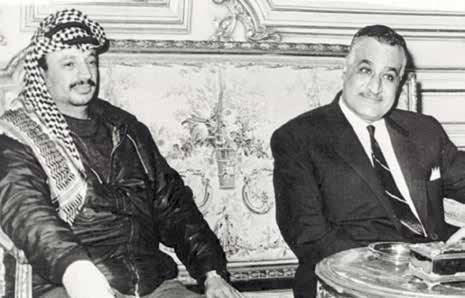
to the left, who wasn’t convinced that Israel should disappear completely. And even those had a problem. Because it turned out that the PLO was just a gateway drug to Hamas, which wouldn’t even pay lip service to the distinction between post-Zionist and Zionist Jews.
The second reason it failed is because the narrative of Israeli criminality and immorality was never true, and most Israelis never bought it. Most Israelis also never accepted the distinction between “good” and “bad” Jews. They never agreed that there was something morally depraved about Zionism, or the Torah or the people of Israel. No matter how hard
that hate is a hard habit to break. If you have been conditioned to believe that your future is dependent on defeating the object of your hate, the only way your opinion is likely to change is if you stop hating. Since 1993, the PLO proved over and over that it is Israel’s enemy, not its peace partner. But accepting the truth meant accepting that the left had brought disaster on the country, and the objects of its hatred—the Jews who refused to renounce any aspect of their identity—had been right all along.
In other words, accepting failure required them to either redefine their class identity or abandon it. The left opted to
As the Israeli right rose to power for the first time in 1977 with the support of religious and working class, overwhelmingly Sephardic Israelis, legitimizing the PLO increasingly became the means to unify the left into a cohesive opposition and social class.
the left tried, it could never get a majority of Israelis to agree with the fundamental principle that guided its policies and actions.
Sure, Israelis want peace. But they don’t think they are the reason peace has eluded the Jewish state and people. They refuse to blame themselves for the aggression and hatred directed against their people and country.
The problem with politics of hate is
alist form of governance. Their ideological roots are not American capitalism. Rather, schooled in elite universities drenched in Soviet-rooted anti-Westernism, the leaders of the new global ruling class are post-nationalist and fully on board with the Soviet view that Zionism, the apotheosis of nationalist aspirations, is illegitimate. To join their club, Israel’s tech titans have been required to disavow their allegiance to their “violent settler” and “ultra-Orthodox” countrymen.
In other words, even when they tried to walk away from the PLO elixir that brought about the disaster of the Palestinian terror state in Israel’s heartland, they were faced with the same choice.
It worked, more or less, until Oct. 7. On that day, two things happened. First, Palestinian terrorists, with their paragliders, Toyota pick-up trucks, RPGs, and sadistic blood lust exploded the myth that technology will free Israel of our need to defend ourselves with the brothers the left desperately hoped to abandon. All the military applications of the Start-Up Nation—the high-tech sensors, signals intelligence, the smart fence, the air force—failed completely on Oct. 7. The only thing that worked that day was the raw heroism and patriotism of the Jews—civilian and security forces who rushed to the south unbidden to save the families and communities being overrun.
The second thing that happened is that the international jet set, the global elite, dropped all distinction between “good” and “bad” Jews. The photos of the hostages from Be’eri and Kfar Azza were torn down with the same hatred that had long been directed toward “violent settlers” or “identifiable Jews” alone. The Jew haters on campuses no longer felt the need to pretend that some Israelis were acceptable.
reinvent itself. It embraced the concept of “Start-Up Nation” as a way to secure its economic and cultural power while maintaining its detachment from the rest of society. By seizing control over the new elixir of high-tech, the left joined the global elite, with its capitals in Davos and Silicon Valley.
But you have to pay to enter the realm of the new globalist elite. The overlords aspire to a post-nationalist, internation-
For the past 11 months, members of the post-Zionist sector have been struggling to get their heads around the shattering of their delusions. Their leaders are trying to double down. But their insistence that the problems lay with Prime Minister Benjamin Netanyahu, or the charedim, or messianic settlers, or imbecile yokels who get teary-eyed at songs about Am Yisrael has fewer and fewer takers. Every protest fizzles after a few days. The thrill is gone. With no “peace” or “Start Up Nation” fig leaves to hide behind, the hatred is all that is left. Thirty-one years since the left embraced the PLO and hate, it must finally abandon it. Israel’s survival depends on it. (JNS)
By Avi Heiligman
Shortly after the dawn of military aviation, airmen realized that bombs dropped from airplanes would give them a strategic advantage over the enemy. Aviation during World War I saw aerial bombing of trenches, but it was during World War II that bombers had a huge effect on the war’s outcome. Strategic bombing campaigns changed the landscape of warfare as the Allies pounded strategic places like oil fields and railroad junctions. When Israel became a country in 1948, the newly formed IAF took the lessons learned from World War II, as well as several seasoned pilots from the war, and used bombing as an offensive weapon against the enemy. From their earliest missions against Egyptian troop columns to the targeted bombings of Hamas and Hezbollah targets and operatives over the years, the Israeli Air Force has used these bombing raids and campaigns to great effect.
The first mission of the Israeli Air Force took place in May 1948 with Israeli fighters halting an Arab column of troops and supplies headed towards Tel Aviv. This also ended the Egyptian bombing of Tel Aviv. In addition to the fighter planes, an American businessman, Al Schwimmer, was able to procure four B-17 Flying Fortress bombers, but only three made it to Israel. On their way to the Tel Nof Airbase from Czechoslovakia in June 1948, the bombers were sent to attack targets in Egypt. One was sent to bomb the king’s palace in Cairo, while the other two attacked an enemy airbase. The damage they caused was minimal, but it was a morale booster for the troops and public back in Israel. Throughout the rest of the war, they flew more than 200 sorties for the 69 Squadron.
Bombers were used extensively during the period between the Six Day War and the Yom Kippur War. Known as the War of Attrition, both sides didn’t gain much ground politically. Israel bombed Egyptian targets in 1970 during Operation Pricha using the F-4 Phantom II that could be used both as a fighter and a bomber. The year prior to the operation, the IAF achieved air superiority over Egypt in fighting near the Suez Canal, but the war still continued as no ceasefire deal was reached. The Pricha missions took place from January to April 1970 and hit targets like enemy training grounds, command posts, missile launch sites, air bases and other strategic locations of military importance.
Some of the most notable Israeli bombings were nuclear reactors of hostile countries. In 1981, eight newly acquired F-16 Falcons took for a 1,200-mile roundtrip to bomb the Iraqi nuclear reactor. Called Operation Opera, the mission was to drop bombs in a precision strike on the reactor located

at Osirik. The surprise mission successfully destroyed the site and set back Saddam Hussein’s plan to obtain a nuclear weapon.
On October 1, 1985, the IAF undertook its longest mission in Operation Wooden Leg. A few days earlier, three Israelis were murdered by Palestinian terrorists, and the Israeli government wanted to retaliate. The mission was for eight F-15 Eagles accompanied by two Boeing 707 tankers to bomb PLO headquarters in Tunisia. They flew over 1200 miles (the trip was longer than it took to get to the Iraqi reactor) to reach the target and dropped precision-guided bombs that totally destroyed the headquarters. Arafat was not there at the time, but some 60 terrorists, including his bodyguards, were eliminated in the raid.
In the current war against Hamas and other Iranian proxies, especially Hezbollah, Israeli planes and drones often carry out targeted bombing missions against top level terrorist operators. Ali Al Qadi was senior Hamas commander with the Nukhba terrorist unit and had previously served time in Israeli jail for the kidnapping and murder of an Israeli. He was released into Gaza as part of the Gilad Shalit deal, but in 2023, the IDF targeted him after his involvement in the planning of the October 7 attacks. A week after the attacks, he was eliminated in an IDF drone strike after the Shin Bet and other intelligence units pinpointed his location.
Many other terrorists who took part in the October 7 attacks were eliminated by the IAF. This includes Ahmed Fawzi Nasser Muhammad Wadiyya, who was taken out by an Israeli airstrike on September 3 of this year. Wadiyya was another Nukhba commander and led a group of terrorists into Israel. He was wanted for his role in the massacre of civilians from a moshav situated near the Gaza border. When the IAF targeted him, he and seven other terrorists were using a hospital to try and protect themselves from attack. The IAF took precautions in the attack, and only the terrorists were killed. Israel has become proficient in bombing raids that are effective in eliminating enemy targets from a distance without too much risk to the attackers. Raids, airstrikes and attacks on enemy personnel and strategic targets have been credited with taking out a lot of enemy capabilities. Most of the pilots and operators rarely get individual credit for their heroism.
Avi Heiligman is a weekly contributor to The Jewish Home. He welcomes your comments and suggestions for future columns and can be reached at aviheiligman@gmail.com.



MAJOR APPLIANCE REPAIR
Servicing Washers , Dryers , Refrigerators , Dishwasher, stoves
All work guaranteed. Call 718 3762288
VACUUM SALES AND REPAIR
All areas call Max Flam 718-444-4904
THE LEATHER SHOPPE
The spot for all your custom leather Judaica. Tallis/tefillin bags, lulav and esrog bags, havdallah sets, challah covers, shtenders, pesach sets, matzah/afikomen bags. WhatsApp: (732) 523-0007 or email: theleathershoppe732@gmail.com for a full catalog. We ship.
MY MOTTO IS DON’T WAIT TO buy real estate
Buy real estate and wait
Your realtor for life
516-784-0856 Alexandra at Realty Connect USA
PEACEFUL PRESENCE STUDIO
Men’s private yoga, Licensed Massage & Holistic Health Guidance 436 Central Ave, Cedarhurst Info. & free video training www.peacefulpresence.com 516-371-3715
READING SPECIALIST
Trained in Orton Gillingham and many multisensory reading programs. Specializes in dyslexia and auditory processing disorder and other reading difficulties.
Rhess.education@gmail.com
Call or Text (516) 220-2059
GERBER MOVING
FULL SERVICE MOVING
Packing Moving Supplies
Local Long Distance. Licensed Insured
1000’S Of Happy Customers
Call Shalom 347-276-7422
HANDYMAN AVAILABLE
For big or small jobs, Sheetrock, carpentry, painting, electrical, plumbing, install & repair appliances
Call Ephraim at 347-593-4691
MANAGEMENT STAFF WILL ASSIST you with: * Obtaining Medicaid and Pooled Income Trust
* In-home Assessments, Individual and Family Counseling
* Securing reliable home care assistance
* Case and Care Management services
Dr. S. Sasson, DSW, LCSW (718) 544- 0870 or (646) 284-6242
HAIR COURSE:
Learn how to wash & style hair & wigs. Hair and wig cutting, wedding styling Private lessons or in a group Call Chaya 718-715-9009
ZEVIZZ WOODTURNING JUDAICA Challah knifes, batei mezuzah, besamim holder, kiddish cups, havdalah candle holders, yad for sefer torah, pens, stenders, bowls and more 952-356-2228
ECO-FRIENDLY CONTRACTOR
Big or small jobs. from conception to completion windows, doors, plumbing, electrical, Kitchen Cabinet countertop. petitions, Bathrooms, tiling. additions , painting, any construction work. call MICHEL 9175383763 Shomer Shabbos
CEDARHURST
Don’t miss this opportunity!
4 Bedroom 21/2 Bathroom House Perfectly located in Cedar Bay Park, walking distance to all. Oversized property for expansion, A Must See. LOCATION, LOCATION. For More Info call (516) 881-7727 Leave Message
WOODMERE
Beautiful, brick, colonial boasting 5 bdr 3.5 Bth in pristine condition. Excellent location, near all! Move right in! RCUSA 516-512-9626
WOODMERE
Introducing a stunning 14-side hall colonial home in the Hewlett Woodmere School District. Formal living room, formal dining room, den with a skylight. Eat in Kitchen, two sinks, a double oven, a warming draw and a microwave. First floor bedroom, a full bathroom and laundry room. Two-car garage. Upper level has four bedrooms, two full bathrooms. Finished basement with playroom, storage and utilities. Well-groomed exterior with porch adjoining the master bedroom. Hardwood floors and back patio. Central air conditioning, inground sprinkler system, alarm system. Close proximity to schools, shopping centers, restaurants, and transportation options. Mark Lipner Associate Broker Berkshire Hathaway Laffey International 516-298-8457 mlipner@bhhslaffey.com

CAN’T AFFORD YOUR PROPERTY TAXES? MORTGAGE?
Must sell for any reason? Call for FREE Consultation. Call now 212-470-3856
Cash buyers available!
WOODMERE
Spacious home within school district 14 with exquisite upgrades and central air conditioning, splendid kitchen with dual sinks, five bedrooms. Main level encompasses a spacious great room, office space, complementing the formal living and dining areas. Unfinished basement, detached garage. Expansive lot, measuring 80 x 100. Conveniently located near shopping, railroad, restaurants and places of worship. Mark Lipner Associate Broker Berkshire Hathaway Laffey International 516-298-8457 mlipner@bhhslaffey.com
WOODMERE ACADEMY LOCATION
Unique Find! Designer renovated 10 bdrm 6.5 bth col. Stunning pvt 1st flr guest suite w/2 lg bdrms, full bth, & addl kitchen. POR.
Chana Bienstock
Miller Realty, inc. 516-449-9692
Entrance off Gourmet Glatt lot, second floor, shared bath, ideal for therapist/ office work, includes utilities, $600. Call 516-371-3715
CEDARHURST – 1200SF Retail Space
Corner Cedarhurst & Chestnut Av Next to LIRR and minyanim Call/text/Whatsapp: 516-206-1100
BIG FULLY RENOVATED, Woodmere, spacious 4bedroom 2 full bath split level.2 car garage +driveway. Backyard on water SD#14. W&D. Tons of storage space. 347-517-3552
DON’T GET STUCK WITH A TWO STORY HOUSE YA KNOW, IT’S ONE STORY BEFORE YOU BUY IT BUT A SECOND STORY AFTER YOU OWN IT!
Call Dov Herman
For An Accurate Unbiased Home Inspection
Infrared - Termite Inspection
Full Report All Included NYC 718-INSPECT Long Island 516-INSPECT www.nyinspect.com
DELIVERY PERSON NEEDED to deliver this Newspaper every Thursday morning to locations in Brooklyn. Must have Mini van or SUVand availability to work Consistently every week. Good pay Please email gabe@ fivetownsjewishhome.com or call (917) 299-8082
SEEKING ELA TEACHER Teaching position for Gr. 6. Mon.-Thurs., afternoon hours. Far Rockaway/5T area. Great salary, warm, supportive environment. Training in our curriculum is provided. Teachersearch11@gmail.com
BNOS MALKA IS SEEKING Assistant teachers, AM or PM. Also seeking Resource Room teacher. M-Th 8:00-12:30, F 8:00-11:00. Special Education degree preferred. Must teach both Hebrew and English subjects. Send resume to rungar@bnosmalka.org

classifieds@fivetownsjewishhome.com • text 443-929-4003
REGENTS EXPERT
Tutoring regents in Algebra and Geometry A Darchei Torah instructor. Guaranteed results
Text 347-491-8045
WhatsApp 347-767-1755
5 TOWNS BOYS YESHIVA
Seeking Elem Gen Ed Teachers Excellent working environment and pay. Only lic/exp need apply. Email resume to yeshivalooking@gmail.com
SEEKING ASSISTANT teachers for elementary General Studies classes for ‘24-’25 school year. Candidates should have skills to take over for teachers if needed. M-Th, PM hours, strong support. Far Rockaway area. Send resume to teachersearch11@gmail.com
BOOKKEEPER
Excellent growth potential, Frum environment, Excellent salary & benefits. Email resume to: resumetfs1@gmail.com
MDS REGIONAL NURSE
5 Towns area Nursing Home management office seeking a Regional/Corporate level MDS Nurse to work in our office. Must be an RN. Regional experience preferred. 2-3 years MDS experience with good computer skills required. Position is Full Time but Part Time can be considered. Great Shomer Shabbos environment with some remote options as well. Email: officejob2019@gmail.com
ACCOUNT MANAGER
Long Island. Handle WhatsApp sales, cust svc. $50-$60k + comm. Apply with resume: hr@getpeyd.com

A care management agency is seeking an experienced professional with expertise in CCMP Health Home specifically.
This is a fantastic opportunity for the right individual to contribute meaningfully in a dynamic environment.
Please email resume to employeeccmp@gmail.com or call 347-687-3618 & L.M.
HELP WANTED
DEVELOPMENT ASSISTANT
A multi-tasker needed for general office work. The ideal candidate is someone who is detail-oriented, responsible, and can take ownership. Looking for someone who is eager to learn, and expand his/her skill set while possessing the ability to work independently and as part of a team. Experience with Excel required. Five Towns location. In-office position only, not remote. Please send resume to 5tpart.timecareer@gmail.com
YESHIVAT KOL YAAKOV
In Great Neck, NY, is seeking general studies teachers for both the elementary and middle schools, for the upcoming academic year. Mon-Thur afternoons. Competitive salary, warm and supportive environment. Send resume to m.kalati@kolyaakov.org
SPECIAL ED TEACHER
HASC seeks Special Ed Teachers for our Early Learning Program. Warm, supportive and enjoyable working environment. Great Pay and Benefits! Sign on Bonus! Referral Bonus! Please email resume to jobswd@hasc.net
NEFESH MATCHMAKING (Chesed) Free Shadchan service for the special needs community. We help those with Medical, Physical, Emotional or Intellectual challenges find their spouse. Strictly confidential. Email for more info. Nefesh.matchmaking@gmail.com
SHMIRAS HALASHON
Text 516-303-3868 with a time slot of your choice to be careful on lashon hara. Be a part of the 1,000 people for klal yisroel!
















By Nati Burnside
If you don’t already know who Chef
Uri Elbaum is, you are about to.
Famous in the kosher community for being the executive chef for a group that owns four restaurants in the Deal, NJ, area, Elbaum is making the jump from social media sensation to national television personality as he was one of the competitors on the upcoming season of a popular cooking show on Fox.
Elbaum’s restaurants (The Butcher’s Steakhouse, Primavera, Smash, Abu-Laffa) are favorites in the Deal area, but he is also known online for his funny kitchen videos, some of which have been viewed tens of millions of times across various platforms. It was those videos that drew the attention of the people at the famous show and how he ended up as one of the contestants.
Taking a wider glance at how he got to where he is today, Elbaum grew up in a Chabad yeshiva in Buenos Aires, Argentina. He credits the intense learning schedule with preparing him for the hard work that he would later demonstrate while working on his culinary craft. In his few hours of spare time, he worked at the counter of a pizza place. One day, the pizza guy didn’t show up, and Elbaum seized the opportunity. He never looked back from there.
At the age of 18, he knew he wanted to be a chef, but he didn’t think that he
was in the right place.
“South America wasn’t the place for me,” Elbaum said about his early life. “I heard that in America you can make it if you’re persistent.”
With that in mind, Elbaum did something that many people would think of as crazy. He sold his only possession of value (his iPhone) and used the money to fly to Miami. He spoke no English, had no friends or contacts, and had no plan. What he had was a backpack, $50 cash, and a dream.
“I found myself sleeping on a park bench for a few nights. It was a low moment, and it was scary – I’m not going to lie,” said Elbaum with what sounded like happiness in his voice. “But I remember that night looking up at the sky and smiling. I hadn’t had a single bite to eat in two days. But I knew that this was part of the dream. And I’m glad I did it. If I could do everything over again, I’d go back and sleep in that park.”
Elbaum bounced around Miami for a while trying to make it work. His biggest problem was that nobody wanted to hire a chef in the United States who didn’t speak English. Eventually, he found a place and offered to work for free to prove himself. In just a few days, he was promoted to head chef of his first restaurant.
With no experience running a kitchen, Elbaum had to figure a lot of things
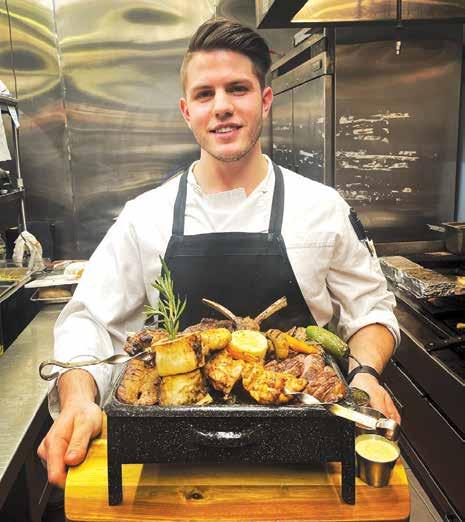
out on the fly. But, to be fair, that’s something he had always done. He never had the money to go to culinary school and had learned everything he knew on the job, something he thinks of as an advantage. Elbaum believes he has an extra layer of creativity and ownership over his skills because he nurtured them himself.
From there, as they say, the rest is history. Less than a decade later, Elbaum is now 28 years old and living his dream. He still has a profound attachment to Judaism and is happy to work exclusively in the kosher world as a chef in many capacities (restaurants, Pesach programs, private events).
“It’s a beautiful thing for me that I can make food for my people in kosher restaurants,” Elbaum said about his current place in life. “What’s the first thing a Jew does before he eats? Makes a bracha. What’s the last thing he does before he leaves? Makes a bracha. Hav-
ing people say a bracha on my food is a great feeling.”
But there are plenty of people that get to be head chefs at a restaurant (or four). Very few people get selected to make it to the big stage and perform their craft live on television, especially on a show as famous as Hell’s Kitchen.
“There are three things that it really took to do this,” said Elbaum about the process that brought him here. “The first is hard work. I work 18-20 hours a day. The second is believing, having that emunah in your work and in G-d that everything will develop. And the third is staying hungry all the time. Know what you want and go for it. Everything falls in place with those three things.”
For Elbaum, being a contestant on Hell’s Kitchen is a long time coming.
“When I was a little kid, I used to watch Gordon Ramsey on the show. I really wanted to be there. I saw myself doing it,” Elbaum recalled about his early
ambition. “I felt honored to be selected, but it’s all because of Hashem. I used to say that one day I’d be on TV cooking with Gordon Ramsey. People looked at me like I was joking. It was like a kid who says they are going to be an astronaut and go to space.”
This upcoming season of the show (the 23rd installment) is actually a first for the franchise in two different ways. The title is “Hell’s Kitchen: Head Chefs Only” because in all previous seasons, the contestants came from all types of positions. This time, only those that run a kitchen (or kitchens, in Elbaum’s case) of their own were eligible to compete. As the contestants compete in teams and are forced to cooperate with each other and rely on their teammates during challenges, the idea of everyone having to revert back to their previous lives as just another cog in the wheel should be intriguing to viewers.
The second way that this season stands out is that it is the first time that the show has been based on the East Coast. With filming taking place in Connecticut, Elbaum was able to make a special stop on his way to and from the competition.
“I stopped at the Ohel (the gravesite of the Lubavitcher Rebbe, Rabbi Menachem Mendel Schneerson) the day before and the day after the show,” Elbaum said, his connection to his Chabad heritage still clearly active. “It was my way of showing how thankful I was for the opportunity.”
chef coat that said my name, my Jewish star necklace, and my kippah.”
Whether the tefillin wearing may make it onto the screen or not, more crucial to the plot were the issues that Elbaum was going to have with tasting some of the food. He refuses to taste anything that included any non-kosher
delicious dish and you won’t even know I’ve never cooked it before,” said Elbaum with a flair of his trademark confidence. “That’s part of my job. It’s a big challenge, but that’s the job.”
In general, Elbaum says that he tried to live by some advice that he got just before he left.
“My rabbi told me to both make the Jews watching at home proud of me and to remember that I should be proud to be Jewish.”
“As an executive chef with many years of experience, you can bring me a giraffe and I’ll make you a beautiful, delicious dish and you won’t even know I’ve never cooked it before.”
What glimpses of his Judaism can you expect to see on the show?
“I put on tefillin every single day wherever I am,” Elbaum said in true Chabad fashion. “That was one thing that I wanted to make sure I kept doing on the show in front of the cameras. I put on my tefillin in the dorms with my

animals, a hard task given him appearing on a show which usually covers a wide variety of foods. That left him to cook food without actually tasting it on occasion.
“As an executive chef with many years of experience, you can bring me a giraffe and I’ll make you a beautiful,
Elbaum is no stranger to cameras, as his internet following would suggest. He said that the social media experience certainly helped him not be nervous in front of all the lenses and lights. All in all, he felt that the show was exactly the same as he thought it would be. The competitions were just as fierce, Chef Ramsey was just as fiery during service times (and nice all other times), and it was an incredible experience.
“Imagine standing in a line, and Chef Gordon Ramsey is asking you to make beef wellington,” said Elbaum about one of Ramsey’s most famous tests on the show. “It’s unbelievable. As an Argentinian, I felt like I was playing soccer with Messi.”

